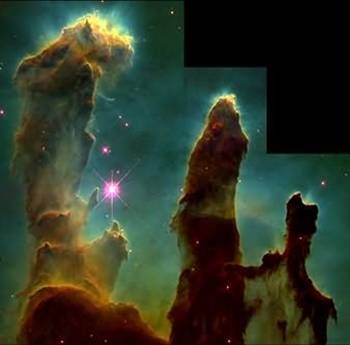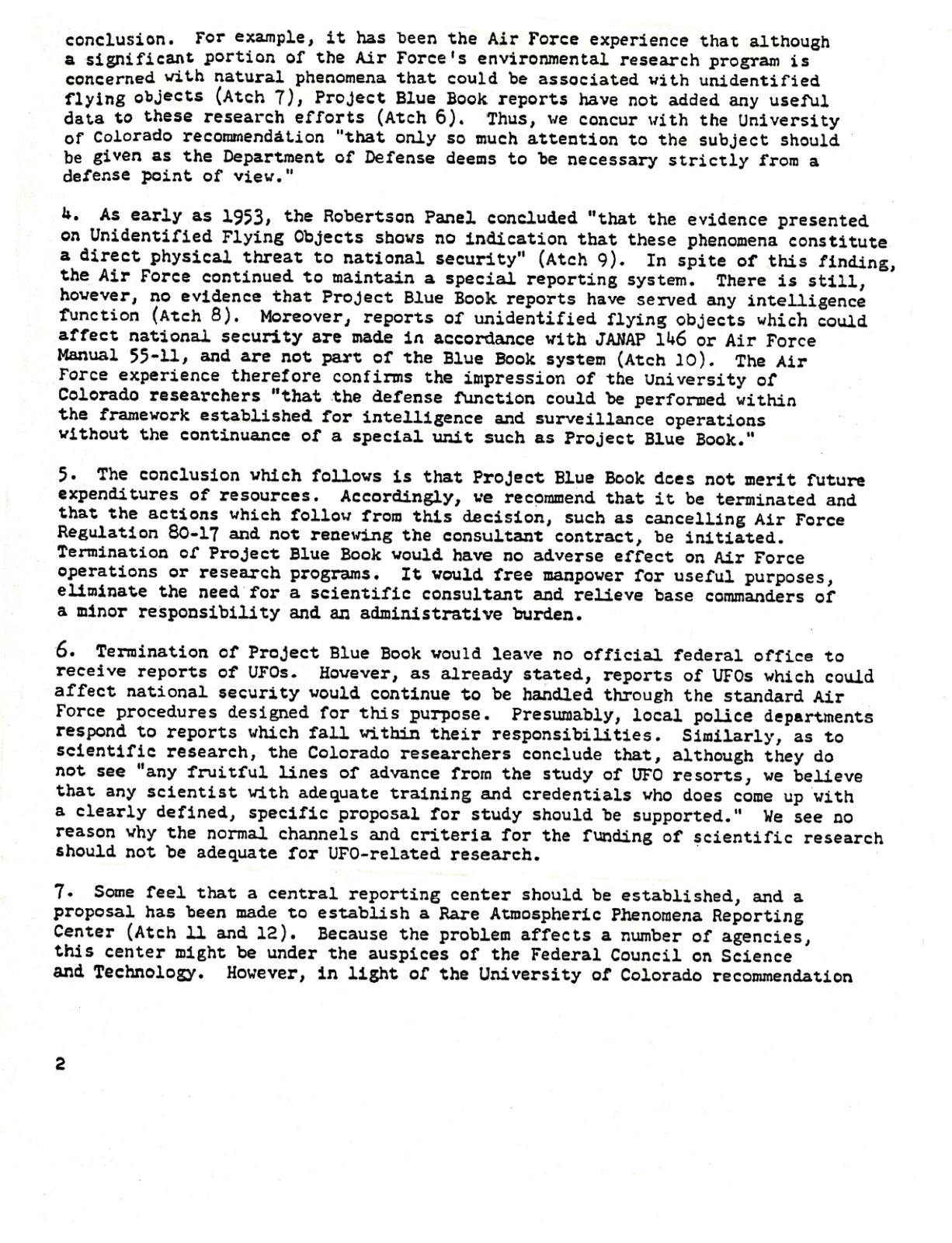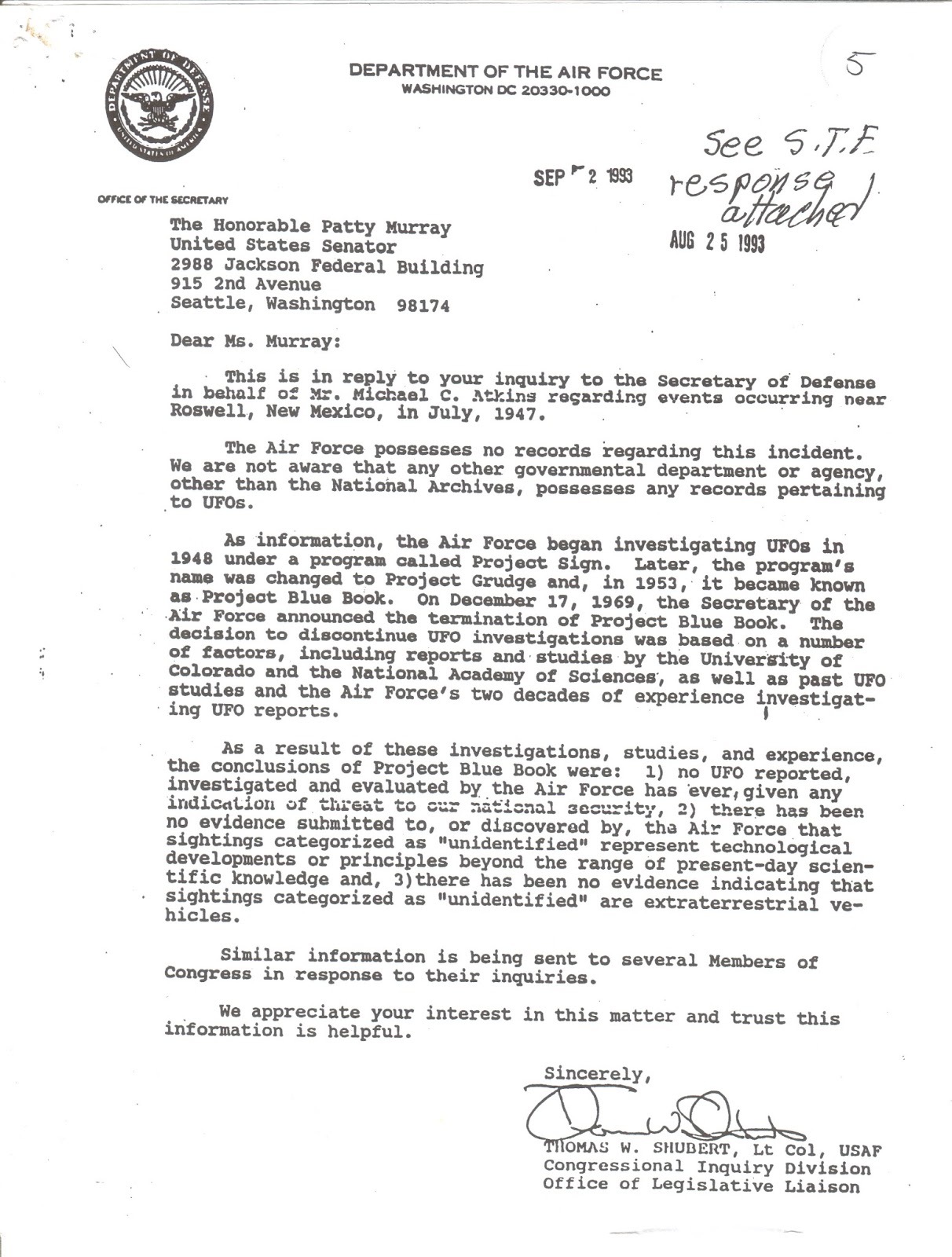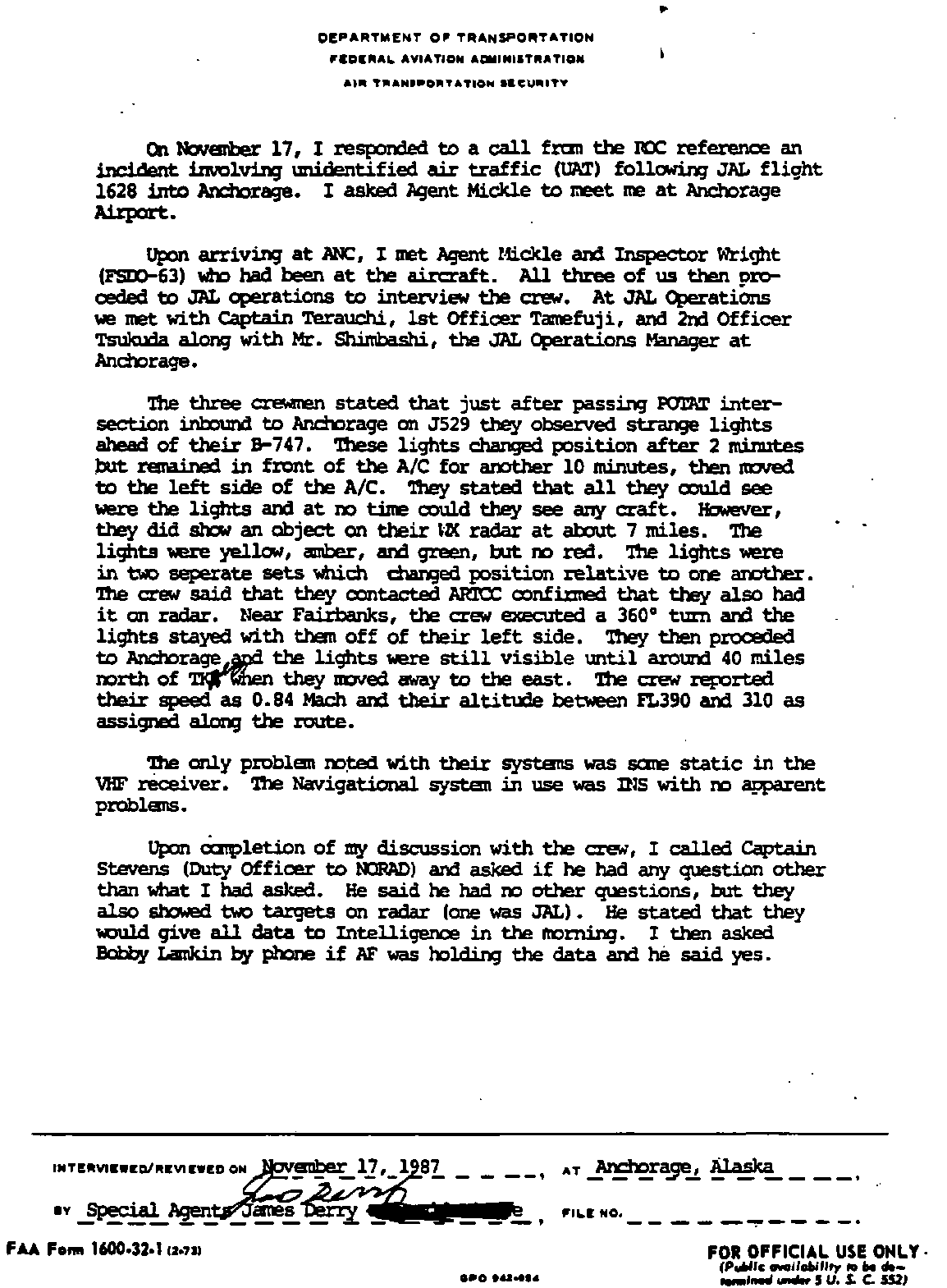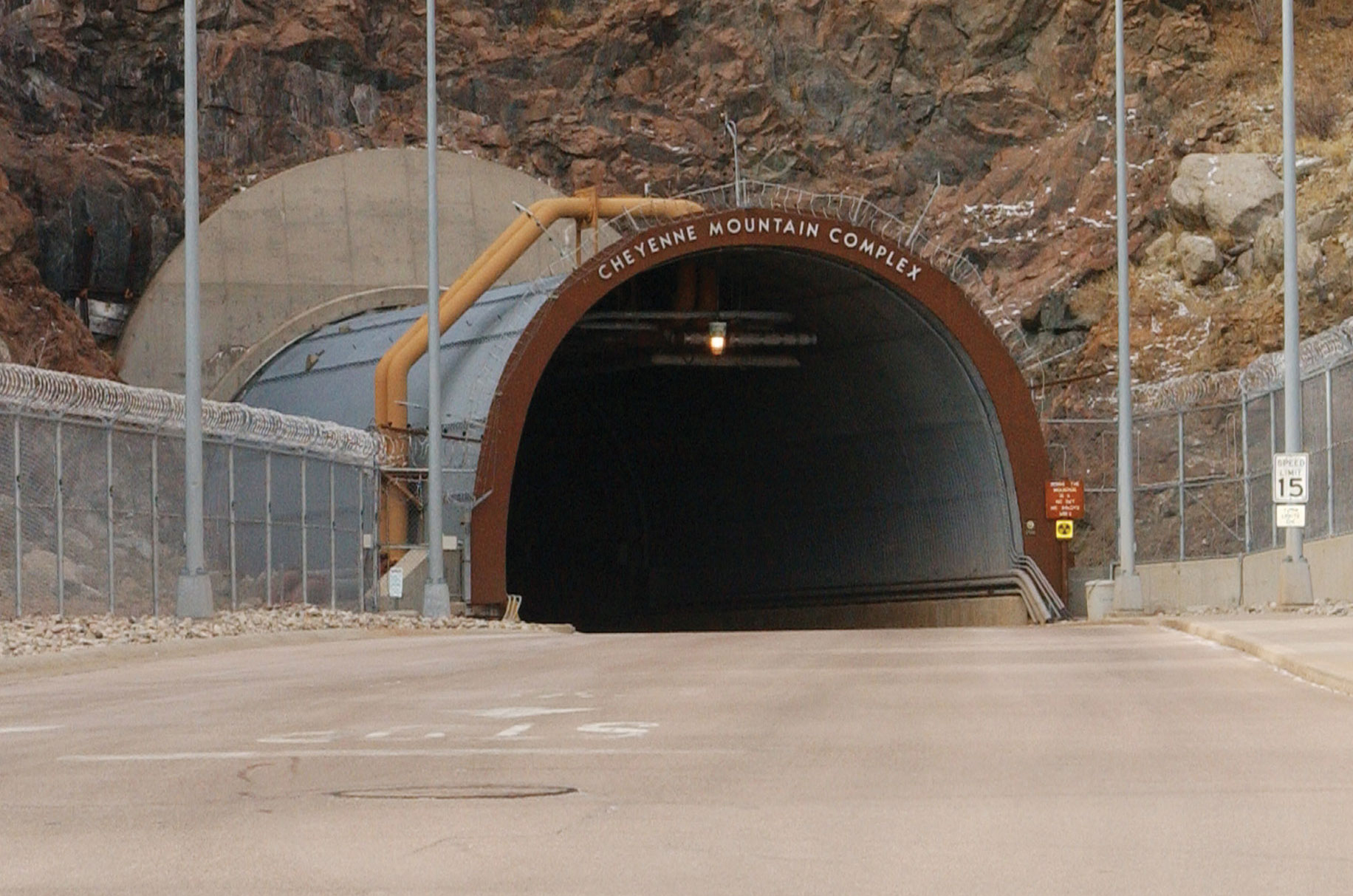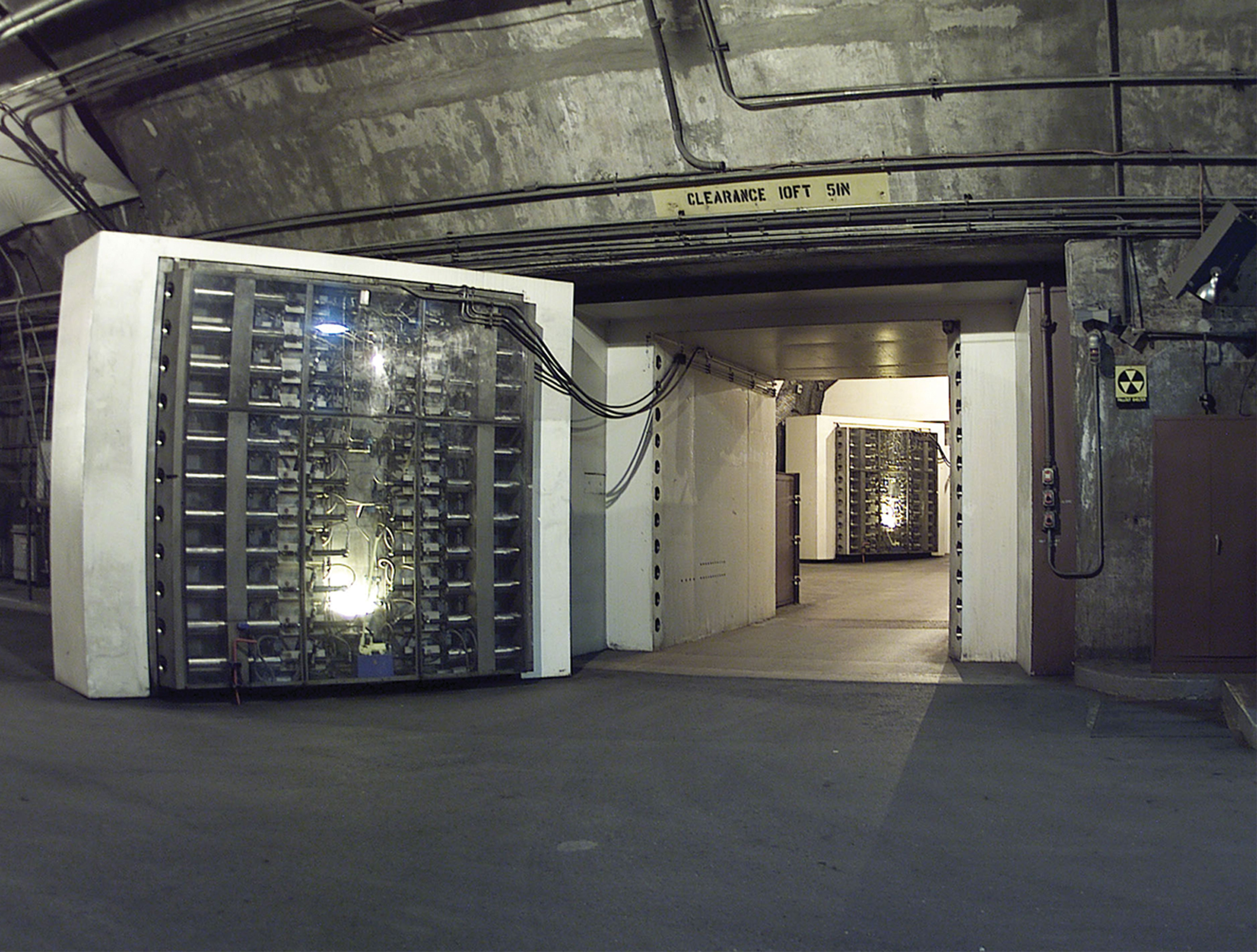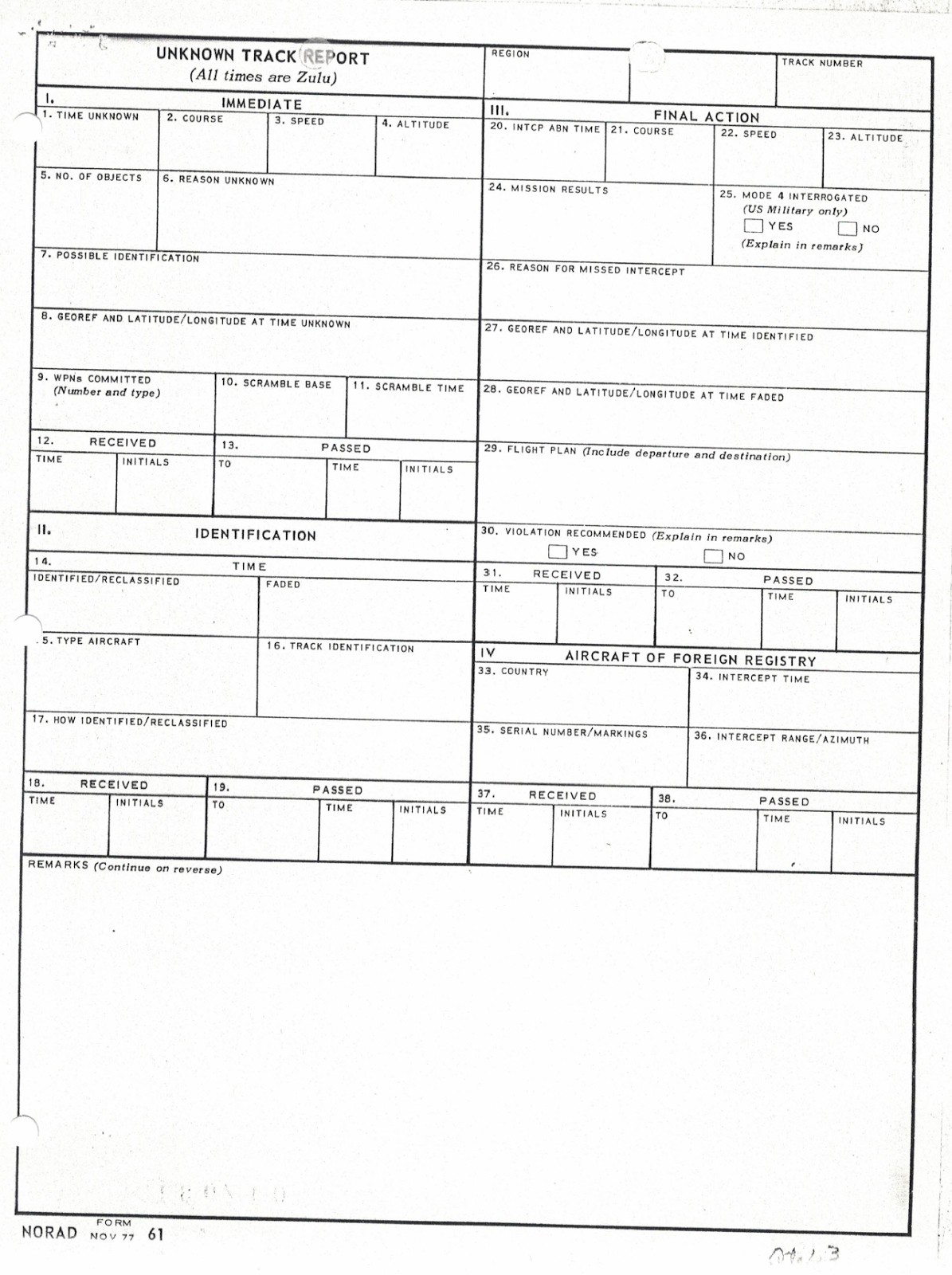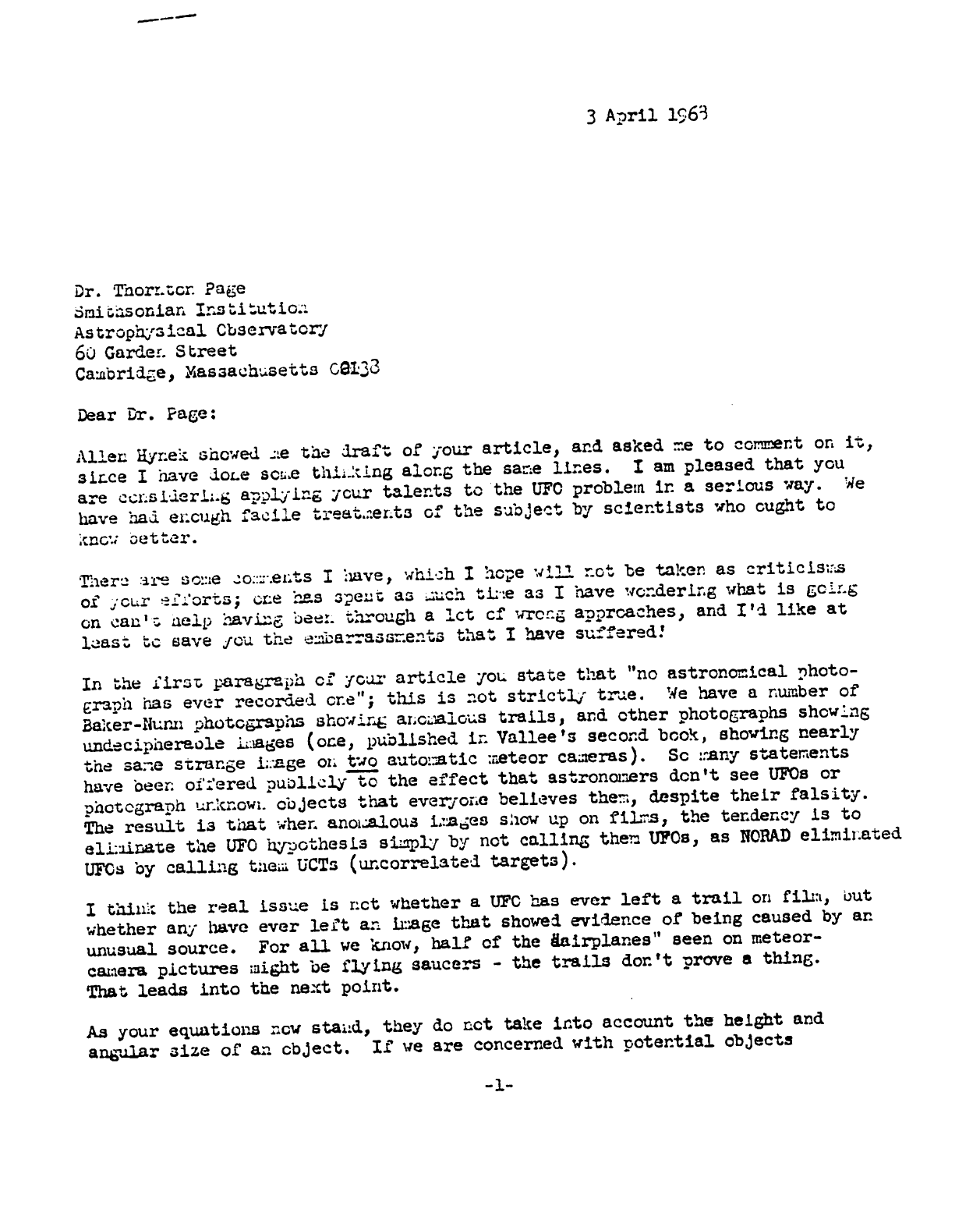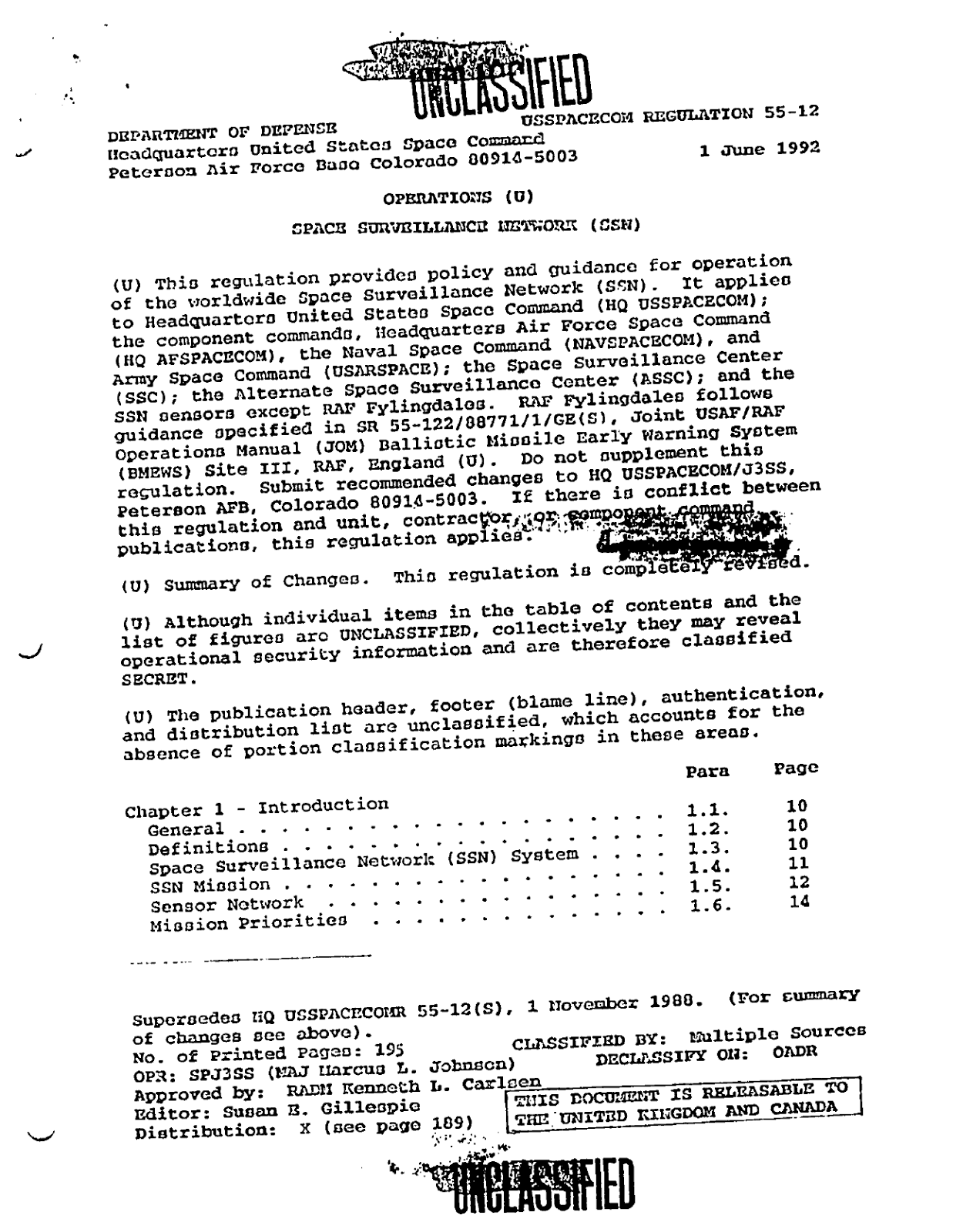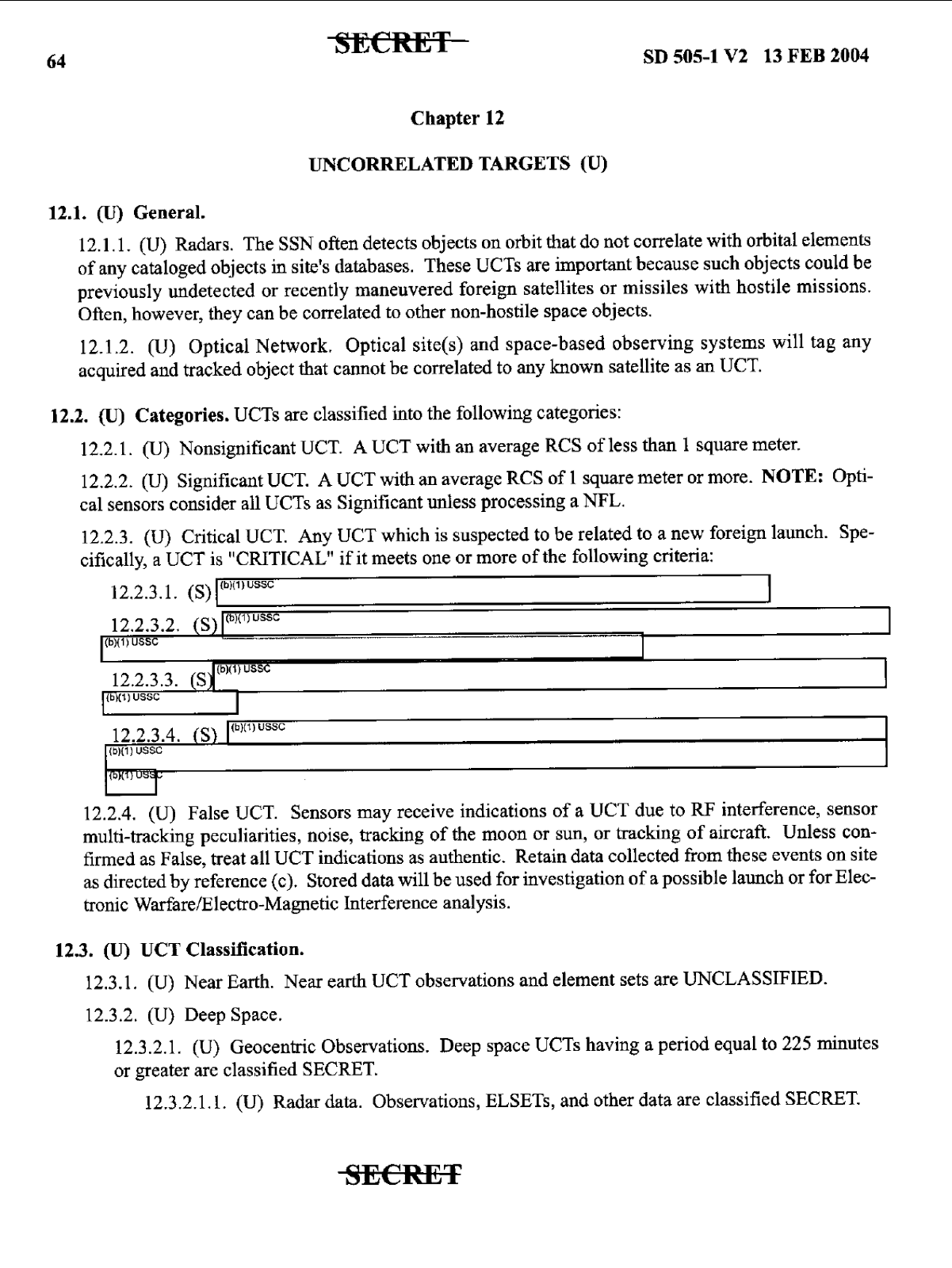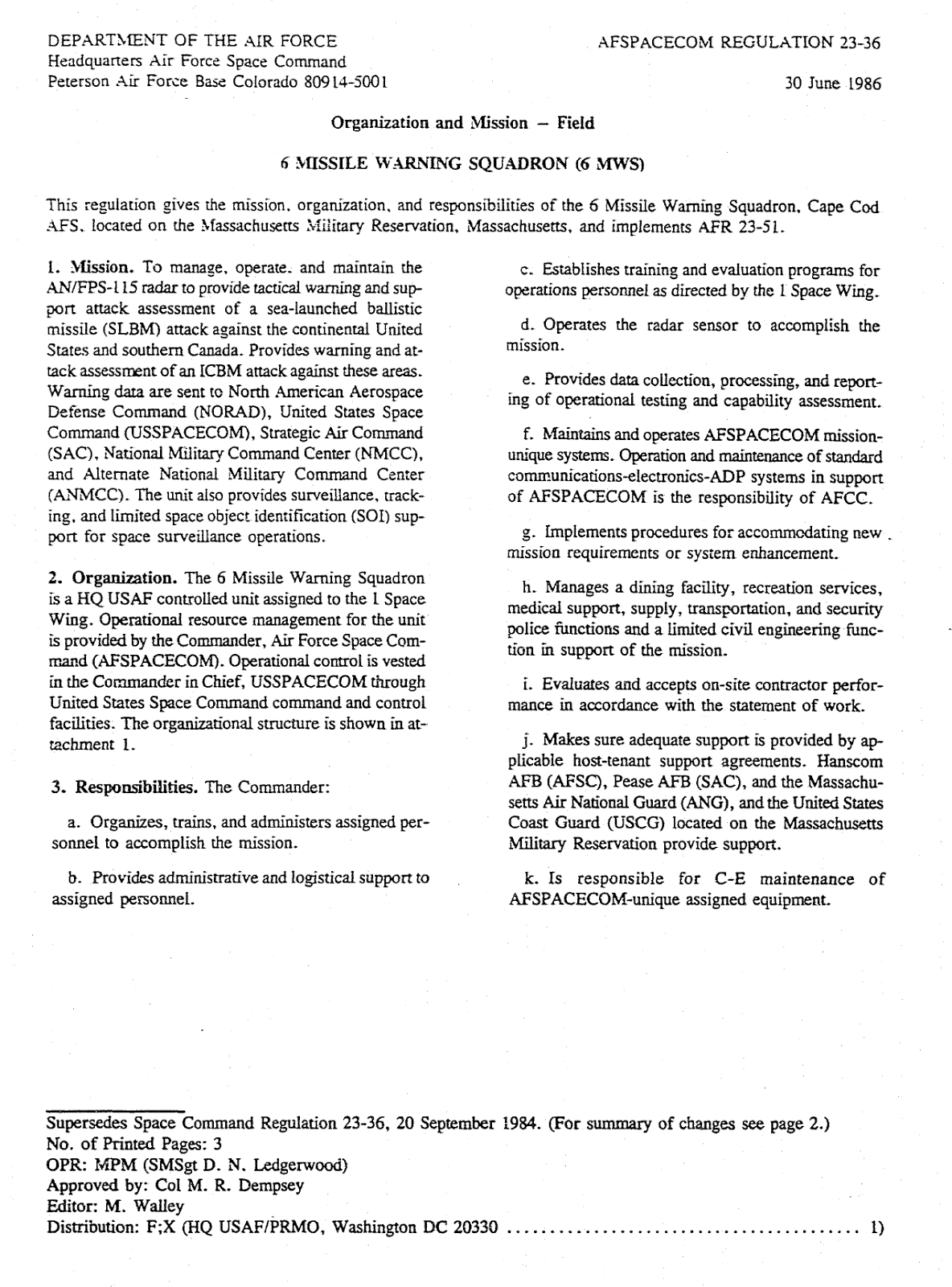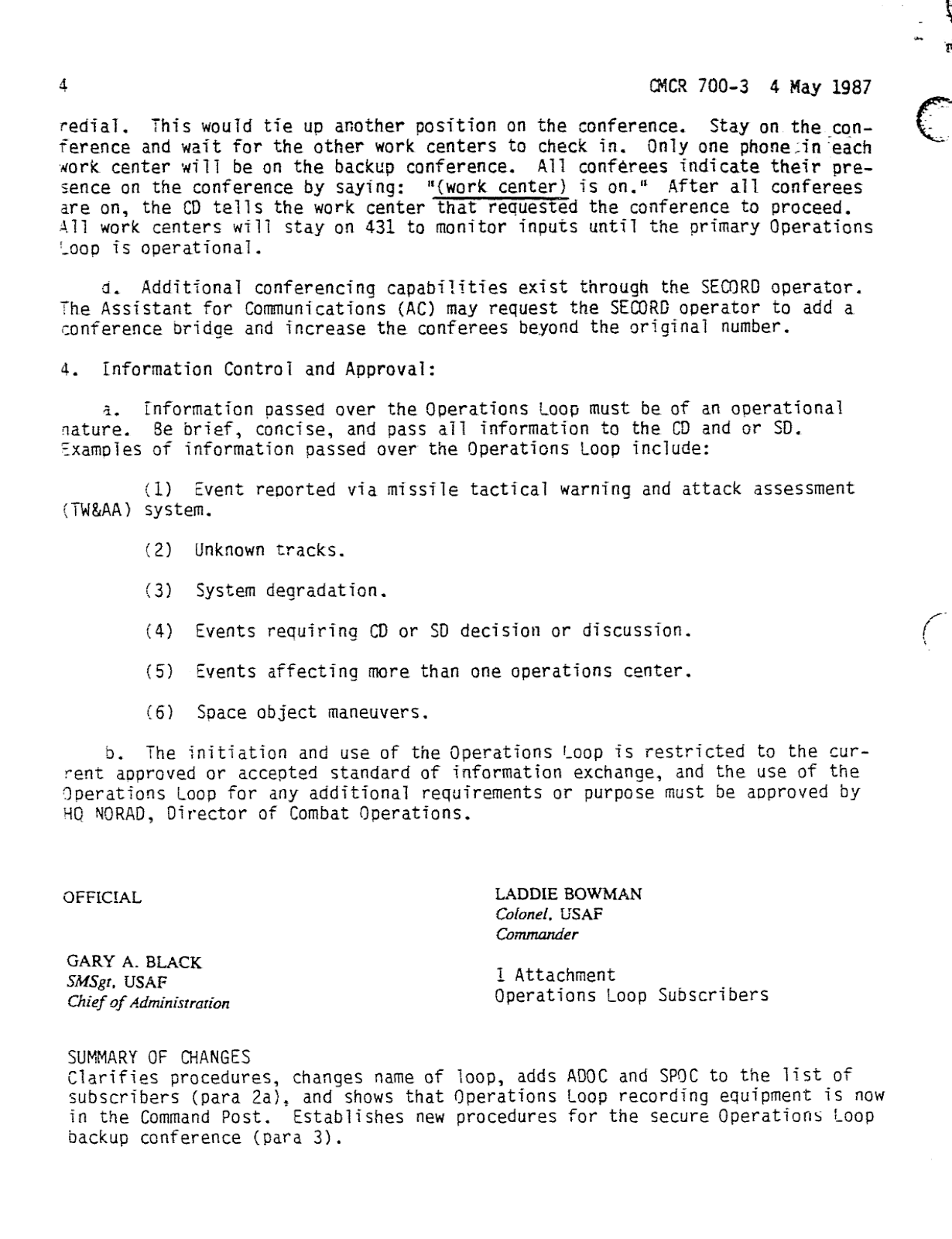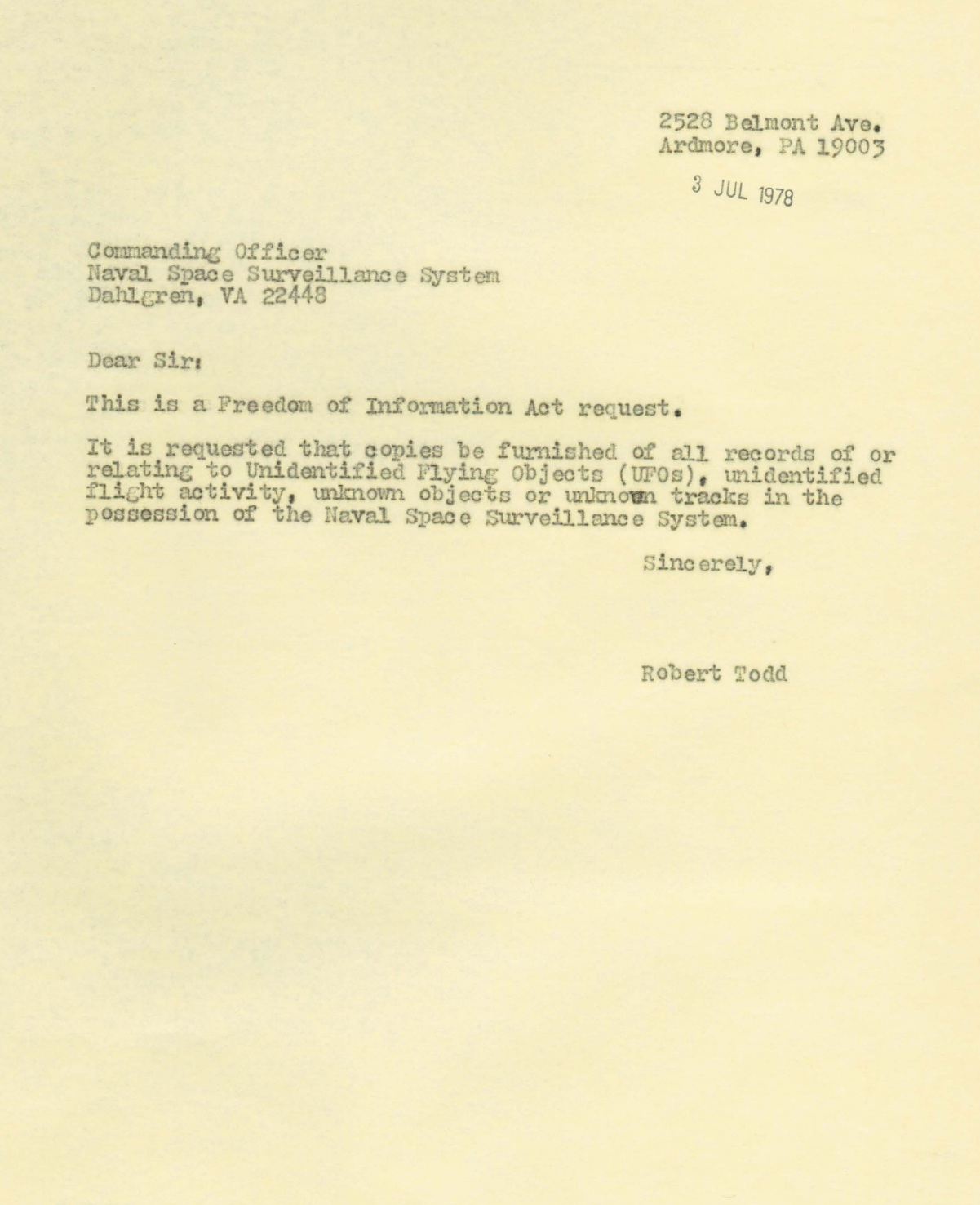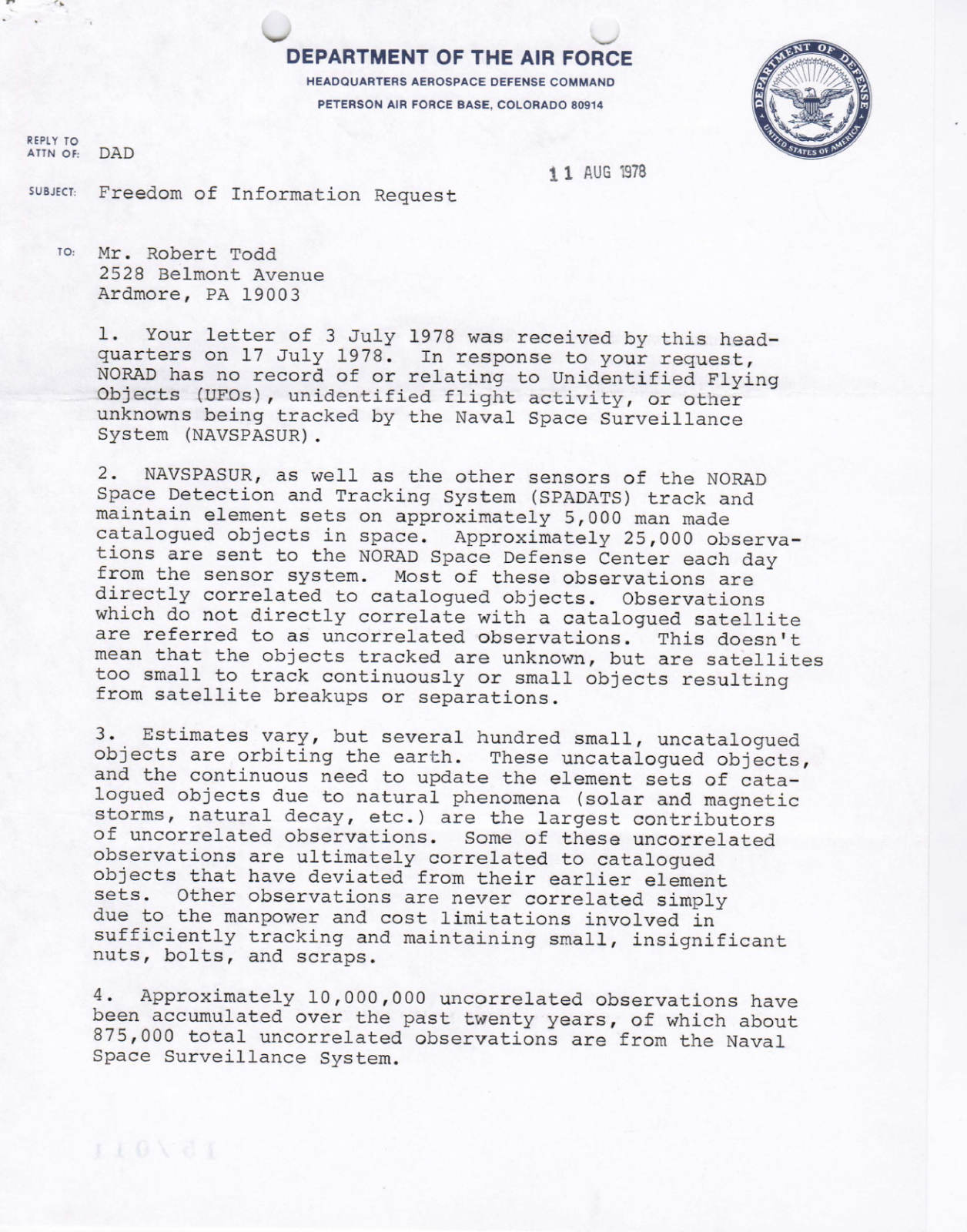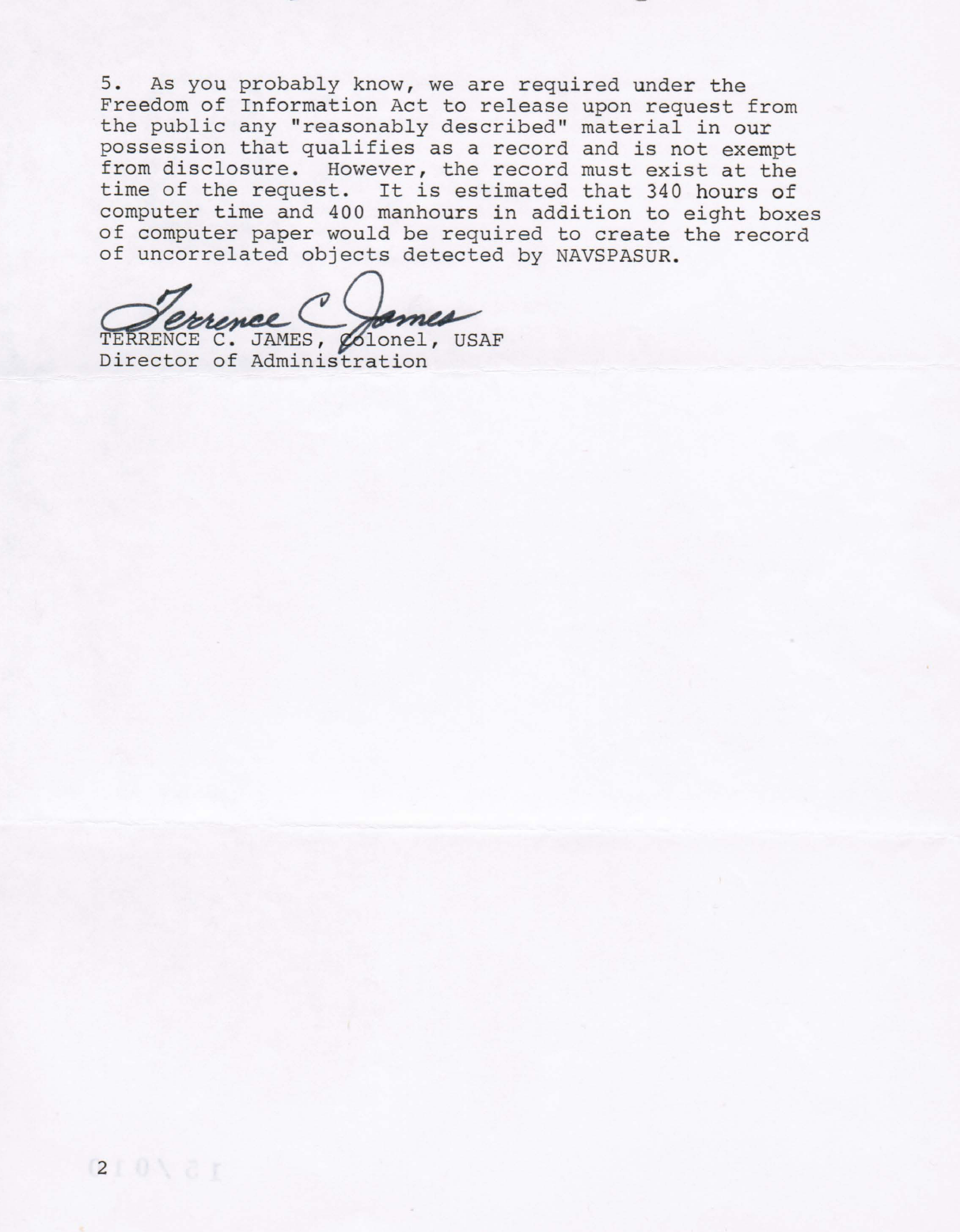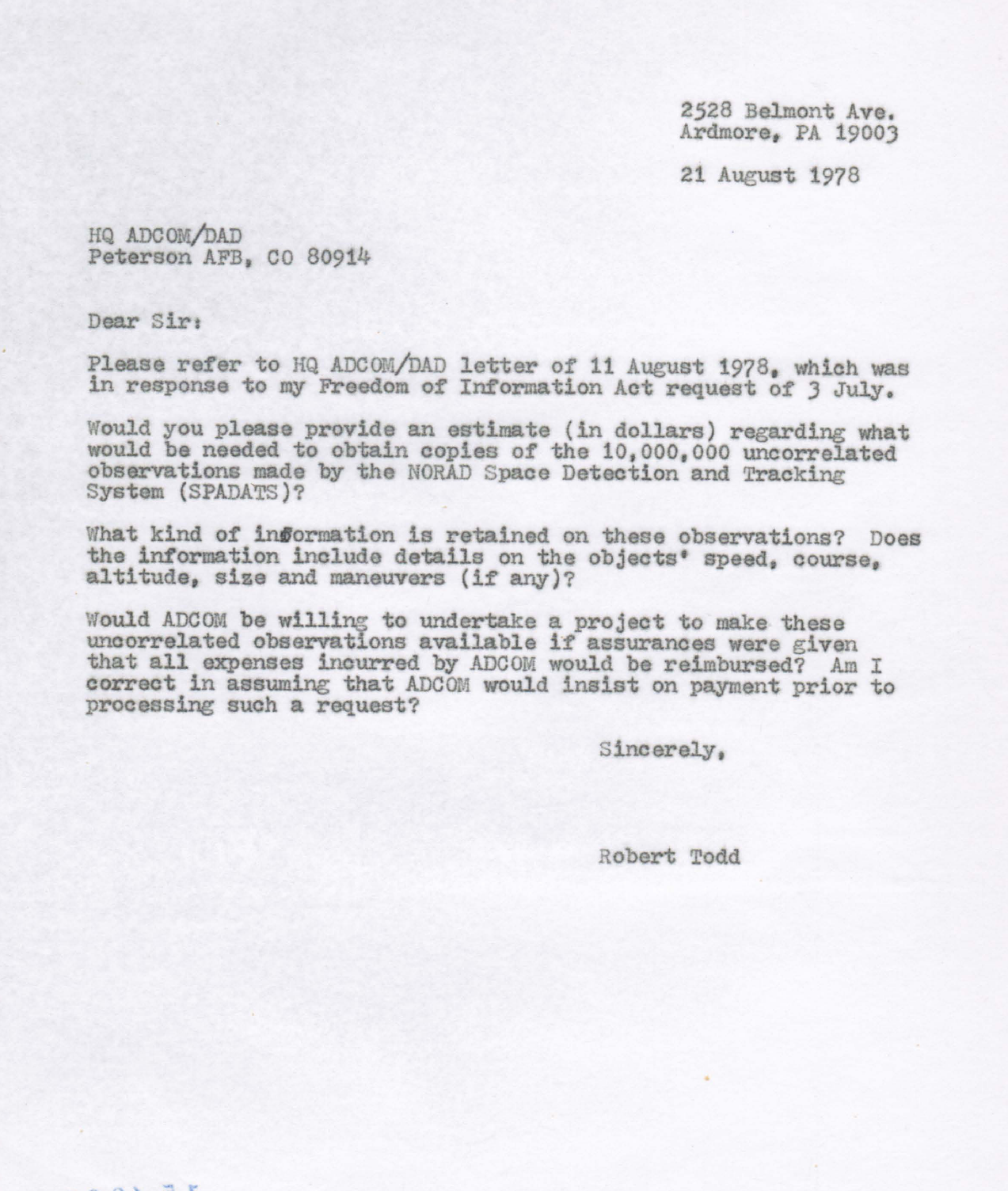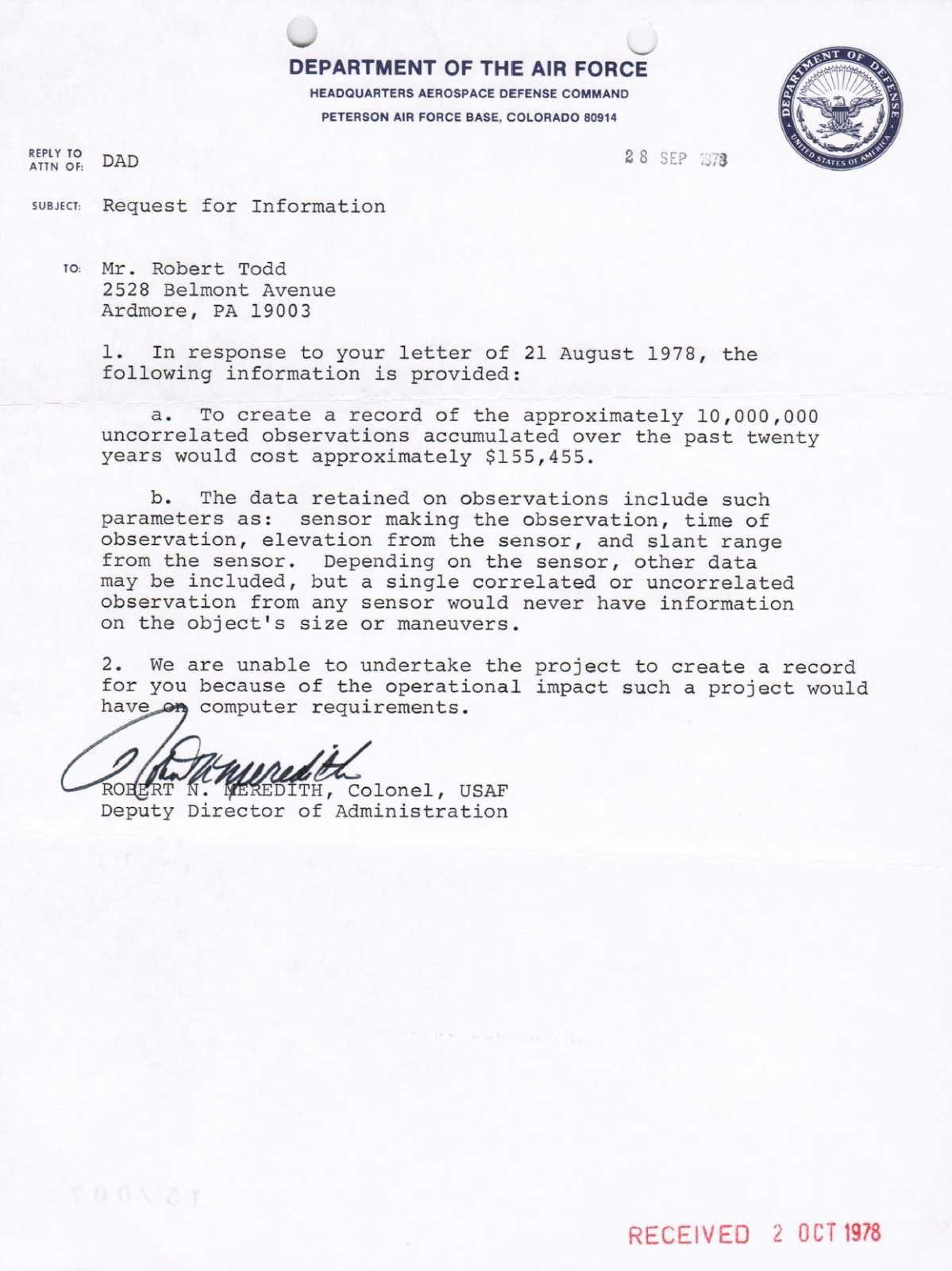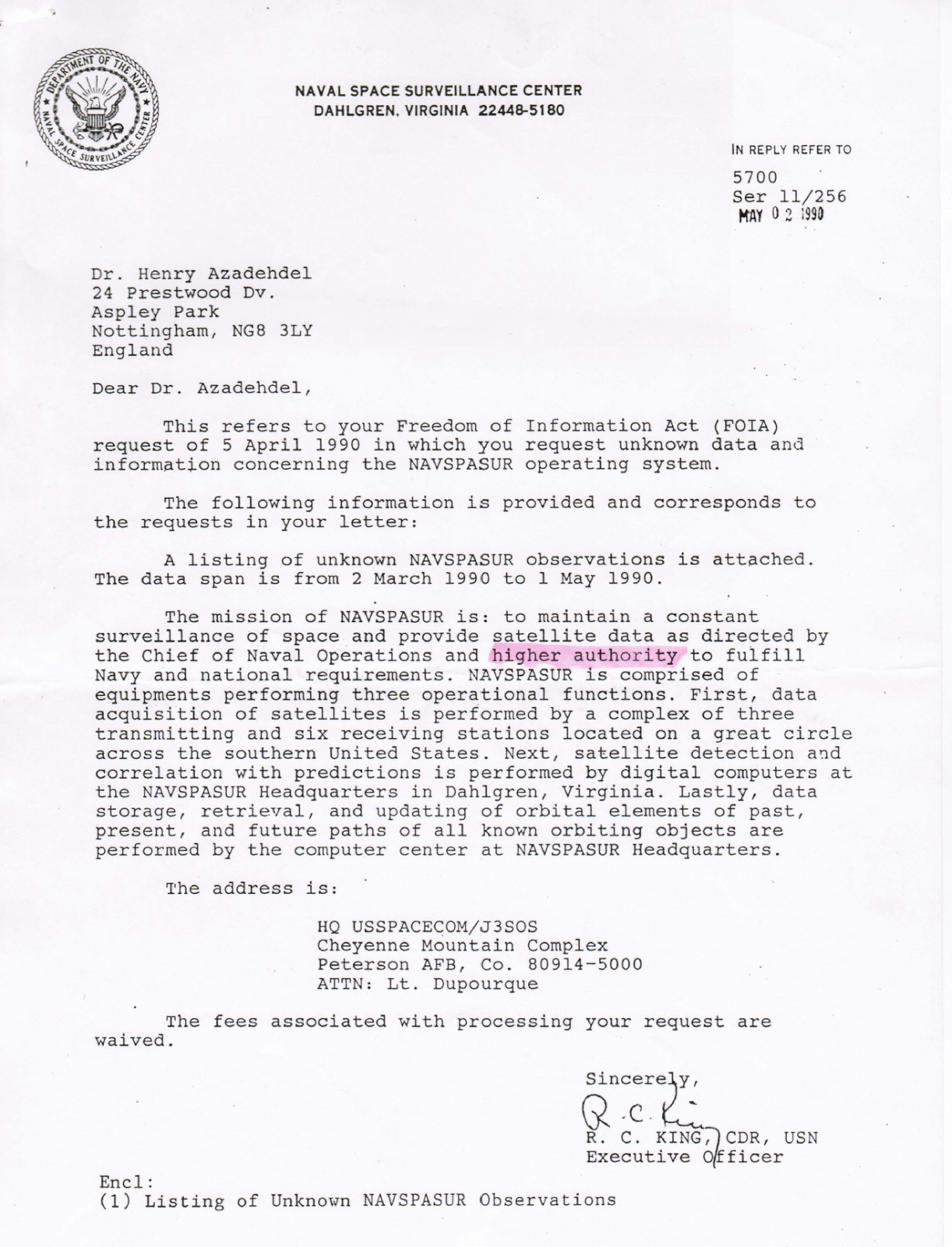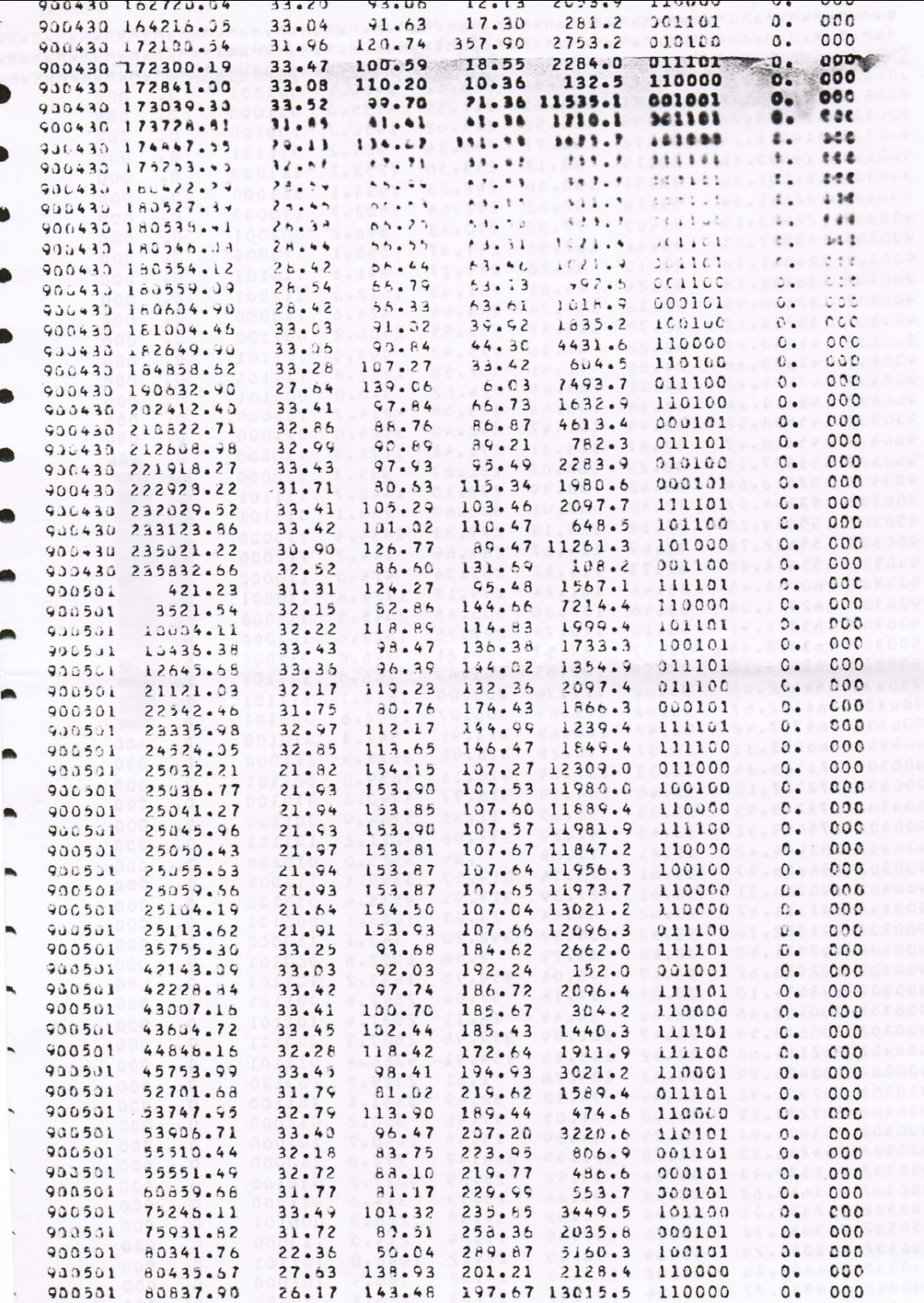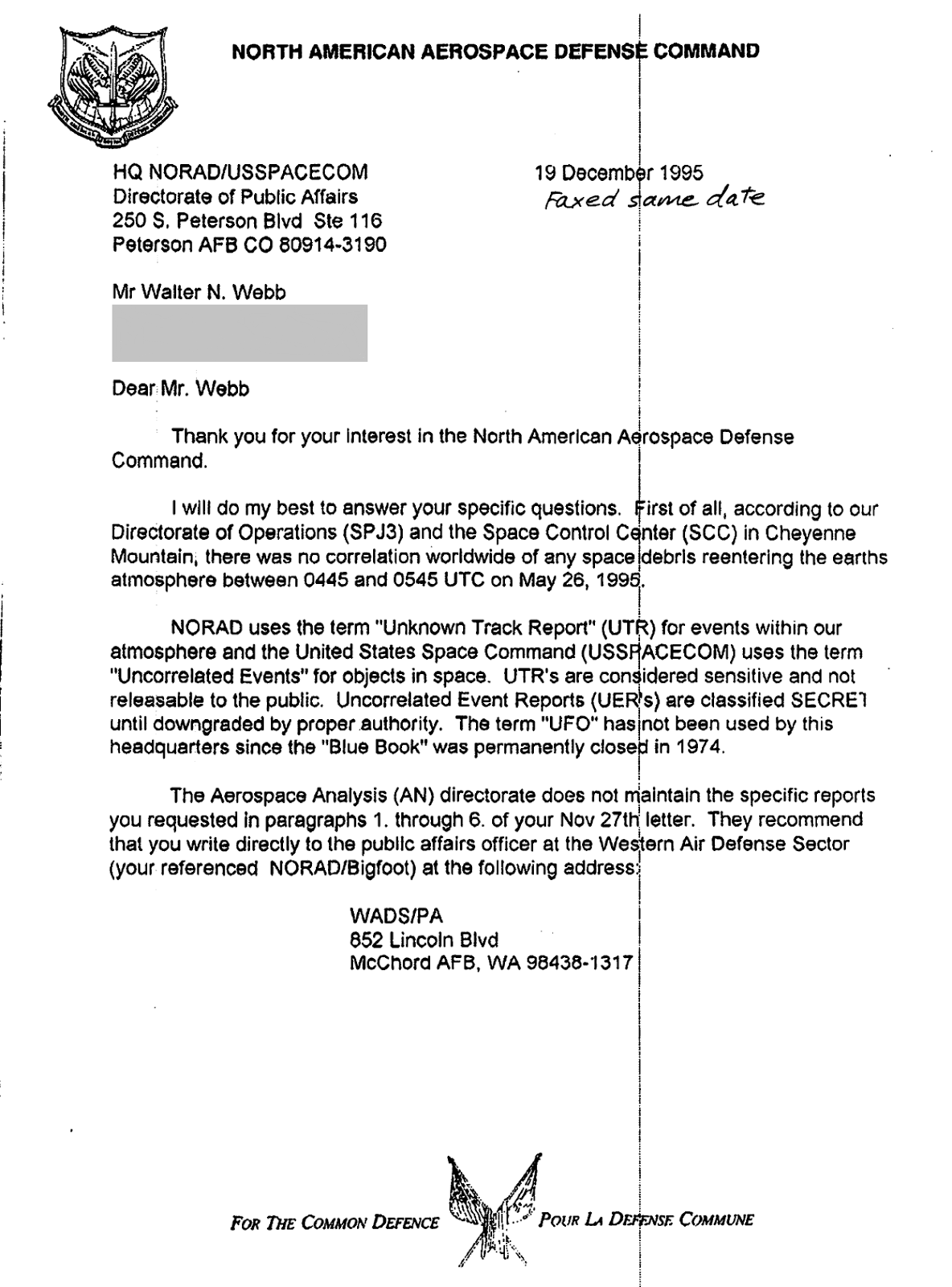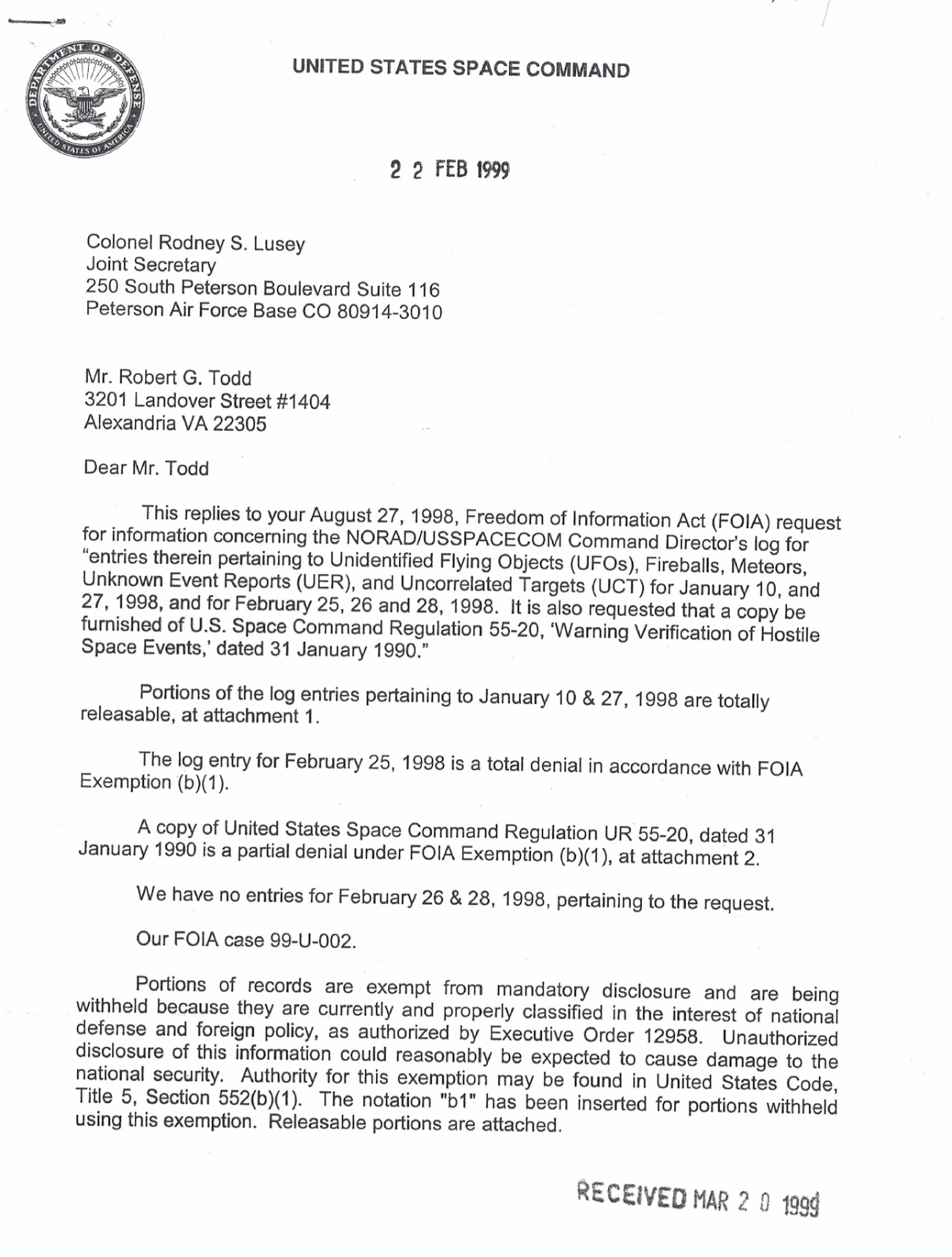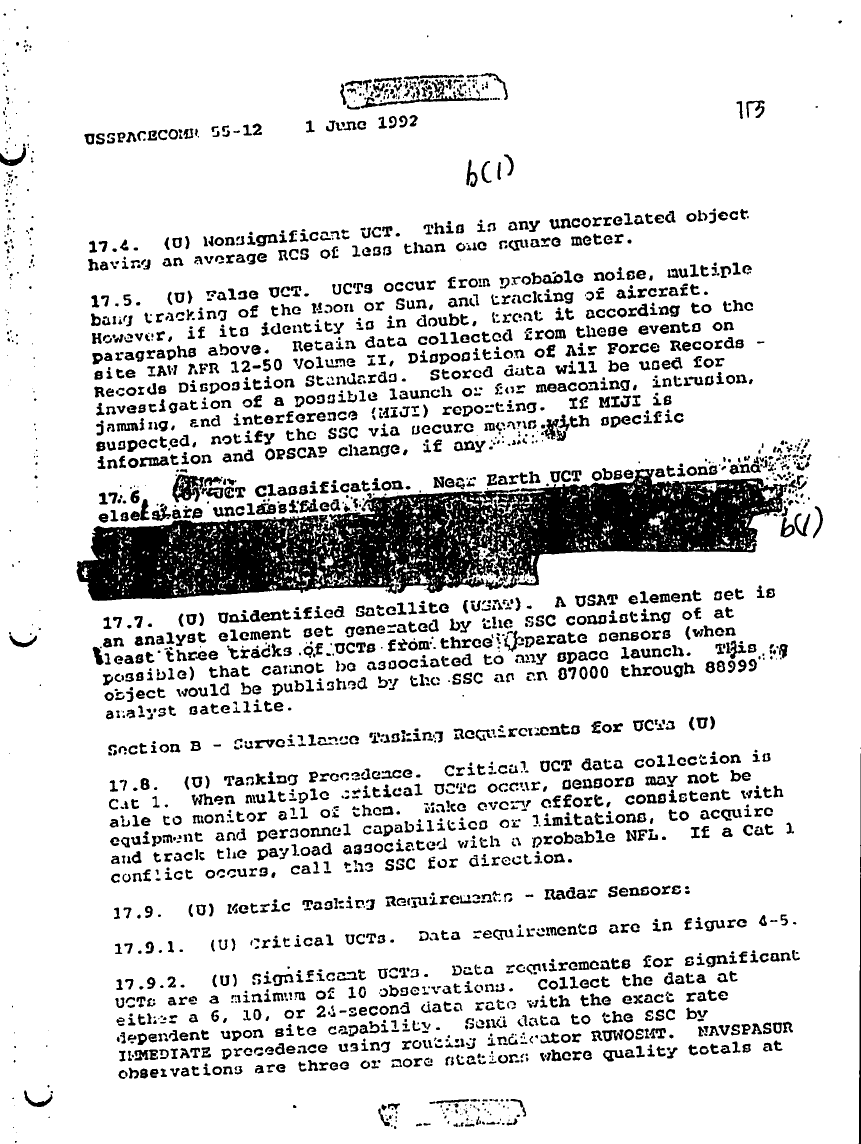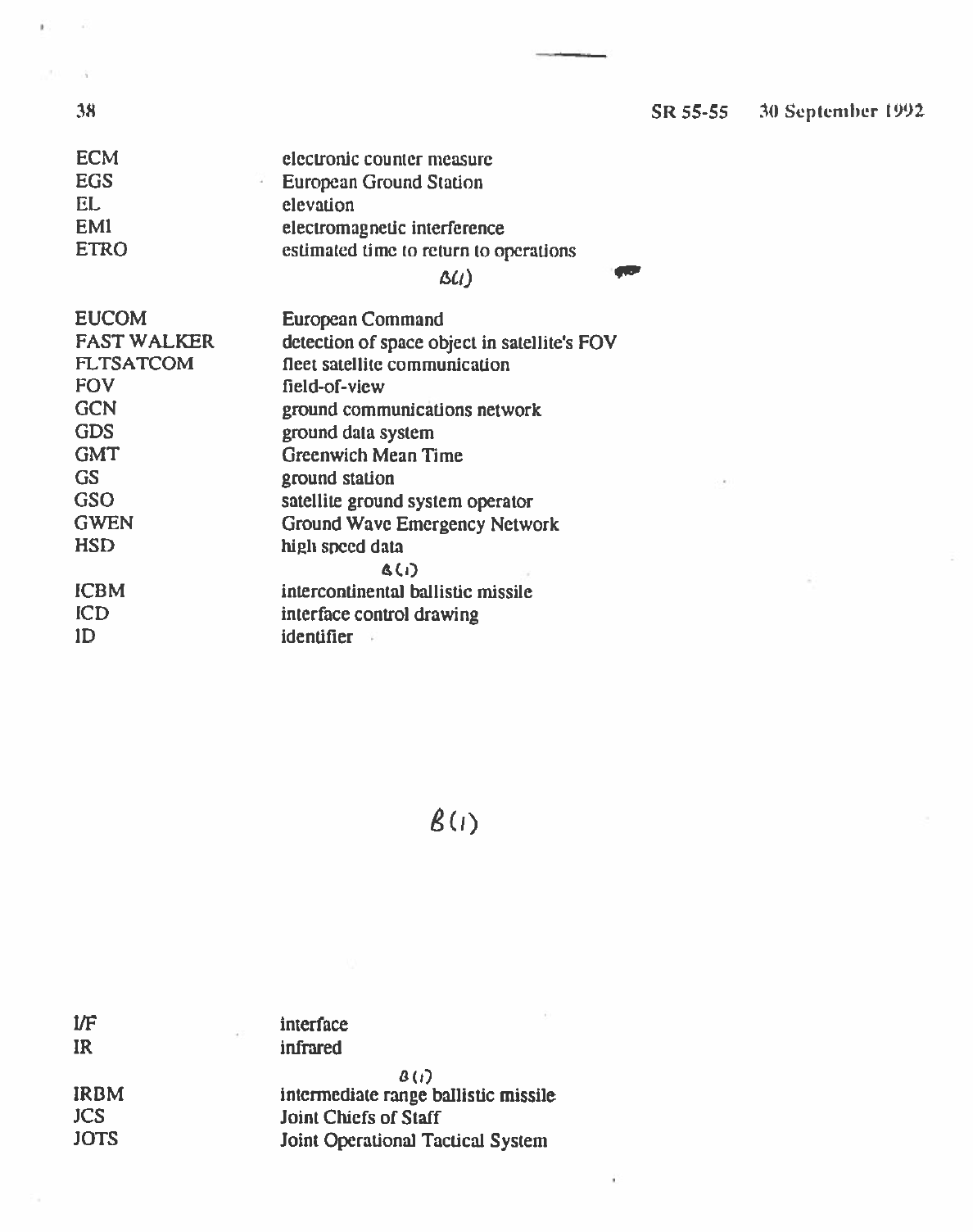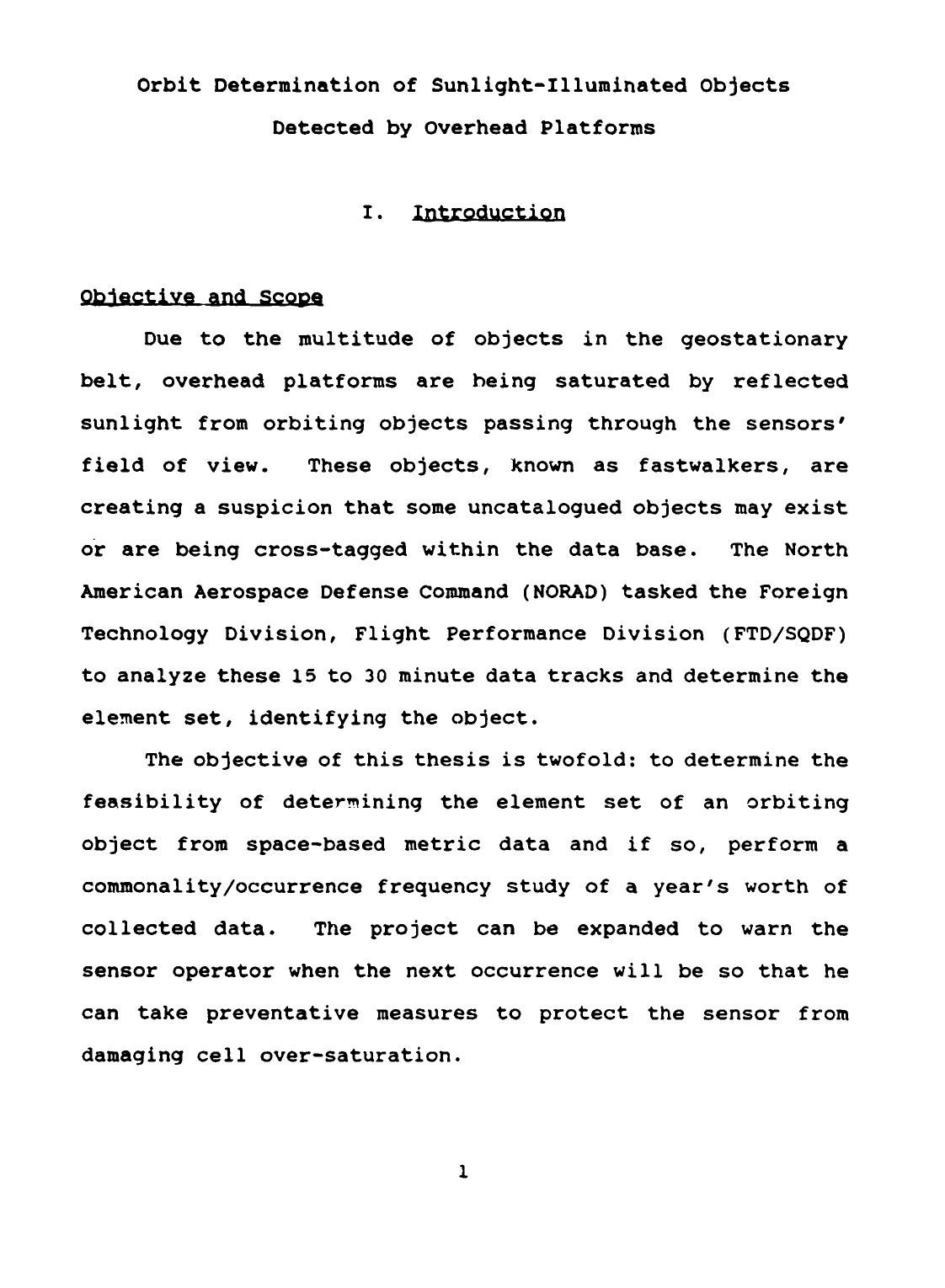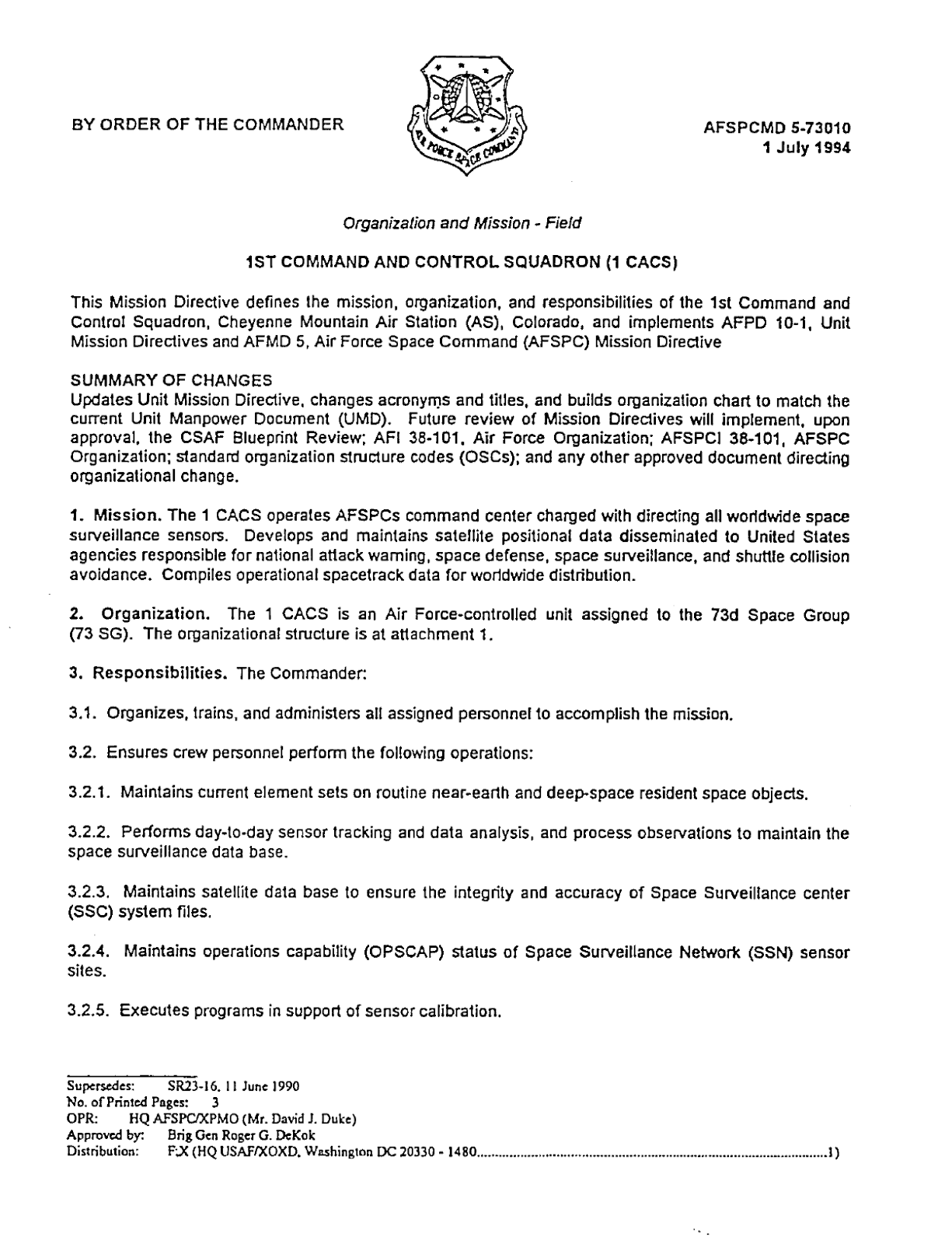|
The UFO Files |
|
Karl 12's UFO Collection |
|
NORAD And The UFO Smokescreen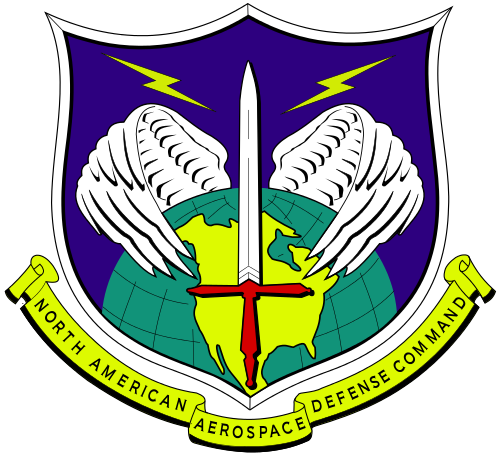 |
|
| Posted September 23, 2015 There's some interesting reading in the articles below from Australian researcher Paul Dean about UFOs and the North American Aerospace Defense Command (NORAD) - mainly concerning their seemingly contradictory claims that they have 'no present activity in investigating UFOs' or that 'no formal documentation' is created by them. ~ Karl |
|
| UFOs - Documenting The Evidence Don't Just Believe Me, But Do Look At The Evidence. By Paul Dean. Contact: pj_dean@hotmail.com Sunday, 26 July 2015 NORAD And The UFO Smokescreen Part 1 About a year ago, I took the plunge and
begun the near-impossible task of ascertaining what role joint
US/Canadian North American Aerospace Defence Command (NORAD) has
maintained regarding the UFO matter. Sure enough, just as I had
suspected, there is a paper trail dating back decades, and much of it
makes for rather awkward reading. Furthermore, I have been working with
David Charmichael, a brilliant British citizen who has been aggressively
asking NORAD, and its parent agency Northern Command (NORTHCOM), one of
ten Unified Combatant Commands organised directly under the Secretary
of Defence and Joint Chiefs of Staff, for some honest answers regarding
the oddities they track on vast radar systems, and other UFO-related
matters. Together he and I have discovered much.
For those that don’t know, NORAD, as its current Fact Sheet states, is: “...charged with the missions of aerospace warning and aerospace control for North America. Aerospace warning includes the detection, validation, and warning of attack against North America whether by aircraft, missiles, or space vehicles, through mutual support arrangements with other commands. Aerospace control includes ensuring air sovereignty and air defence of the airspace of Canada and the United States.”. Put simply, NORAD uses myriad primary and secondary radars to build up an integrated, recognised air and aerospace picture, even out into sub-space, of what is flying around about the USA and Canada. NORAD has generally maintained that the only “UFOs” they detect and track are simply strayed aircraft, hostile formations of Russian combat aircraft and such. NORAD do not have any interest, or, any knowledge, of our sort of “UFO” events. Unfortunately for NORAD, however, if one goes by what the contents of their own declassified paperwork says, the overwhelming evidence is that they have not been honest, and this dishonesty has been going on since the 1950’s. But first, let’s see what official concoctions NORAD has come up with over the long years. The Official Stance In a reply letter dated 10th November, 1975, Colonel Terrence C. James, NORAD Headquarters, Ent Air Force Base, to researcher Robert Todd, it was stated: “…this command has no present activity in investigating UFOs, nor does any area of the United States government that I’m aware of.” Another letter from NORAD HQ, dated 28th, November, 1975, also to Robert Todd, said: “We do not undertake investigative measures… …our interests are satisfied in near real time, and no formal documentation is created by this command.”. Ten years later, in an April 25th, 1988 reply letter to British researcher Dr. Armen Victorian, NORAD’s Chief of Operations Branch, Directorate of Public Affairs, Lt. Col. Roger I. Pinnell, stated: “Thank you for your recent letter requesting information on Unidentified Flying Objects. Unfortunately, we have not recently released any information concerning UFO’s, nor do we keep any such information on file... ...Although we do not have any information on UFO’s, you may want to write to the following address and they should be able to assist you...” The address given was that of the Mutual UFO Network (MUFON), a civilian organisation. This reply letter is imaged below. 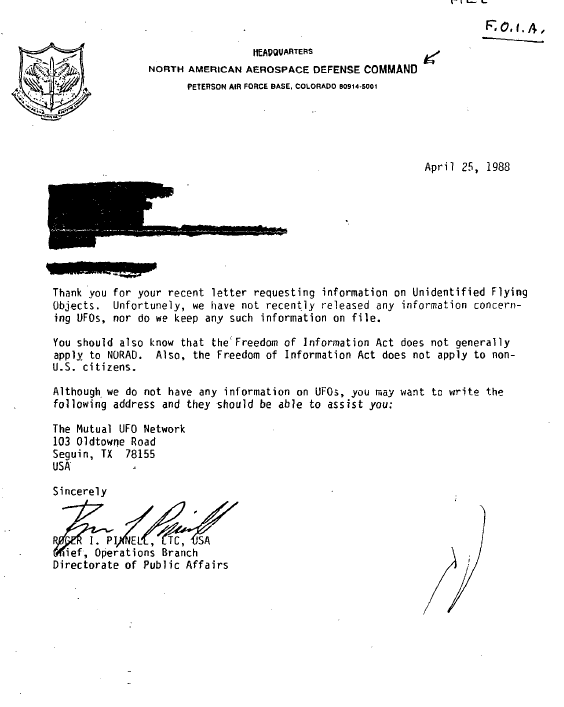 These official statements
may sound legitimate at face value, but, in fact, they fly in the face
of various documents begrudgingly released by the US military over five
long decades.
For Restricted Readership
Since 1954, the “Joint Army Navy Air Force Protocol 146” (JANAP 146)
procedures, promulgated by the Joint Chiefs of Staff, have issued a
series of “Communications Instructions for Reporting Vital Intelligence
Sightings”, more commonly referred to as simply “CIRVIS”. The timely
reporting of UFO’s by military and civilian pilots, as well as other
professionals, is clearly laid down in these CIRVIS procedures, and,
first on the addressing distribution list is none other than the
Commander-in-Chief, NORAD (CINCNORAD). For example, the February 1959
version of JANAP CIRVIS procedures, published as JANAP 146(D), states,
in part, under the “Information to be Reported and When to Report”
section on Page 8:
(1) While airborne and from land based observers. (a) Hostile or unidentified single aircraft or formations of aircraft which appear to be directed against the United States or Canada or their forces. (b) Missiles. (c) Unidentified flying objects. (d) Hostile or unidentified submarines. (e) Hostile or unidentified group or groups of military surface vessels…” (f) Individual surface vessels, submarines, or aircraft of unconventional design, or engaged in suspicious activity or observed in a location or on a course which may be interpreted as constituting a threat to the United States, Canada or their forces. (g) Any unexplained or unusual activity which may indicate a possible attack against or through Canada or the United States, including the presence of any unidentified or other suspicious ground parties in the Polar Region or other remote or sparsely populated areas.” Note, that “Unidentified Flying Objects” is listed as distinct from single aircraft, formations of aircraft, missiles, etc. Below is an image of this page from JANAP 146(D) CIRVIS. 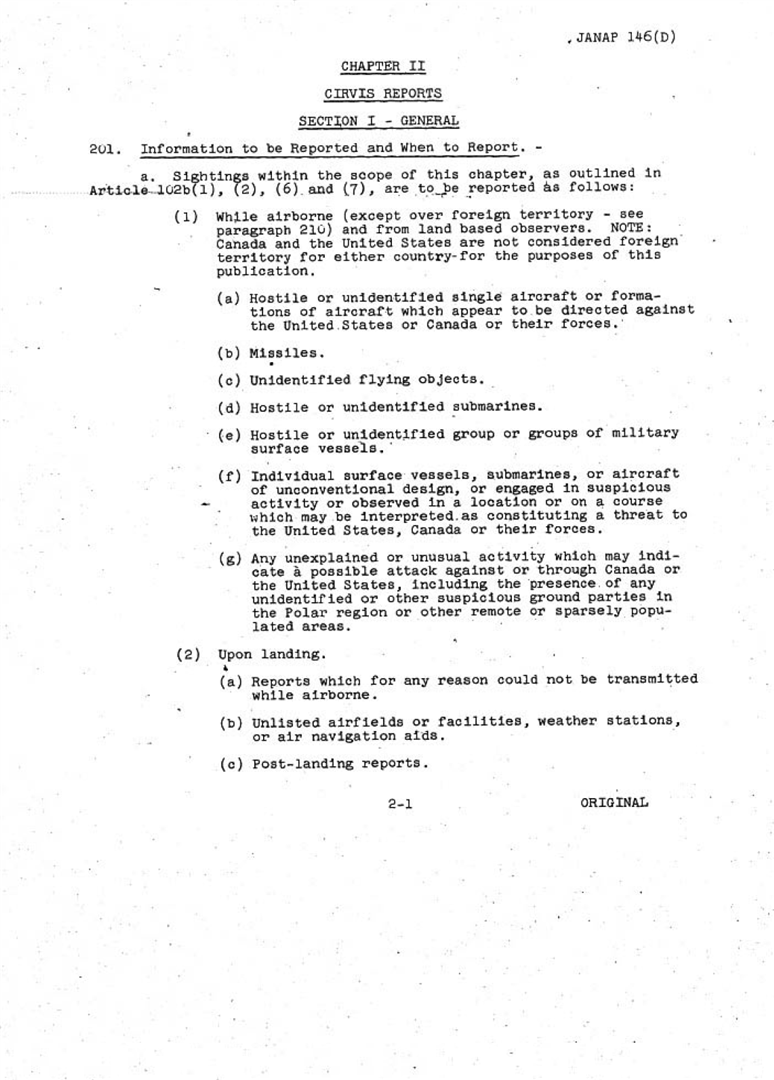 “c. A post-landing report is desired immediately after landing by CINCNORAD or RCAF-ADC to amplify the airborne report(s).” And, “(1) Post-landing reports should be addressed to CINCNORAD, Ent AFB, Colorado Springs, Colorado, or, RCAF-ADC, St. Hubert, Quebec…” CINCNORAD is merely Commander-in-Chief, NORAD, and, RCAF-ADC is Royal Canadian Air Force, Air Defence Command. Below is an image of the page. 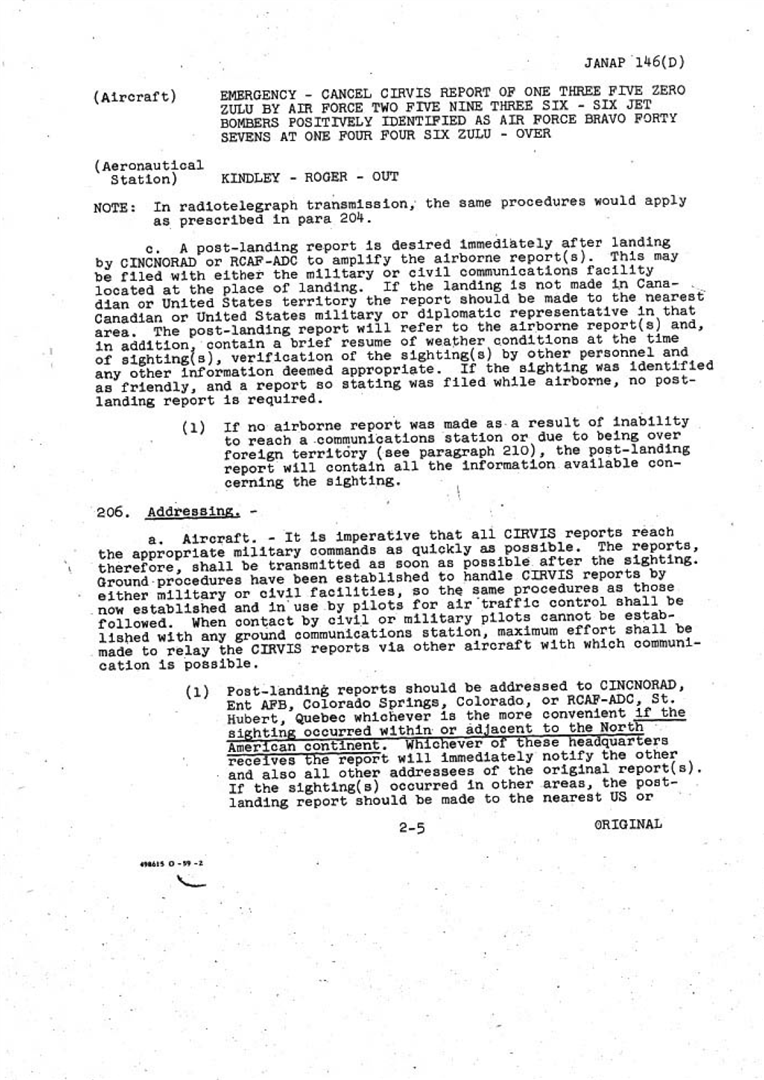 Thus it is established that NORAD, even so long ago, was very much concerning itself with serious UFO sightings made by US or Canadian forces, and any claims to the contrary are absolute nonsense. Now, I can already hear the “But, that was in 1959! What about something current?!”. The 2008 “Air Force Instruction 10-206 Operational Reporting” instruction contains the second most current CIRVIS sightings procedures, which still include “Unidentified Flying Objects” as separate from aircraft, missiles, etc. On Page 36, it is stated, with regards to the addressee of such “vital” reports: “5.3. Submitted To: 5.3.1. Airborne reports: US, Canadian military, or civilian communications facility. 5.3.2. Post-landing reports: Commander, North American Aerospace Defense Command (NORAD), Cheyenne Mt, Colorado, or HQ Northern NORAD Region, North Bay, Ontario, Canada, whichever is more convenient. If landing outside Canadian or US territories, submit reports through the nearest Canadian military or diplomatic representative or US.” So much for NORAD not being in the US military’s “UFO loop”. “Unknown Objects” It isn’t just the above mentioned CIRVIS procedures which raise questions. NORAD’s Operational Instruction Index 0-2, coded “RCCOI 0-2” and dated 7th of March, 1978, inventories a number of instructional publications vital to the overall mission success of NORAD Regional and Sector Operations Centers. Page 2 of the index lists a 9th of May, 1977 instruction titled “Possible Unknowns, Unknowns, Special Tracks and Unknown Objects Actions”. The Below the list is imaged. 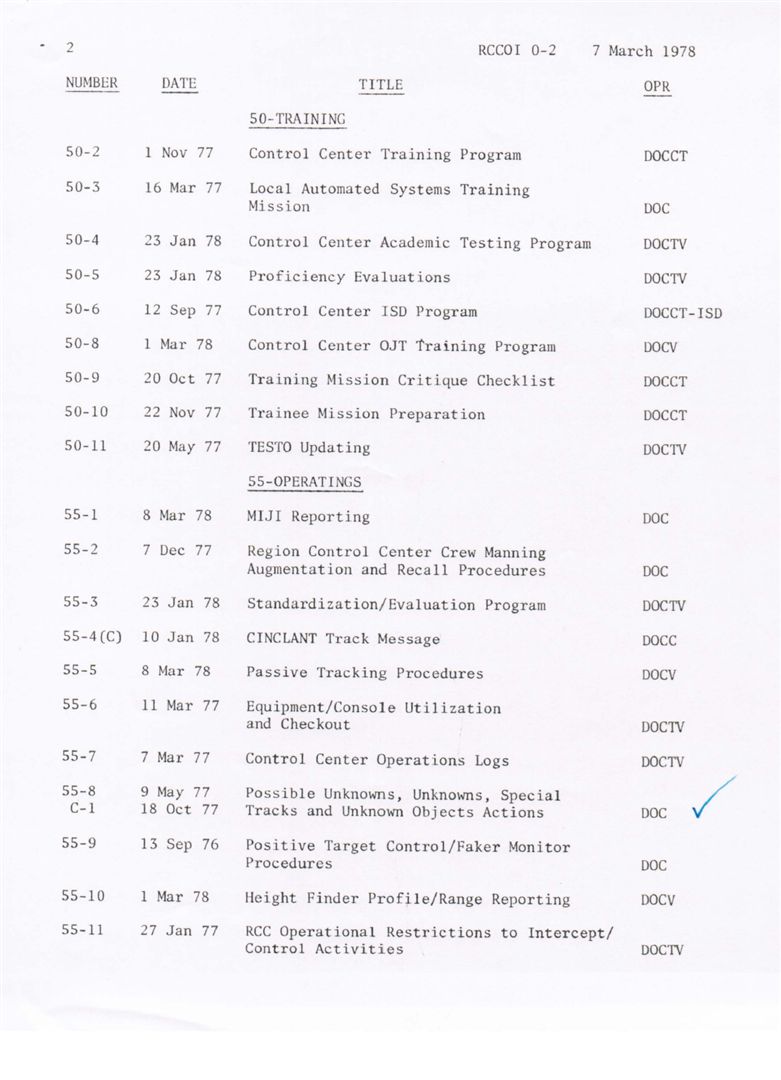 There a numerous such NORAD indexes that contain references to classified publications., and through diligent research, some of these publications have been released. The above mentioned instruction, coded 55-8, contains a section, on Page 6, titled “Unknown Objects”, and states, on part: “...Unknown object reporting will be accomplished using the same procedures as for Unknown Track reporting. NORAD Form 61 will be used even though such observations may not result in track establishment.” This makes very clear that “unknown objects” are of concern to NORAD, despite what the United States government has ceaselessly said to the public. The page in question is imaged below. 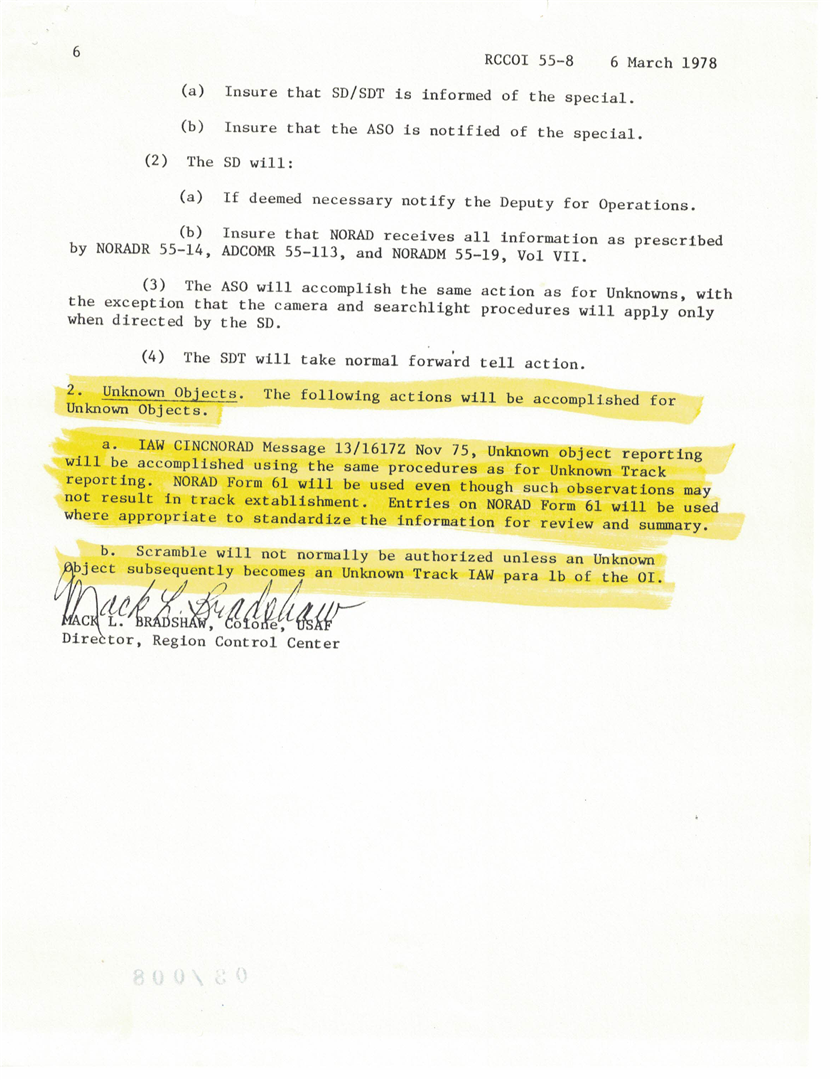 While these procedural and instructional records are very significant, there is far more material which catches NORAD out red-handed being involved with localized and serious UFO events. In my next post, Part 2 of this series, I will be highlighting such material which provides ample evidence that NORAD know far more about the UFO issue than they are prepared to discuss. Copied from: UFOs - Documenting The Evidence - Part 1 By Paul Dean |
|
| Also brought up are the subjects of JANAP 146
procedures and CIRVIS reports as well as info taken from official
government documentation involved in cases such as the Flight JAL 1628 incident, the SAC Base flyovers
and other historical cases - according to Mr Dean the documents
'establish that NORAD, even so long ago, was very much concerning itself
with serious UFO sightings made by US or Canadian forces, and any
claims to the contrary are absolute nonsense'. The 1975 SAC Base Northern Tier Overflights October 27 - November 18, 1975 Uploaded on Nov 14, 2007 John Callahan talks about proof of UFO from visual, ground, and radar. |
|
| UFOs - Documenting The Evidence Don't Just Believe Me, But Do Look At The Evidence. By Paul Dean.
Contact: pj_dean@hotmail.com Wednesday, 5 August 2015 NORAD And The UFO Smokescreen Part 2 Continuing on from my Part 1 of my series, titled “NORAD And The UFO Smokescreen” I will carry on presenting evidence, in the form of declassified documents, that the North American Aerospace Defence Command (NORAD) has been heavily involved in significant, inexplicable and unexplainable UFO events since its formation in 1957. Even when given the opportunity to disclose UFO case and study records to the flawed the University of Colorado’s “UFO Study” (the US Air Force’s final word on the UFO matter in 1969), NORAD managed to stay nearly silent on the matter despite evidence they were sitting on vital, even startling information. I am not attempting here to analysis the actual cases as such. This would not be the appropriate platform to do so, and, much work has been done of these events already. What I am attempting to do is prove NORAD, like so many other agencies, have not been truthful, which is getting seemingly easier every day. “Unidentified Flying Objects” Take, for example, a 10th of April, 1964 information relay message found in the US Air Force’s (USAF) Project Blue Book records. The document highlights and summarises the contents of previous information moving around US Air Force Headquarters (USAF/HQ), USAF Air Staff, and the National Military Command Center (NMCC). In the subject line there are three very familiar words: “Unidentified Flying Objects”. Under this, two pieces of sectioned information state: “NMCC, NORAD advised that there were 6 to 12 unidentified flying objects at 30 miles East of Merced, California. Radar picked up 12 objects at altitudes 60,000 ft., 90,000 ft., and higher elevations. F-106’s were scrambled at Castle Air Force Base. There were no results because of high altitudes. They are checking the possibility of sending U-2’s.” And, “Objects were following a 60 mile race-track pattern. F-106’s were flying a 90,000 ft. altitude. Pilots locked on to some of the objects but could not keep the lock. NORAD said they were sending 2 more XXXXX aircraft with pilots in pressure suits.” The case was later dismissed by the USAF as one mere weather balloon. Whether that conclusion is accurate has been debated ad nauseam, but for the purposes of my study it is interesting to note that NORAD is mentioned not once, but twice, in the message text. Specifically, “NMCC, NORAD advised that there were 6 to 12 unidentified flying objects...” and “NORAD said they were sending 2 more XXXXX aircraft with pilots in pressure suits.”. So, for NORAD to state – as they did throughout the 1960’s and 1970’s – that they had no interest or “records held” relating to unidentified flying objects is clearly deceptive. Below is an image of this record. 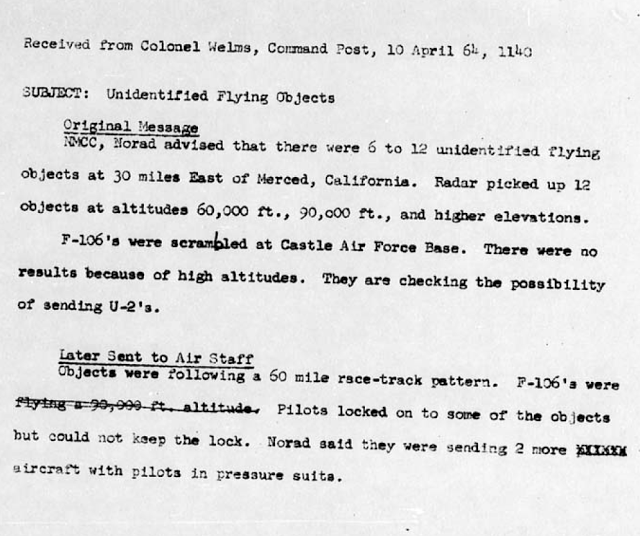 Another record, dated September 10, 1972, and sent from 22 NORAD Region Headquarters, (22NRHQ) North Bay, Ontario, Canada to both the Canadian Forces Headquarters (CFHQ) and the National Research Council (NRC) is an unclassified telex discovered in the Canadian Archives, along with dozens of others like it. It details an object seen visually, and, tracked on radar by two tower operators at North Bay Airport, which is connected to Canada’s NORAD Operations Headquarters. Described visually as “one object flashing red and green lights, speed very slow to 300 knots at 4000 to 6000 feet estimated”, the report then gives the following further description: “Visual sighting correlated with a North Bay terminal radar return at 340 degrees, six miles. Object appeared to turn in tight circles or hover for approx. 15 minutes and then lose altitude steadily with flashing lights becoming dimmer until visual contact lost at 0345Z. Radar contact lost prior to visual contact.” Below is an image of the telex. 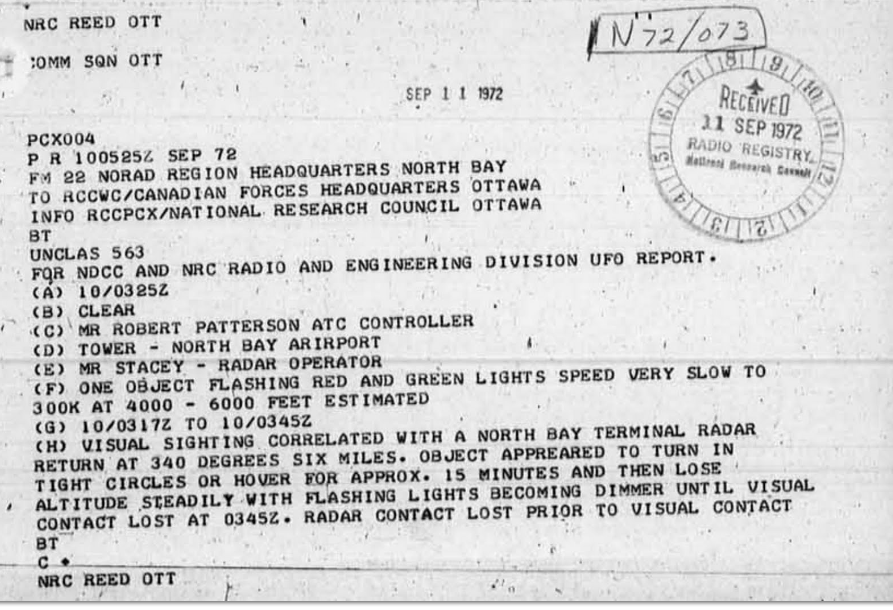 Aside from the obvious fact that NORAD, again, is mentioned in what can only be described as some sort of UFO event, two interesting issues are raised here. Firstly, the message reads “UNLCAS” in the security classification line – meaning “unclassified”. In other words, the contents of the message are not security or intelligence sensitive. From this, one can’t help but wonder what sort of material is held in NORAD records which are classified. Apparently there are many. Secondly, it is interesting to note that the telex was sent from NORAD, not to NORAD – further rubbishing the assertions that they have not one scrap of interest in odd aerial incidents. In another Canadian telex, again sent from 22NRHQ to the CFHQ and NRC, dated 4th July, 1972, states that Captain Sorefleet and Captain Drury, stationed at Canadian Forces Base Bagotville, Quebec, reported one “white oval” while flying in a fighter jet at 35,000 feet. The description indicates a “small red tail”. This, of course, could be a meteor sighting. However, the telex finally states “observed for 2 minutes about 40 miles”. Whatever the object was, it was clearly unidentifiable enough that the pilots wished to report it, and NORAD was part of that process. The page is imaged below. 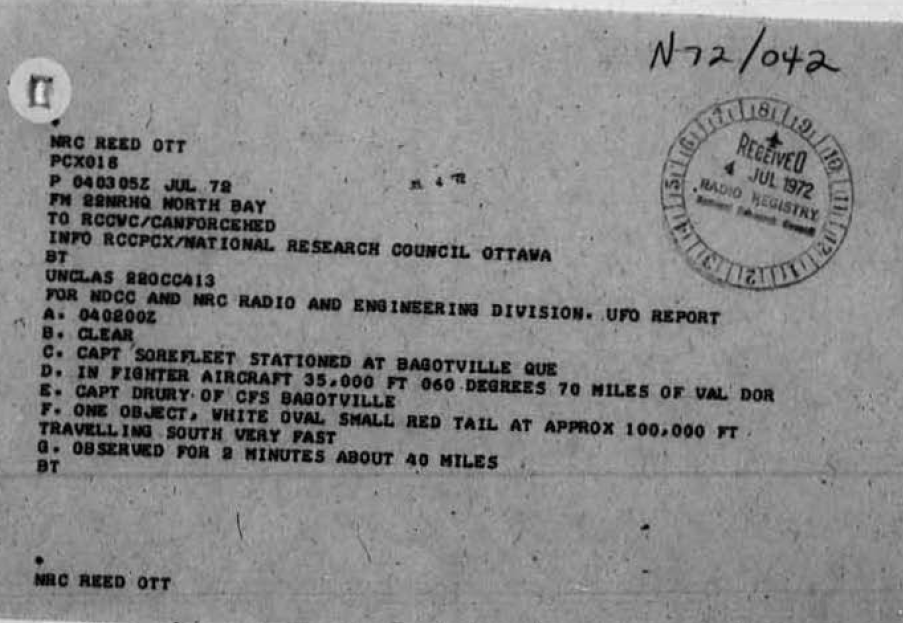 These events occurred in 1972, only 2 years after the Secretary of the USAF, Dr. Robert C. Seamans, Jr, famously announced, on the 17th of December, 1969, that no US military agency will continue the reporting, or receiving of reports, of UFO events, and, that: “No UFO reported, investigated and evaluated by the Air Force was ever an indication of threat to our national security.” But did the US Department of Defence – especially the commands dealing with air defence and air warfare – really accept this? Do we have any evidence that the above statement is complete rubbish barely fit for the trash bin? Who’s Got Their Stories Straight At Air Force Headquarters This Week? In 1979, research Robert Todd had the USAF release some of the documents related to the closure of Project Blue Book – the USAF’s 17 year study (one of three such study’s) into the UFO phenomenon. One of the documents was a 20th October, 1969 memo known as the “Bolender Memo”. Signed by Brigadier General Carrol H. Bolender, Deputy Director of Development, USAF, the second page of the memo contains two passages which depart radically from the USAF’s above mentioned statement that no UFO event reported or investigated was a threat to national security. Those passages are: “Moreover, reports of unidentified flying objects which could affect national security are made in accordance with JANAP 146 or Air Force Manual 55-11, and are not part of the Blue Book system.” And, “However, as already stated, reports of UFOs which could affect national security would continue to be handled through the standard Air Force procedures designed for this purpose.” Below is an image of the page in question. The Bolender Memo, quite simply, admits that some UFO reports can, and do affect national security. This flies in the face of what the public were being told. Also, the memo indicates that Project Blue Book was never supposed to receive the most alarming, security-vital UFO reports, and, specifically, such reports were being made using the “Joint Army Navy Air Force Protocol 146(E)” (JANAP 146E) system or “Air Force Manual 55-11” (AFM 55-11). In fact, at this time Project Blue Book, and the University of Colorado’s flawed “UFO Study”, was only receiving reports filed using “Air Force Regulation 80-17” (AFR 80-17). This raises awkward questions. For example, if Project Blue Book staff were not getting a chance to evaluate the most sensitive UFO reports submitted by USAF airmen and other military professionals, then who was? As I highlighted in my Part 1 of this series, the USAF and NORAD were in fact at the receiving end of UFO reports made using JANAP 146E’s “Communication Instructions for Reporting Vital Intelligence Sightings” (CIRVIS) procedures. UFO reports made using AFM 55-11, using the “Air Force Operational Reporting System” (AFOREP), were likely occurring too. America’s political leaders have not been told about all this, even when they have asked specific questions. In a reply letter to Senator Patty Murray, dated August 25, 1993, Lieutenant Colonel Thomas Shubert, USAF, stated: “As information, the Air force began investigating UFOs in 1948 under a program called Project Sign. Later, the program's name was changed to Project Grudge and, in 1953, it became known as Project Blue Book. On December 17, 1969, the Secretary of the Air Force announced the termination of Project Blue Book... ...As a result of these investigations, studies, and experience, the conclusions of Project Blue book were: 1) no UFO reported, investigated and evaluated by the Air Force has ever given any indication of threat to our national security…” Again, compare this with the contents of the Bolender Memo: “…reports of unidentified flying objects which could affect national security are made in accordance with JANAP 146 or Air Force Manual 55-11, and are not part of the Blue Book system.”. Since the public and Congress did not, and do not, know about this JANAP 146 and AFM 55-11 business, the impression can be easily given, as it was to Senator Murray, that the USAF had then, and have now, no reason to take whatsoever the UFO matter seriously. Below is an image of the USAF letter to Patty Murray. The above examples are only a handful of quite contradictory pieces of information that have managed to find their way out of NORAD, and the wider US military. I have countless more on file. Thousands. Why are we consistently finding that the press, the public, and even politicians were, and still are now, told one thing, but, in classified documents, meant for very restricted readership, the exact opposite is stated? Recently, retired USAF Colonel Charles Halt, who was Deputy Base Commander of the Bentwaters Air Force Base during the famous Rendlesham Forest event, stated: “I’ve heard many people say that it’s time for the government to appoint an agency to investigate. Folks, there is an agency, a very close-held, compartmentalized agency that’s been investigating this for years, and there’s a very active role played by many of our intelligence agencies that probably don’t even know the details of what happens once they collect the data and forward it. It’s kind of scary, isn’t it?” Should we brush these sort of comments aside? Maybe not. He may just be confirming what government documents have been telling us all along. Copied from: UFOs - Documenting The Evidence - Part 2 By Paul Dean |
|
| The infamous Bolender memo also gets a
mention (which really does seem to fly in the face of the US Goverment's
claims that 'No UFO reported, investigated and evaluated by the Air
Force was ever an indication of threat to our national security') and
for those that are interested then this video featuring researcher John Greenewald Junior
is also a classic and basically shows NORAD are lying through their
teeth just by citing their own documents (the part where he nails NORAD
about CIRVIS Military pilot UFO reports is around 0:15:00). ~ Karl Bolender / NORAD?\ |
|
| UFOs - Documenting The Evidence Don't Just Believe Me, But Do Look At The Evidence. By Paul Dean. Contact: pj_dean@hotmail.com Saturday, 19 September 2015 NORAD And The UFO Smokescreen Part 3 This blogpost is the third in a series
which aims to link, through official and documented record, the UFO
matter with the huge North American Aerospace Defence Command (NORAD).
For over 50 years, NORAD’s stance on so-called “UFOs” – and I don’t mean
merely stray aircraft – is that they know nothing, see nothing and hold
nothing on record. However, myriad US military documents prove that
NORAD has not been entirely honest. In this post I will highlight two
especially unusual occasions where they were certainly involved. But,
beforehand, if my readers need to catch up, I have linked is Part 1 and
Part 2.
UFOs Are Tracked On NORAD Systems: And That’s Fact Now down to business. A little known
fact concerning the infamous Japan Airlines sighting in 1986 is that
NORAD almost definitely played a role in the extraordinary event,
completely aside from the FAA and even the USAF. For those that do not
know about this case, I will only briefly summarise it. On November
17th, 1986, Japan Airlines (JAL) cargo flight 1628 was flying at nearly
900 kilometres an hour over Alaska. Just after sunset, the three crew
witnessed a series of UFO encounters that last for 31 minutes, and, the
entire fiasco was watched on both FAA primary radar, and, USAF primary
radar. The case made headlines around the world. In 2000, John Callahan,
Chief of the FAA’s Accidents, Evaluations and Investigations division
confirmed the seriousness of the event, and the involvement of the
Central Intelligence Agency and the President’s Scientific Staff. He
also came forward with more FAA evidence, on top of the hundreds of
pages of official documentation already released.
NORAD’s involvement has been
overlooked in this case, I believe. At the heart of the matter, we know
for an absolute fact that both the primary radar at the FAA’s Anchorage
Air Route Traffic Control Center (AARTCC), and the primary radar at the
USAF’s Elmendorf Air Force Base Regional Operations Command Center
(ROCC) picked up “surge primary returns” next to the JAL flight. As
these returns were being watched on the screens, the crew were
discussing with the FAA, over radio, the worrisome traffic they had
around them. It’s a classic radar-visual case, pure and simply. The
actual voice tapes of this event are available, and one can actually
hear the gravity of the situation in the voices of the pilot, as well as
those of the air traffic controllers at FAA AARTCC and USAF ROCC. The
important thing here is that there may have been, in some no-doubt
complex way, a third set of air traffic controllers, using a third
system, watching the event. In the official FAA voice tape transcript
the USAF’s ROCC controller says, at 5:38:51:
“Ah, I’m gonna talk to my other radar man here has gotta, he’s got some other equipment watching this aircraft.” The passage of speech is somewhat broken, but he clearly says “my other radar man here” and “some other equipment”. Considering it is a USAF controller who was talking, one can’t help but question who “my other radar man” could be, and, what “other equipment” was “watching” the UFOs around the JAL flight? It turns out it was probably NORAD. Elmendorf Air Force Base had, in the 1980’s, a more classified system operated by NORAD, which complimented the USAF hardware. The two merged in Year 2000, but, back in 1986, NORAD’s presence wasn’t exactly advertised at the time of the JAL 1628 UFO sightings. In fact, when one reads that dismal FAA paperwork on the incident, even the USAF’s involvement, let alone NORAD’s, was barely mentioned, despite the fact that they were watching the same thing on their screens, and stating such to the FAA controllers and the JAL pilots. Whatever the exact situation, speculation that NORAD was involved in this event is strengthened when one reads a particular FAA document from the FAA’s JAL 1628 report. After one of the post-landing interviews between the JAL crew and FAA Special Agents James Derry and Ronald Mickle, Special Agent Derry wrote a one page statement. The final paragraph states: “Upon completion of my discussion with the crew, I called Captain Stevens (Duty Officer to NORAD) and asked if he had any questions other than what I had asked. He said he had no other questions, but they also showed two targets on radar (one was JAL). He stated that they would give all data to Intelligence in the morning. I then asked Bobby Lamkin by phone if the Air Force was holding the data and he said yes” Below is an image of this document. NORAD On Alert Another incident where NORAD paperwork
connects them, very strongly I might add, to serious UFO events, is the
extraordinary October-November, 1975 “over flights” of a dozen US
military bases by unknown aircraft, variously described as mundane
helicopters right through to totally unfamiliar and oddly performing
craft that appeared repeatedly on ground-based radar and utterly eluded
USAF authorities for weeks. These events were highlighted in Barry
Greenwood and Lawrence Fawcett’s game-changing 1984 book “Clear Intent”,
later published with the title “UFO Cover Up: What the Government Won’t
Say”. I will not even attempt here to give an overview of the wave of
UFO activity that occurred at that time. What does need to be said
though is that hundreds and hundreds of pages of official documents were
released from nearly two dozen commands and agencies within the US
military throughout 1976 to 1983. Barry Greenwood and Robert Todd
accessed most of them, and Barry fondly tells me how stunned he was –
time after time – that such raw intelligence and front-line reporting
was being furnished to him. These researchers cannot be thanked enough
for their work.
Amongst those piles of gold, was a four page release of “incident” summaries extracted from both the NORAD Command Directors Log and the 24th NORAD Region Senior Director’s Log. The time period for released material was from the 29th of October to the 10th of November, 1975. The actual documents were released to researcher Todd Zechel on the 4th of October, 1977. Despite the fact these are quite well known, I wish to highlight some of the contents, and provide imagery of the offending pages. The first page details various worrisome intrusions by “unknown helicopters” over Loring Air Force Base, Maine, Wurtsmith Air Force Base, Michigan, and Malmstrom Air Force Base, Montana – all of which maintained mission-ready nuclear weapons. See below. 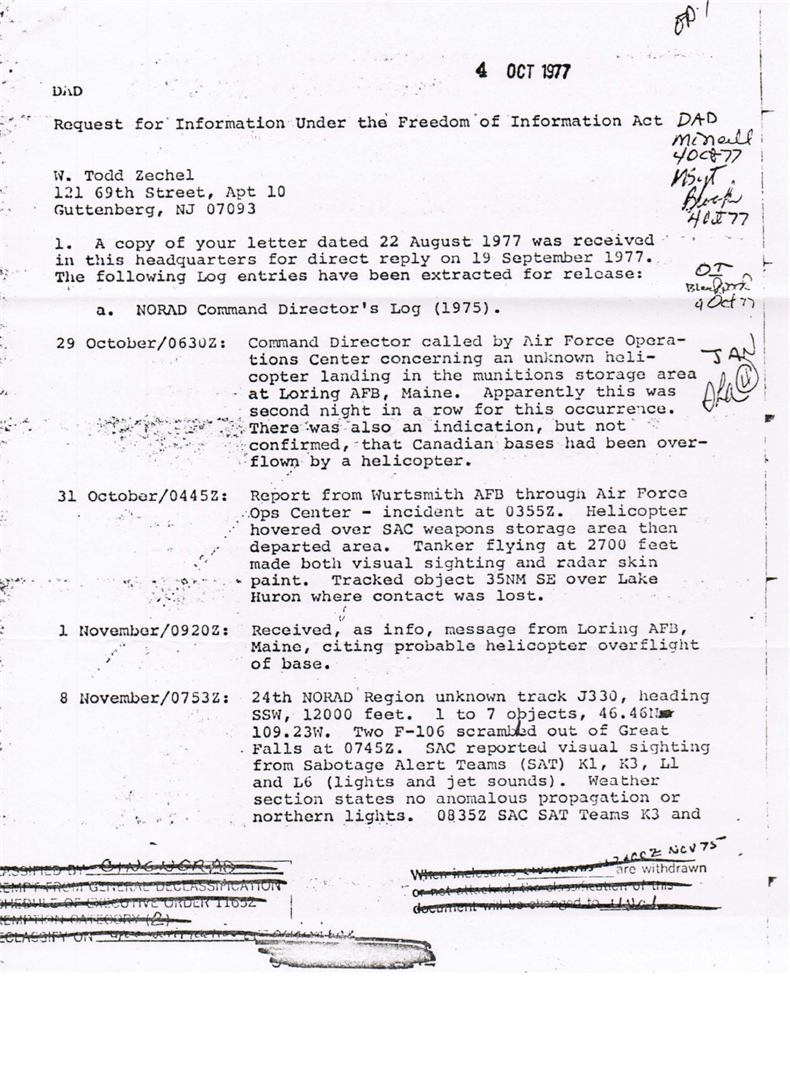 The stakes are raised on page 2 of the
release where the 24th NORAD Region Senior Director's Log (Malmstrom
AFB, Montana) The most alarming incident summaries are probably:
“7 Nov 75 (1035Z) - Received a call from the 341st Strategic Air Command Post (SAC CP), saying that the following missile locationsreported seeing a large red to orange to yellow object: M-1, L-3, LIMA and L-6. The general object location would be 10 miles south of Moore, Montana, and 20 miles east of Buffalo, Montana. Commander and Deputy for Operations (DO) informed.” And, for the actual word “UFO”, “7 Nov 75 (1429Z) - From SAC CP: As the sun rose, the UFOs disappeared. Commander and DO notified.” 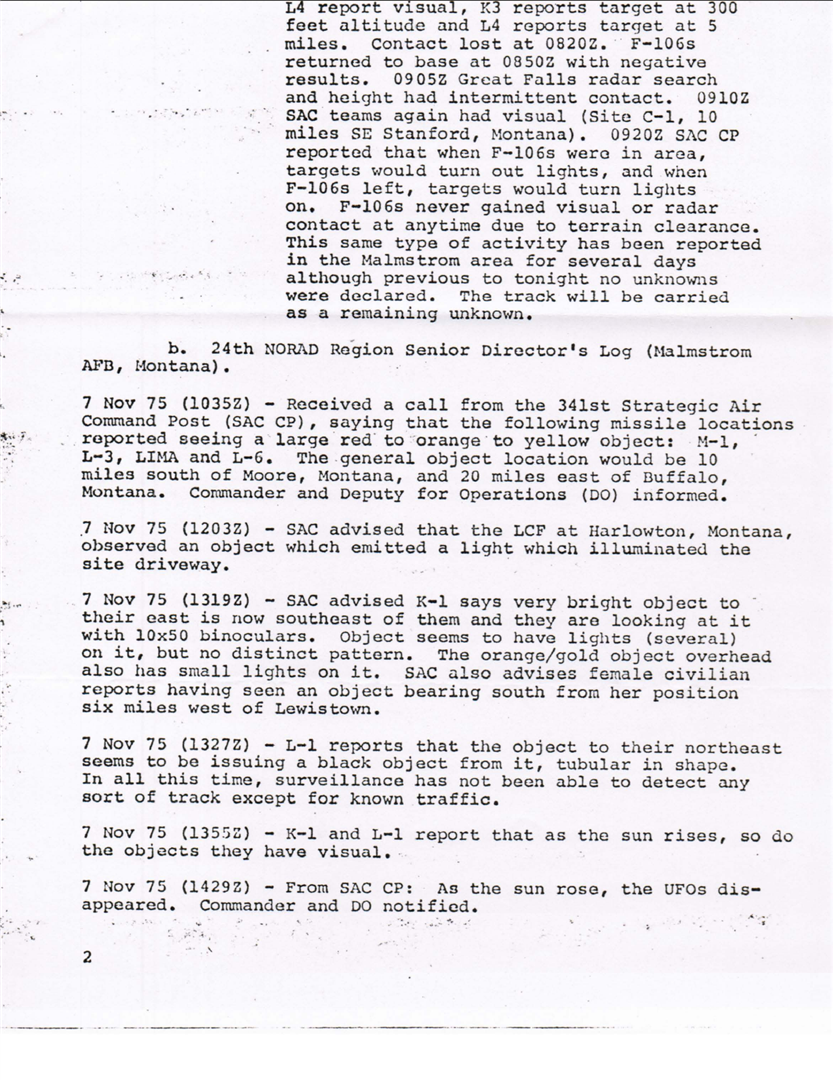 On page 3, the continuing NORAD summaries mention the term “UFO” five times, plus radar tracks of “unknowns”, “objects”, plus the inspection of such events by fighter jets, which met with failure. The page is imaged below. 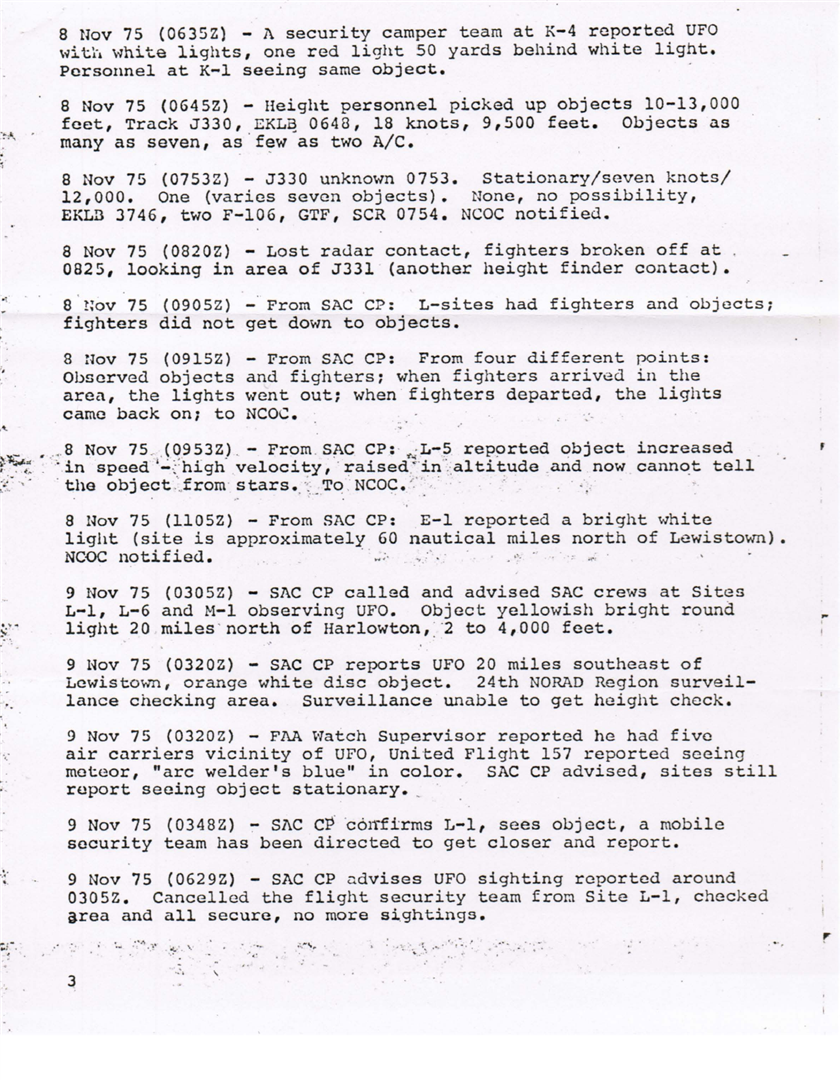 The final page summaries a continuation of similar events that kept plaguing nuclear-weapon equipped bases along the US-Canadian until mid-November. One piece of text, which brought Minot Air Force Base into the spectacle states: “10 Nov 75 (1125Z) - UFO sighting reported by Minot Air Force Station, a bright star-like object in the west, moving east, about the size of a car. First seen approximately 1015Z. Approximately 1120Z, the object passed over the radar station, 1,000 feet to 2,000 feet high, no noise heard. Three people from the site or local area saw the object. NCOC notified.” 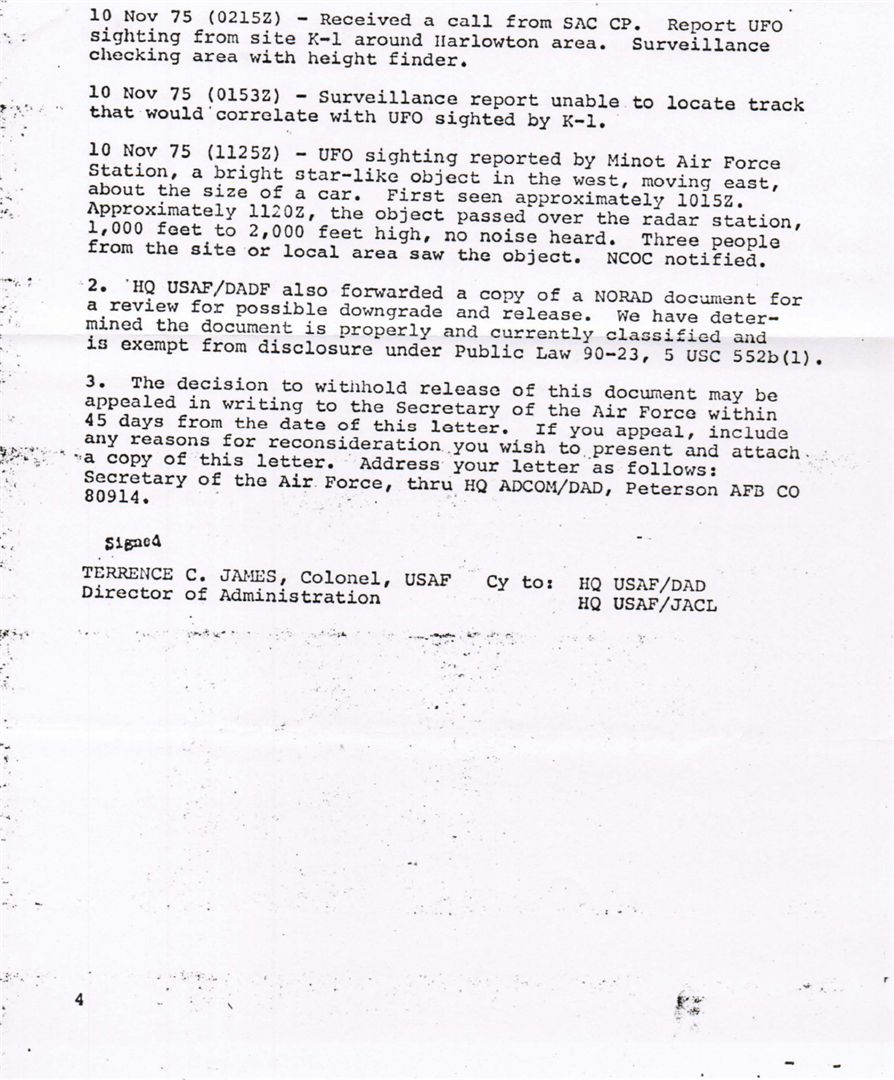 Finally, this 4 page NORAD release was finalised with some interesting statements which alluded to more material that related to the over flights of these bases, and, thus, Todd Zechel's FOI request. The text indicates that more documents of NORAD providence are in existence, but that they are not fit for release to the public due to legal exemptions. Specifically: “2. HQ USAF/DADF also forwarded a copy of NORAD document for a review for possible downgrade and release. We have determined the document if properly and currently classified and is exempt from disclosure under Public Law 90-23, 5 USC 552b(1).” These pages were signed off by one Colonel Terrance C. James, USAF, Director of Administration. The USAF and NORAD run administrative and functional operations hand-in-hand, thus, a USAF Colonel was able to clear this material for release. Also, aside from the above releases, there were actually a great deal more documents of NORAD providence, or, that mentioned NORAD, released to the likes of Barry Greenwood, Robert Todd, Lawrence Fawcett, Todd Zechel and others in that extraordinary period of FOI openness. In one, which Barry Greenwood has on file, the Commander-in-Chief of NORAD sent a four-part message to various NORAD units on November 11, 1975 summarizing the events: “Since 28 Oct 75 numerous reports of suspicious objects have been received at the NORAD CU; reliable military personnel at Loring AFB, Maine, Wurtsmith AFB, Michigan, Malmstrom AFB, Mt, Minot AFB, ND, and Canadian Forces Station, Falconbridge, Ontario, Canada have visually sighted suspicious objects.” Regardless of who released what, clearly any NORAD Log Extracts that contain the phraseology like “UFOs”, radar tracks of low-flying “unknowns”, “objects” and “unknown helicopters” indeed fall within our area of interest. NORAD, as well as other US military branches, stated that these incidents were “isolated”, but even the most bone-headed skeptic would not accept that. In my next blog post I will be discussing more about NORAD's capabilities and mission, and the current and ongoing efforts by myself and UK researcher David Charmichael to get to the bottom of how NORAD currently handles the UFO matter. Stay tuned. Copied from: UFOs - Documenting The Evidence - Part 3 By Paul Dean |
|
| UFOs - Documenting The Evidence Don't Just Believe Me, But Do Look At The Evidence. By Paul Dean. Contact: pj_dean@hotmail.com Monday, 2 November 2015 NORAD And The UFO Smokescreen Part 4 In recent months I have established
that the North American Aerospace Defence Command (NORAD) have been,
despite claims to the contrary, involved in the core “UFO phenomenon”. I
have highlighted over a dozen pages of legally declassified and
officially released US and Canadian military documents that show – in
undeniable black and white – that real UFO events have come to the
attention of, if not plagued, the staff and systems that make up the
formidable NORAD behemoth. This documented evidence is only a sample.
There are hundreds more. The first three posts in my series can be found
in Part 1, Part 2, and Part 3.
The Behemoth That Is NORAD Even a swift look over the available information regarding NORAD and UFO’s, shows that most of it comes from the 1960’s and 1970’s. Almost nothing new has come directly out of NORAD, or its controlling command NORTHCOM, or any other US or Canadian military command whom have relations with NORAD, since about 1979. I say “almost nothing new” because there have been some exceptions which I will soon detail, but by-and-large the black hole of UFO information has been getting blacker, and very few UFO researchers have attempted to brighten it. And no wonder: Understanding NORAD’s structuring and capabilities is very difficult; grasping their inter-agency relationships with other military components is nearly impossible; and dealing with them is proving to be even harder still. Before understanding the current situation regarding NORAD and the UFO phenomenon, I would like to briefly summarise a few things. For starters, NORAD is a “bi-national organisation” of the USA and Canada. Administratively, NORAD is heavily controlled by the USA’s Northern Command (NORTHCOM). However, being a bi-national organisation NORAD is not structurally sub-ordinate to NORTHCOM, but is more rather beside NORTHCOM, as well as woven into the fabric of the Canadian Armed Forces (CAF), especially the Royal Canadian Air Force (RCAF). As for NORAD’s actual capabilities and operational mission, rather than me trying to stitch it all together, I would much rather rely on a few of their own statements. For example, NORAD’s current on-line “fact sheet” states that they are charged with aerospace warning and aerospace control for North America, and, that: “…Aerospace warning includes the detection, validation, and warning of attack against North America whether by aircraft, missiles, or space vehicles, through mutual support arrangements with other commands.” Another official statement, this one as part of a press release regarding NORAD’s war-fighting and air defence role, states: “One ongoing mission of the NORAD Battle Management Center is to coordinate ‘air sovereignty’ efforts, monitoring every aircraft that enter U.S. or Canadian airspace — some 2.5 million a year. NORAD is asked to investigate aircraft that do not file flight plans, contact ground controllers or identify themselves with transponders” Chapter 6 of a declassified NORAD Instruction, titled “NI 10-19 Aerospace Reporting System”, states: “Track reporting provides significant air activity information to the NMCC and CINCNORAD through the NORAD Air Defence Operations Center (ADOC).” NORAD’s role also extends into space, with the United States Air Force (USAF) stating: “As of February 2006, the NORAD database of two-line element sets (TLES) contains more than 56 million TLES for nearly 29,000 objects dating back to 1959… …the Space Surveillance Network (SSN) observes these objects for NORAD to maintain its catalogue. The SSN collects data using both passive and active instruments, then forwards the data to the NORAD Cheyenne Mountain Operations Center (CMOC) to be catalogued.” To achieve the extraordinary feat of detecting, tracking and identification of aerial and space bodies over a huge fraction of the planet’s surface, NORAD’s physical assets are made up of an unbelievably complex mix of NORAD-dedicated sensors, as well as a huge flow of data from sensors operated by other military agencies. This blog post is not the forum to elaborate extensively on such systems, but to just give an example of each category, two reasonable examples to highlight would be the North Warning System (NWS) and the Joint Surveillance System (JSS). The NWS is a series of 15 powerful long-range early-warning primary radars which form a 3000 mile, or 4800 kilometre, wide “fence” running from the western edge of the US state of Alaska to Labrador, Canada. The system is tasked with the initial detection and accurate plotting of long range bombers or medium-range cruise missiles, most likely predicted to approach from Russia. Three far flung Regional Operations Control Centers (ROCC) receive raw data from the sensitive receivers for instantaneous activity and threat assessment, plus basic filtering, and the resulting information is transmitted to the NORAD Combat Operations Centre (COC). On the other hand, the JSS is a joint United States Air Force (USAF) and Federal Aviation Administration (FAA) system dedicated to monitoring both civil aircraft movements and military aircraft movements across most of North America. The JSS consists of long-range surveillance radars, chiefly operated and maintained by the FAA, but providing critical communication and raw radar data to both special FAA control centers, as well as three USAF’s Air Combat Command (ACC) Sector Operations Control Centers (SOCC), which in turn pass information to NORAD as needed. Thus, it is established that NORAD – through its own systems, as well as seemingly everyone else’s – can watch airborne and near-earth space movements with an enviable degree of precision. But does any of this mean that NORAD actually detects and monitors UFO activity? ..And I mean our sort of UFO activity. No one would say that they do not detect and track UFO’s per se, because the core of NORAD’s mission is unidentified flying objects, and the process of identifying them. However, we, as researchers, are ordinarily interested in the type that can’t be identified. Ever. Since the dawn of the “modern era” of UFO sightings, witnesses to have described the most peculiar, sometimes startling, feats of movement and flight: unexpected deceleration, jolting changes in direction, unbelievable gains in altitude. Surely NORAD must routinely detect these oddities and process associated data for further analysis, just as they would when, say, inbound Russian fighter-bombers come calling? If the systems in place are so advanced, and unusual UFO activity is still on-going today, then NORAD’s classified records must be bursting with perplexing UFO events, plus associated investigations of such events by technical specialists and aerospace intelligence teams, must they not? After years of studying this conundrum, it appears that it may not be that simple. NORAD surveillance systems, and systems run by other commands which feed data to NORAD as needed, usually have very finite and focused missions or “tasks”. For example, the USAF’s Air Force Space Command (AFSPC) operates the Space Based Infrared Satellite system (SBIRS) who’s satellites detect suddenly formed and fast moving infrared (IR) heat signatures that could correspond to the launch and flight of land based ballistic missiles. However, if the special detection and imaging software allowed all kinds of sudden and quick-moving IR sources (jet afterburners, mid-sized meteorite entries into the atmosphere, etc) to be left unfiltered, and thus appear on NORAD (as well as Strategic Command (STRATCOM) and other commands) display screens, then Early Warning/Detection Analysts, and even the Battle Staff, at NORAD’s Command and Control would become very weary indeed. In other words, such IR-scanning satellites could have something the size of a house right in front of them and no one would be any the wiser. Below is an image of the sort of synthetic display screen that functions year-in, year-out, at the NORAD Missile Warning Center at Peterson Air Force Base in Colorado. A keen eye will notice that the image I am showing here looks like it could be Russian missile launch and flight path region, it was some sort of graphics display test officially released for use in educational material. The bottom line: In this example at least, the all-seeing space-based system that would create the below missile tracking screen should potentially be capable of displaying “our” sort of UFO’s, but it is programmed not to want to. 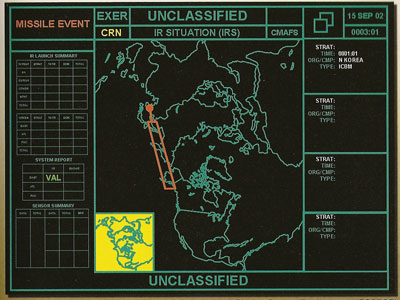 What about long and medium-range air defence radar? Again, it has become apparent to me that even these systems may very competently filter out the kinds of unidentified objects or odd phenomenon that so perplex us. Targets that are initially picked up but subsequently “lost” due to being weak or “intermittent” are eliminated from what is placed on the Air Combat Operator’s display screen; though, some systems may be set to at least allow a “track file” to be created on such a feeble target, but whether anyone is alerted, much less studies such data, is a different matter. Likewise, any targets that appear ridiculously large or intense can also be disregarded if the system operators so wish, and this means especially localised storm cells will go unseen, which is fair enough because that’s what the USAF Air Weather Service (AWS). Furthermore, although the details are classified, apparently some older NORAD-missioned radar networks will not plot targets that rapidly gain or decrease altitudes at velocities considered far beyond what manmade hardware can achieve; again, this rules out the types of alarming UFO events that so many witnesses have described. Then, on top of all this, any UFO events that are left in the system must be actually dealt with by humans. How many frontline personnel have simply missed the odd, short-lived event that may constitute the truly mysterious? A Few Words Can Say A Lot Having said all that, it is still abundantly clear that NORAD has dealt with the UFO matter with regularity and bewilderment. Some systems have be tripped by unusual objects at times. My previous blog posts in this series are testament to that, and nothing can change the fact that there exists hundreds of documents that catch NORAD, or NORAD-associated commands, out. Sometimes it’s the simple stuff that is so telling. For example, what other possible explanation is there for this? Released to Robert Todd under the FOI Act, a NORAD Director of Operations message, referenced as “NORAD/DO/131617Z Nov 75”, stated: “There have been a number of recent reports citing observations of unknown objects. These observations make it advisable, at least for the time being, to record these observations and forward them to this headquarters. NORAD/DO Form 17 will be utilised even though such observations did not result in track establishment. Entries in NORAD/DO Form 17 will be used where appropriate in order to standardize the information for review and summary. Unknown object information will be forwarded in the same manner as for reporting unknown tracks (see NORAD Reg 55-99, Volume 7).” So, again, we see NORAD – the Director of Operations (NORAD) no less – discussing UFO’s. In this example, they are not only taking note of “recent reports citing observations of unknown objects”, but details of such are being filled on top-shelf reporting forms and transmitted to the Operations are of NORAD Headquarters. In my next blog post in this series I will begin detailing the latest developments in regards to actually tackling NORAD directly. This will be a very long process. Much has been discovered. And much remains as mysterious and frustrating as ever. Copied from: UFOs - Documenting The Evidence - Part 4 By Paul Dean |
|
|
UFOs - Documenting The Evidence
Don't Just Believe Me, But Do Look At The Evidence. By Paul Dean. Contact: pj_dean@hotmail.com Wednesday, 18 November 2015 NORAD And The UFO Smokescreen Part 5 This is Part 5 of an ongoing series regarding the North American Aerospace Defence Command (NORAD) and their involvement UFO phenomenon. I have already detailed over a dozen pages of declassified military documents that show us that tangible UFO events have come to the attention of NORAD. The first four posts in my series can be found Part 1, Part 2, Part 3 and Part 4. Dealing With NORAD: An Introduction Dealing with NORAD is not easy. Normally, one would request information under the Freedom of Information Act (FOIA) from an American government agency, or under the Access to Information Act (ATIA) from a Canadian government agency. However, NORAD is a “bi-national” organisation, and the governments involved decided to “exempt” it from either FOIA or ATIA in 1982. However, the US’s Northern Command (NORTHCOM), who partly controls NORAD, can process FOI requests for NORAD records – but everything is on NORAD’s terms. The actual response one gets from the NORTHCOM FOIA and Privacy Act Requester Service Center at Peterson Air Force Base for NORAD records is, except in exceedingly rare cases: “NORAD as a bi-national organization is not subject to FOIA. No search of records will be conducted.” With a statement like that, what hope does anyone have of obtaining NORAD records (be they radar data analysis reports, position statements, operational reports, etc) regarding UFO activity? In due course, I will explore this at much greater length. Despite this information vacuum, a number of NORAD records have been released during the last few decades. In this post I will focus on airspace management and so-called “air breathing” events. In the next post I will focus on space-based issues. Also, much of the following findings, unlike my previous NORAD-related posts, have only been possible due to the ceaseless efforts of British research, colleague and friend David Charmichael. Together we have managed to discover more about NORAD and the UFO matter than has been discovered for some time. Currently, NORAD is divided in eight areas known as “J Directorates”. “J2” and “J3” are of most importance to us. J2 is the Directorate of Intelligence, and J3 is the Directorate of Operations. Furthermore, within J3 there are a number of divisions. We have ascertained that the “Aerospace Operations Division” is responsible for the unknown tracks, and, thus, the UFO matter. This division is known as number “3”. So, when written in official documentation, the whole abbreviation is “J33” or sometimes “J3(3)”. On top of that, there is further breakdown of the J33 area, but the details seem to be classified. We have, however, managed to find out that there is a sub-division of J33 called “Airspace Management” which could be of importance. It is known as the “C” sub-division of J33, written as J33C. We also know of other areas of NORAD that appear to be significant to the UFO matter, as we shall soon see. NORAD Doctrine For “Unknowns” As for official NORAD documentation, two tantalising Instructions I have on file are “NI 10-15 (OPERATIONS) IDENTIFICATION OF AIR TRAFFIC”, dated 31st January, 1996, and “NI10-19 (OPERATIONS) AEROSPACE REPORTING SYSTEM”, dated 12 April 1996. Both Instructions are promulgated “BY ORDER OF CINCNORAD” – The Commander-in-Chief of NORAD. The introduction section of “NI 10-5 (OPERATIONS) IDENTIFICATION OF AIR TRAFFIC” states: “This instruction describes how to identify airborne objects, to include aerial drug trafficking, with the North American Aerospace Defense Command (NORAD) system.” Section 2.1 states: “NORAD regions attempt to identify all detected airborne objects (tracks) approaching the North American Continent…” Below is the first page of NI 10-5 (OPERATIONS) IDENTIFICATION OF AIR TRAFFIC. It may be worth noting that David Charmicahel and I feel that this publication could still be classified, or, was re-classified after a careless release. I have chosen to publish anyway. 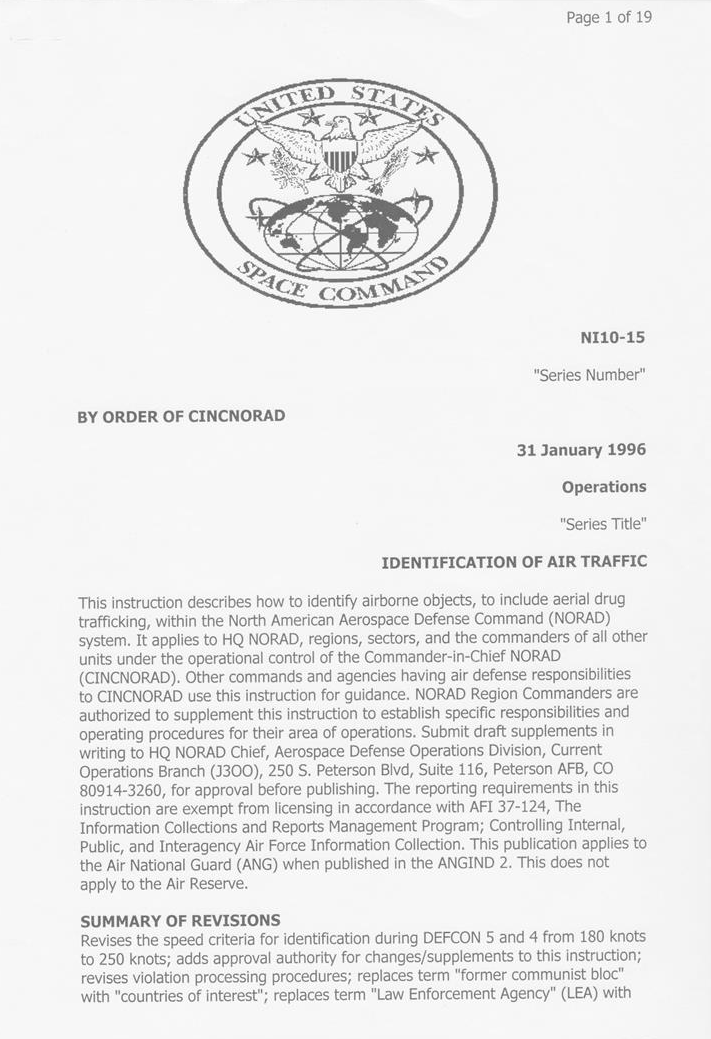 The following pages continue in sectioned point form, and reveal that NORAD – at least in the late 1990’s and into the 2000’s – categorised tracks as either “Friendly” or “Non-Friendly”. These categories are further subdivided into the classifications, “Unknown”, “Interceptor”, “AWACS”, “Special”, “Hostile” or “Faker”. Finally, a track that is awaiting classification is designated “Pending”. Tracks that remain “Unknown” – despite all attempts to identify them – are designated “NORAD Remaining Unknown”, or “NRU”. These events are – or were in the past – rapidly entered on a form known as “NORAD Form 61: Unknown Track Report”. One wonders how many of these “unknowns” have been bona-fide UFO’s. All “Unknown” and “NRU” events have always been classified SECRET. Also, some of the raw data used to be kept in a special NORAD database titled “NORAD Unknown Track Reporting System” and abbreviated to “NUTR”. Discovered by researchers Robert Todd and Barry Greenwood in 1989, NORAD released a general description page of this system after persistent enquiries and FOI requests. The database contained details of seven thousand unknown tracks compiled between 1971 and 1990. Below is an image of the database descriptor page begrudgingly released in 1990. 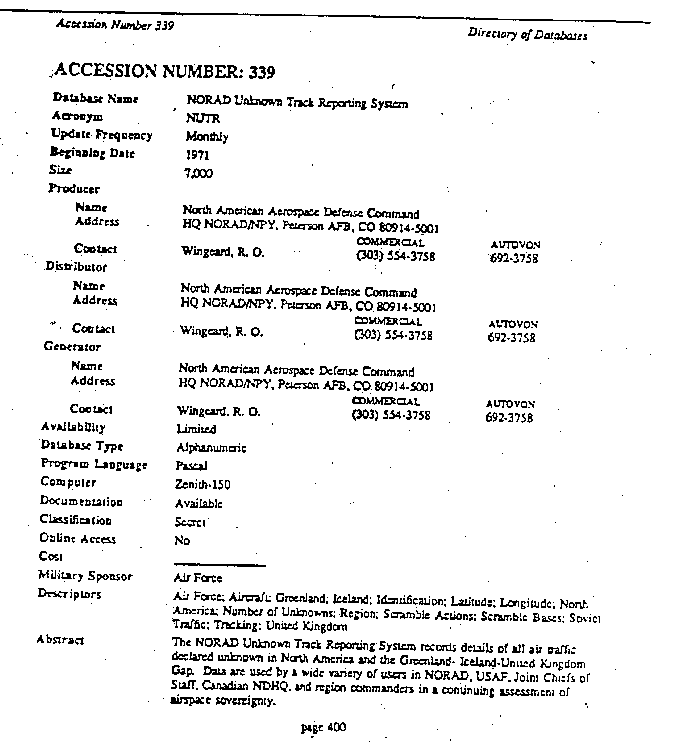 Upon discovering this database, Robert Todd immediately asked NORAD for a release of the contents of the database and was furnished with a series of almost entirely redacted database print outs. The columns were labelled as “HOW ID”, “Sum of Count of TRK #” and “Sum of Sum of # OBJ”. Also, a breakdown for, presumably, “Remaining Unknowns” is visible. But that’s it. The rest of the details – method of detection and verification, altitude and speed of object(s), place of last detection, etc – was blacked out. I am currently asking NORAD to release this old information, and I will discuss that in a later blog post. Below is an example of the database print out of unknown tracks and remaining unknowns. In this page, a total of 95 unknown tracks is listed, with 98 objects detected. This page seems to be results for a single NORAD Region, or, a USAF Air Division with direct data feed to NORAD. The time period is perhaps 6 months or 12 months of events, but we never found out, and NORAD weren’t offering to tell us. 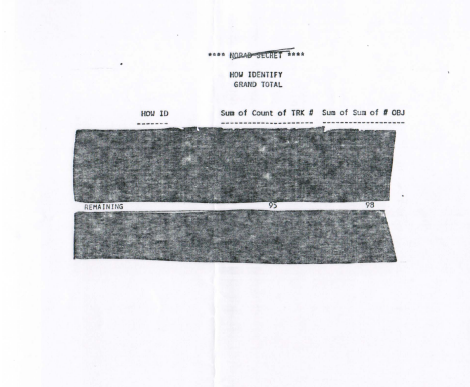 Do NORAD actual study these events further? After years of speculation it turns out that NORAD do indeed investigate these occurrences further, despite having indicated otherwise – and now we have it in black-and-white. Investigating “Unknowns” The above mentioned Instruction states that NORAD’s Air Defense Operations Centre (ADOC) passes relevant unknown track data on to a specialist area. Specifically, section 11.1 states: “The ADOC sends a copy of these reports to the Centre for Aerospace Analysis (N/SPANA).” The Centre for Aerospace Analysis? N/SPANA? We know very little about this organisation, expect that it appears to have been a “joint” area between both NORAD and the old United States Space Command (SPACECOM). In fact, “N/S” (in the organisational code “N/SPANA”) almost certainly stands for “NORAD/SPACECOM”. SPACECOM was absorbed into the US Strategic Command (STRATCOM) in 2002. Interestingly, in 1995, British researcher Armen Victorian received a reply to one of his enquiries to NORAD which stated: “The Aerospace Analysis Directorate of US Space Command does perform analysis on NORAD Unknown Track Reports... ….they perform their analysis under the auspices of their NORAD role, utilising a dedicated NORAD data base.” This information given to Armen Victorian matches what we know from the NI 10-5 Instruction. Maybe the titles “Centre for Aerospace Analysis” and “Aerospace Analysis Directorate” are the same thing, just with lazy or interchangeable title referencing. Furthermore, very recently I have been provided with US government documents that openly state that this area of NORAD continued to exist as late as 2004. It was still called the “Centre for Aerospace Analysis”, and was a duel NORAD-NORTHCOM effort. What does any of this matter? It matters because it proves both NORAD and SPACECOM were jointly handling unknown track data above-and-beyond initial detection and plotting. We only have the 1996 version of NI 10-5 (OPERATIONS) IDENTIFICATION OF AIR TRAFFIC so much of this information is twenty years old, but it is a lot more than we knew before. Vague rumours have abounded for decades that NORAD investigated the UFO issue, but now we have something concrete. Obtaining a current copy of this publication has met with difficulty – and that’s putting it mildly. Either way, it would be very surprising if NORAD were not still passing significant unknown track information – UFO data in its purest form – to technical specialists in dedicated cells. Aerospace Reporting and The Elusive “Form 61” Another NORAD Instruction which directly relates to the UFO matter is “NI10-19 (OPERATIONS) AEROSPACE REPORTING SYSTEM”. It states: “This instruction outlines the procedures to report surveillance, tactical action, and supporting information to Commander in Chief, North American Aerospace Defense Command (CINCNORAD) and subordinate NORAD commanders.” Chapter 6 of this Instruction, titled “Track Reporting”, begins: “6.1. Purpose. Track reporting provides significant air activity information to the NMCC and CINCNORAD through the NORAD Air Defense Operations Center (ADOC). The information is essential for the proper execution of NORAD's mission of warning and attack assessment, air sovereignty and air defense.” Further on, in section 6.2.3. it is stated: “….Information on all Unknown tracks must be immediately electronically forward told. The completed Form 61 will be forwarded NLT 1 hour after final action is completed unless otherwise directed by the ADOC. Information on any track, regardless of classification, perceived to be a threat (e.g. foreign military combat aircraft) or of national interest will immediately be electronically and voice forwarded to the ADOC.” And, just to be sure: “6.2.5. NORAD agencies use Form 61 to record air activity information on Unknown, Special 17 and 21 tracks.” Finally, at the end of Chapter 6, “Track Reporting”, it states: “NOTE: N/SPANA maintains all completed reports for analysis and historical purposes.” This, of course, refers to the old Center for Aerospace Analysis which I have discussed. So, at least some years ago, this “Form 61” – or, full title, “NORAD Form 61: Unknown Track Report” – is an item of the utmost importance. Containing real-time, accurate data on “unknowns”, and studied further by whatever “N/SPANA” became, or possibly a sub-division of the current J33 area of NORAD, these sets of data could be brimming with real UFO cases that need, in my view, to see the light of day. Apparently, however, Form 61’s are kept for only five years. Below is an image of a 1977 Form 61. Obtaining a more recent version has met with difficulty. Now that I have dealt with NORAD’s atmospheric detections and study of unknowns, I will move on to space-based events in the next few blog posts of this series. Beyond that, I will continue to highlight what how NORAD play the game now – in 2015 – with myself and David Charmichael. Much effort has gone into this work, and, like so much in the UFO topic, more questions are raised than there are enough answers for. Copied from: UFOs - Documenting The Evidence - Part 5 By Paul Dean |
|
|
UFOs - Documenting The Evidence
Don't Just Believe Me, But Do Look At The Evidence. By Paul Dean. Contact: pj_dean@hotmail.com Friday, 18 March 2016 NORAD And The UFO Smokescreen Part 6 Previously, in Part 5 of this ambitious series, “NORAD and the UFO Smokescreen”, I discussed North American Aerospace Defence Command’s (NORAD) role in the identification, tracking and categorisation of aerospace activities across North America, and their sophisticated maintenance of “air sovereignty” through well-developed national defence doctrine. Within that complex framework, I demonstrated that UFO’s can be “allowed for”, and, have indeed plagued NORAD in the past. Their own records prove that. Of course, by “UFO” I mean unidentifiable objects or other unusual, solid phenomena; completely distinct from just strayed aircraft or other manmade activities. For readers who are new to this series, my entire Parts 1 through to Part 5 can be found here: Part 1, Part 2, Part 3, Part 4, and Part 5. NORADs Space Surveillance Mission NORAD’s surveillance mission extends into space. In this, Part 6, and an upcoming Part 7, I am investigating their monitoring of space objects – manmade, natural, or possibly otherwise; with the “otherwise” category being UFO’s. It may be surprising to some, but currently NORAD itself does not directly monitor space. Its vast headquarters at Peterson Air Force Base, Colorado, actually rely on incoming streams of data from dozens of various sensor systems that make up the US’s Space Surveillance Network (SSN). The SSN is a “system of systems” rather than a dedicated agency or command. Over thirty ground-based sensors (ultra-long range radar systems, electro-optical telescopes, and optical telescopes) spread around the world constantly detect and track tens of thousands of orbiting bodies above Earths atmosphere. Some of these sites also perform complex categorisation and identification of space objects, including on-the-spot missile warning. Before any of this time-critical space monitoring data reaches NORAD, it is primarily handled by other commands, as we shall see. A United States Air Force’s (USAF) educational publication “Air University Space Primer – 2003” states: “To accomplish the aerospace warning mission, NORAD is responsible for providing Integrated Tactical Warning and Attack Assessment (ITW/AA) of an aerospace attack on North America to the governments of Canada and the US. This is accomplished by using information made available by the ITW/AA system. Portions of that system are under the operational control of NORAD, while other portions are operated by commands supporting NORAD.” Most of the thirty sensor sites that make up the SSN are currently subordinate to the USAF’s massive Air Force Space Command (AFSPC), and, in turn, are controlled by the Joint Functional Component Command for Space (JFCC-Space), which is part of the United States Strategic Command (USSTRATCOM, or just STRATCOM). Furthermore, it is important to note that STRATCOM has only been commanding the SSN since 2002. Before then, it was the US Space Command (USSPACECOM, or just SPACECOM) that controlled the SSN and – like STRATCOM today – provided the wider US military with a full suite of space object orbital data, foreign missile launch detection capability, space object decay prediction, and other final informational products. SPACECOM was absorbed into STRATCOM in 2002 in one of the biggest organisational alterations the US Department of Defence (DOD) undertaken in recent times. Both the old SPACECOM and current STRATCOM have been, and still are, comprised of the Air Force Space Command (AFSPC), the Naval Space Command (NAVSPACOM) and the Army Space Command (ARMSPACECOM). It is from this complex organisational structure that NORAD receives the data it needs to fulfill its mission. The Early Years In 1960, NORAD took control of the “Space Detection and Tracking System” (SPADATS). SPADAT’s was a bold effort to integrate the USAF’s “Space Track” (SPACETRACK) program and the US Navy’s “Naval Space Surveillance System” (SPASUR). SPADATS was originally run by the 1st Aerospace Surveillance and Control Squadron – affectionately known as “1st Aero”. Importantly, the squadron was functionally answerable to NORAD but administratively under the control of the USAF’s Air Defence Command’s (ADC) 9th Aerospace Defence Division (9ADD or “9th Aero Division”). The name of the squadron was changed to 1st Aerospace Control Squadron on 1 July 1962. The unit was inactivated on 21 April 1976, after being first based NORAD’s operational headquarters at Ent Air Force, then the Cheyenne Mountain Complex (CMC), both in Colorado, for nearly two decades. The US Air Force Scientific Advisory Board’s “Report on Space Surveillance, Asteroids and Comets, and Space Debris, (SAB-TR-96-04) Volume I: Space Surveillance”, published 1st June, 1997, stated that the 1st Aero’s mission, in the 1960’s, was to: “...detect, track, identify, and catalog every man-made object in space.” Interestingly, the 1st Aero Squadron was paid a visit by none other than Edward U. Condon, the Director of the USAF’s University of Colorado UFO Study, on Jan 13, 1967, during his tour of NORAD facilities at Cheyenne Mountain and Ent Air Force Base. Condon, and his contract monitor, J. Thomas Ratchford, were briefed by 1st Lt. Henry B. Eckert Jr. and Capt. Dick. A. Cable. It is unknown to what extent the UFO matter was properly discussed. An article appeared in the 9th Aero Defence Division’s internal “Q Point” magazine, No. 23, March 1967 about Condon and Ratchford’s visit to the NORAD facilities. One segment of the article states: “Along with other members of his UFO study team and representatives from the USAF Office of Aerospace research, Dr. Condon was given a briefing at Ent and an orientation tour of the Cheyenne Mountain complex.” It goes on to state that the UFO study team later sent a letter of appreciation to Maj. Gen. Oris B. Johnston, Commander of 9th Aerospace Defence Division, for arranging the visit and information gained. An excerpt of the letter is included in the article: “The excellent briefing at Ent and the orientation visit to Cheyenne Mountain will be invaluable to the Condon Committee in its admittedly difficult study of such an elusive subject as UFO’s. Furthermore, the fine spirit of cooperation evidenced by all of your staff was helpful in demonstrating to the University of Colorado that operational commands such as yours can play an important role in furnishing the kind of information necessary for their study” Below is a rare picture taken of Dr. Condon at the 1st Aerospace Control Squadron, Jan, 1967, from the “9th Aero’s “Q Point” article. 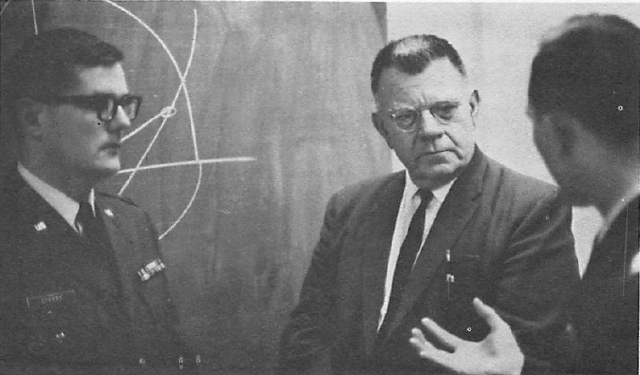 The US House Committee on Science & Astronautics held the famous “Symposium On Unidentified Flying Objects” on July 29th, 1968, several months before the “Condon Report” came out. The discussions during the symposium were much more illuminating about the military tracking of space objects as possible UFO’s than Condon’s work. In fact, the Condon Report barely mentioned the tracking of unidentified objects in space at all, even in its lengthy discussions of using instrumentation to track UFO’s generally. This might be explained by Condon’s negative attitude and the Colorado Project’s heavily flawed work. Or perhaps the NORAD briefing raised too many awkward questions that couldn’t be answered and they thought better to just avoid any mention of it. During the above mentioned July 29th Symposium on UFO’s, Dr. Robert M. L. Baker introduced the subject of space tracking instrumentation, missile detection, and “anomalous phenomena”. It was then he made this astonishing statement: “There is only one surveillance system, known to me, that exhibits sufficient and continuous coverage to have even a slight opportunity of betraying the presence of anomalistic phenomena operating above the Earth’s atmosphere. The system is partially classified and, hence, I cannot go into great detail at an unclassified meeting. I can, however, state that yesterday I travelled to Colorado Springs and confirmed that since this particular sensor system has been in operation, there have been a number of anomalistic alarms. Alarms that, as of this date, have not been explained on the basis of natural phenomena interference, equipment malfunction or inadequacy, or manmade space objects.” Dr. Baker’s mention of the town “Colorado Springs” is a without doubt a reference to NORAD’s Cheyenne Mountain facility. Colorado Springs and Cheyenne Mountain are only a few miles apart. NORAD’s ability, even in the early 1960’s, to track and identify manmade objects was even influencing major Department of Defence (DOD) projects. On 23 May 1960 Deputy Secretary of Defence James Douglas said, “We have embarked on studies to inspect satellites at close range in the interest of our own satellite operations.”. In other words, US decision-makers had agreed that DoD satellites, in future, could be designed to study foreign spacecraft during pre-programmed flybys. Only six months later, this project was given a shot in the arm after a puzzling event occurred at NORAD’s SPADAT Operations Center. Captain Harold D. Getzelman, USAF, in his 1986 thesis “Design Of An Orbital Inspection Satellite”, writes: “This research program for a satellite inspector became known as SAINT. The program got new emphasis in November 1960 when an unidentified space object was detected by the North American Air Defense Command (NORAD). The existing ground based sensors were unable to identify the object, and a program was begun to build better ground-based and space based sensors for space object identification. As the United States attempted to improve its ground surveillance, it also started using reconnaissance satellites” Obtaining archived SPADATS records, which were created by either NORAD or the space component commands like NAVSPACOM, is very difficult. But files, of the millions of pages that must exist, have been released. In briefing paper titled “Information on 1979 Space Activities”, Lt. Col. T. J. O’Rourke, Technical Data and Systems Division, NORAD Combat Operations Center (NCOC) tabled 6 years of “Space Object Data” for NORAD Headquarters. The table, comprising of data dating 1974 through 1979, is scant on detail and merely lists “Objects Catalogued”, “Launches” (detected), etc. This year, we are attempting to access, through the NORAD History Office, somewhat more comprehensive 1970’s records that relate to the above mentioned data. I have imaged the table below. 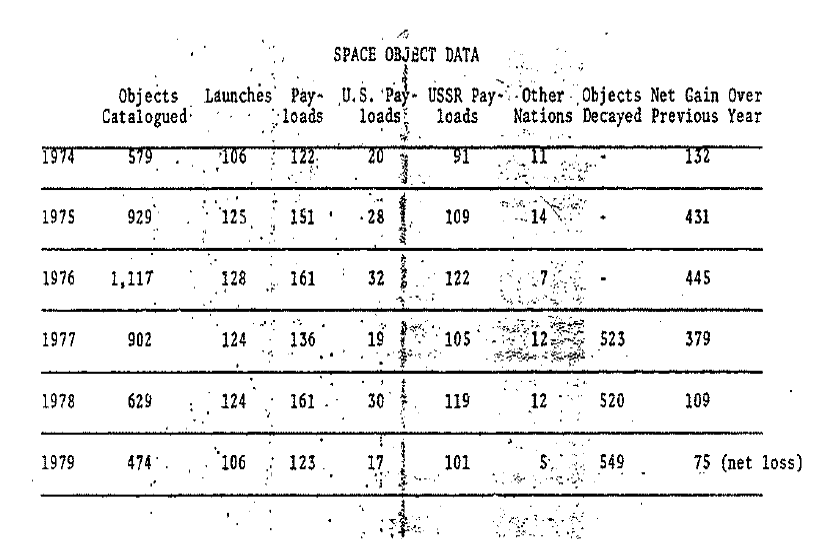 In a USAF sponsored paper titled “Military Uses of Space 1946-1991”, Chapter 2 contains a three page table of information about SPADATs titled “The NORAD Space Detection And Tracking System (SPADATS) 1979”. Originally classified SECRET, three columns are titled “Site”, “Unit” and “Equipment”. Below is the first page of the three page table. 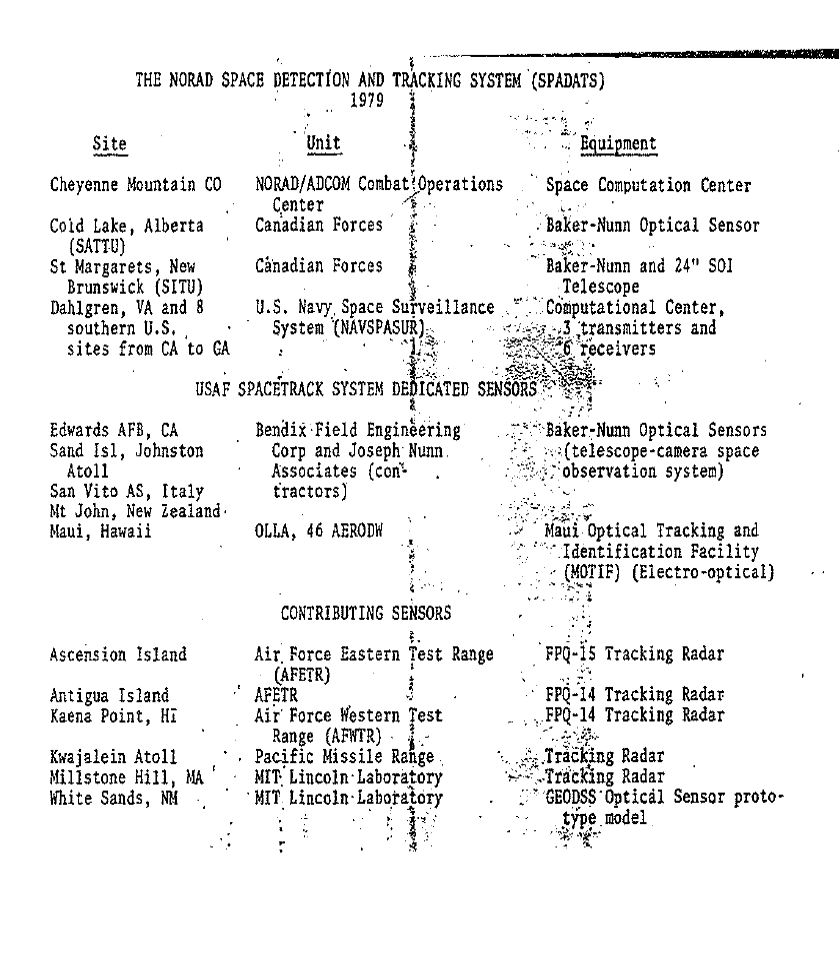 Back To The Future By the 1970’s, NORAD and the entire SSN were capable of not only detection and tracking, but also the rapid assessment of objects with threatening trajectories, plus the creation of computerised catalogues of all discovered orbiting bodies. Also, the light speed data dissemination to different commands and agencies from SSN sites was becoming a reality. One very important issue, which I will discuss in my next blogpost, is that the NORAD and SSN effort mainly focuses on objects that are either orbiting the Earth, or, are on trajectories towards North America, or, are following the expected parameters of foreign missiles that are leaving Earth’s atmosphere and expected to return. On the other hand, as we are well aware, UFO’s – whatever they are supposed to be – are usually reported as erratic and unpredictable, materialising from nothing, or changing shape mid-flight. Thus, should UFO’s – “our” type of UFO’s – be in space, near Earth, and visible using our systems, their signatures, at least up until the 1970’s, were may have been ignored or discarded as unimportant. The reality of this was summed up by Atmospheric Physicist James E. McDonald, probably the greatest individual contributor to scientifically sound UFO research, when he stated: “In almost every monitoring system you set up, whether for defence or scientific purposes, if you don’t want to be snowed with data, you intentionally build selectivity in…. You do not see what you are not looking for. Consequently…the fact that they don’t repeatedly turn up what appear to be similar to UFOs, whatever we define that to be, is not quite as conclusive as it might seem.” Despite the breath-taking capabilities of the SSN and NORAD in the 1960’s and 1970’s, and the significant publicly available information around these capabilities, there is not a lot of evidence that NORAD was actively or deliberately pursuing UFO’s in space, unlike their much more terrestrial air defence role. Having said that, I am quite sure that had NORAD, or anyone else for that matter, watched a really anomalous, unexplainable event play out on the fringes of space – it would have been be immediately considered very highly classified, and there is nothing whatsoever to assume we would be openly able to study it now. In my next post, I will be discussing NORAD’s space surveillance capabilities into the 1980’s and beyond. I will be presenting entirely new information that has never been seen by the UFO community. Following on from then, I will refocus on NORAD’s role in air defence and airspace management – the very place we know UFO’s are being seen and studied. Copied from: UFOs - Documenting The Evidence - Part 6 By Paul Dean |
|
|
UFOs - Documenting The Evidence
Don't Just Believe Me, But Do Look At The Evidence. By Paul Dean. Contact: pj_dean@hotmail.com Saturday, 23 April 2016 NORAD And The UFO Smokescreen Part 7 In Part 6 of “NORAD and the UFO Smokescreen”, I introduced the possibility that the North American Aerospace Defence Command (NORAD), as well as other commands and their space components, had ever detected and tracked what we would ultimately called UFO’s outside Earth’s atmosphere. By UFO’s, I, of course, mean unknown and unidentifiable bodies above-and-beyond manmade payloads or debris, and natural, meteoritic material. I established that NORAD is not in direct command and control of space surveillance systems, but relies on incoming data from the United States Strategic Command (STRATCOM) and the component commands who run the vast Space Surveillance Network (SSN) – over thirty electro-optical and radar sensors distributed the world over. I also established that, if UFO’s do in fact exist, that NORAD and the SSN could, even in the 1950’s and 1960’s, have spotted serious UFO’s events – within technical limitations – and that such events would have been classified. Beyond those facts, much of what we know, at least up until the mid-1970’s, is inconclusive, and sometimes just rumor. However, this very large and complicated jigsaw puzzle was becoming clearer. “Uncorrelated Target”, or, “UCT” During this time, a seemingly new set of terminology came into usage. The most tantalizing of those new terms, which is still in use today, is “Uncorrelated Target”, often shortened to “UCT”. Curiously, the earliest reference to UCTs I have discovered is actually in a 3rd April, 1968, letter from astronomer J. Allen Hynek’s close associate William T. Powers to astronomer Thornton Page. Powers states: “So many statements have been offered publicly to the affect that astronomers don’t see UFOs or photograph unknown objects that everyone believes them, despite their falsity. The result is that when anomalous images show up on films, the tendency is to eliminate the UFO hypothesis simply by not calling them UFO’s, as NORAD eliminated UFO’s by calling them UCTs (Uncorrelated Targets).” This is important as Page had been a member of the CIA’s Robertson Panel on UFO’s in 1953. He was one of the more hostile members towards UFO’s, though he later was involved with the American Association for the Advancement of Science’s (AAAS) UFO Symposium in 1969 which much of the established scientific community had resisted. Below is the page in question. So, what are Uncorrelated Targets? And do they really have anything to do with the UFO phenomenon? When an SSN detection and tracking site discovers what could be new and/or uncatalogued object in space, it is first given the label “Unknown Observation” (UO). If routine attempts to identify the UO fail, it is quickly “tagged” as an “Uncorrelated Target” (UCT) and further attempts are made to associate it with a previously known object which has moved in space, wrongly tagged by the SSN system, or otherwise lost. Publically available information concerning these capabilities is remarkably myriad. For example, NASA’s 2008 “Handbook For Limiting Orbital Debris” states: “Individual SSN sensors are normally tasked each day to track a tailored set of satellites, taking advantage of each sensor’s location and capabilities. If the sensor can correlate the observations with a catalogued satellite, the observations are tagged accordingly and are sent to Cheyenne Mountain Operations Center (CMOC). If the observations cannot be associated with a known object, the observations are sent as Uncorrelated Targets (UCTs). Sometimes these UCTs can be correlated automatically with catalogued objects in Cheyenne Mountain, since the SCC database might have more accurate or more recent orbital data than the sensor. If no correlation is possible, the observations are retained as UCTs and can be compared with other UCTs at a later date by Space Control Center (SCC) analysts.” The Massachusetts Institute of Technology’s (MIT) 1994 Project Report STK-221, titled “Proceedings of the 1994 Space Surveillance Workshop, Volume 1” reads: “….the observations on the object come into Space Defense Operations Center (SPADOC) as Uncorrelated Targets (UCTs)… …UCTs may also enter the system from objects which are new to the network. New satellites can arise in a number of ways, the most obvious being a newly launched satellite or from debris related to a launch. Other processing in SPADOC has specific responsibility for identifying these objects and cataloguing them as quickly as possible. But, on occasion, pieces of debris may be missed and this will eventually result in UCTs entering the system. Other sources of UCTs include manoeuvres or orbital separations.” Openly available information regarding UCTs, like the examples offered above, is extensive. Classified records, however, are regrettably very challenging to obtain. We are doing everything we can, using the Freedom of Information Act (FOIA) and Mandatory Declassification Review (MDR) to pry open hitherto unseen records. What we do know, though, is very interesting. Uncorrelated Target data is, with only one special exception, classified SECRET. UCTs are fall into four “categories”, which are: “Nonsignificant ”, “Significant”, “Critical” or “False”. Furthermore, UCTs fall into two “classifications”, which are either “Near Earth” or “Deep Space”. All UCT data is sent from the initial detecting and tracking site to STRATCOM J3 (Operations), the Joint Functional Component Center – Space (JFCC-S) and the Joint Space Operations Center (JSpOC). NORAD too receives UCT data to fulfil its “Integrated Tactical Warning and Attack Assessment” (ITW/AA) mission, which includes missile warning and target prediction. Some UCTs are undergo a process known as “Space Object Identification” (SOI) whereby UCT data is processed with the aim of actually identifying the object. SOI includes the measuring of a UCTs reflective brightness, determining its radar cross section (RCS), and even eavesdropping on any transmission, if manmade. UCT processing focuses on bodies that are in orbit, or reaching orbit, or have ballistic trajectories expected of missile launches. Thus, UFO’s – if one considers the erratic and unpredictable manner they are said to behave – may be difficult for the SSN to verify or assess. Or, the other possibility is that the SSN is far more adaptive and sensitive than what publicly available information says. How do we know all this? We know, because it can be all found in half a linear foot of military doctrine dating back thirty years. Regulations, Instructions, Manuals, Directives, And Handbooks There exist a number of NORAD, STRATCOM and old US Space Command (SPACECOM) publications which are of great interest. Unfortunately many are classified, and, thus, totally unrealisable, or, releasable only after heavy redaction. My colleague David Carmichael and I are endeavouring to have a significant number of them identified, declassified and released under the Freedom of Information (FOI) Act. Moreover, we are attempting to access current publications as well, which is even more difficult. Despite these barriers, there have been notable successes. Dozens of doctrinal publications – regulations, instructions, directives, guidelines, manuals, handbooks, etc – have been released, if redacted, as we shall see. The earliest publication we have on record that mentions UCT’s is an obsolete SPACECOM regulation titled “US 55-12 Space Surveillance Network (SSN) Operations”, dated 1st June, 1992. The version I have obtained is heavily redacted, but nevertheless contains information essential to the study of possible UFO detection in space. At a hefty 191 pages and classified SECRET by “multiple sources”, UK researcher Dr. Armen Victorian, also known as Henry Azadehdal, briefly wrote about its contents in 1996 after securing a copy. He was almost certainly the first UFO researcher to see it. I obtained my copy from someone else in the defence intelligence community, but I believe that the copy I have on file is the same as what Victorian acquired. My colleague David Charmichael attempted to get the redacted sections released in early 2015, but he was told by the STRATCOM J006 (FOI) desk that they remain currently and properly classified. The unclassified sections of “US 55-12 Space Surveillance Network (SSN) Operations” are, however, still of interest. The first page of states: “This regulation provides policy and guidance for operations of the worldwide Space Surveillance Network (SSN). It applies to Headquarters US Space Command (HQ USSPACECOM); the component commands: Headquarters Air Force Space Command (AFSPACECOM), the Naval Space Command (NAVSPACECOM), and Army Space Command (USARSPACE); the Space Surveillance Centre (SSC), the Alternative Space Surveillance Centre (ASSC); and the SSN sensors…” See below. Despite this regulation being nearly twenty-five years old, the most critical segments to our research are precisely the ones that are heavily redacted. Much can be taken away from what is left, however. There are chapters detailing the roles and responsibilities of the various SSN sensors, the breakup of satellites, tracking and impact prediction, tasking procedures, emergency actions, computer system outages, communications security and other technical matters. The rest, though, is a patchwork of redaction. A good example is the first page of Chapter 6, titled “MANEUVERABLE SATELLITES”, speaks for itself, and I have imaged it below. 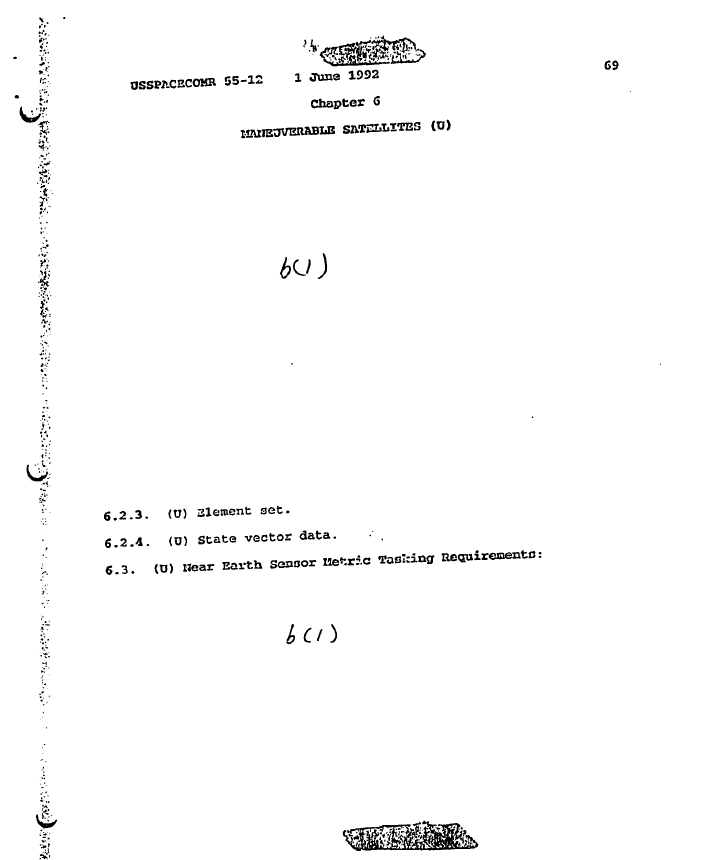 A more legible, and surprisingly more current, publication regarding UCTs is a 13th Feburary, 2004 STRATCOM Command Directive titled “505-1 VOL 2 Space Surveillance Operations – Event Processing”. Chapter 12, titled “UNCORRELATED TARGETS”, begins with: “12.1 (U) General. … The SSN often detects objects on orbit that do not correlate with orbital elements of any catologed objects in the sites databases. These UCTs are important because such objects could be previously undetected or recently maneuvered foreign satellites or missiles with hostile missions…” Additionally, UCT “Categories” and “Classifications” are laid out: “12.2. (U) Categories. UCTs are classified into the following categories: 12.2.1. (U) Nonsignificant UCT. A UCT with an average RCS of less than 1 square meter. 12.2.1. (U) Significant UCT. A UCT with an average RCS 1 square meter or more. Note: Optical sensors consider all UCTs as Significant unless processing a NFL. 12.2.3. (U) Critical UCT. Any UCT which is suspected to be related to a new foreign launch. Specifically, a UCT is “CRITICAL” if it meets one or more of the following criteria:…” This is where the predictable redactions begin. Four “criteria” are listed, but have been entirely blanked out. Additionally, a fourth category of UCT is listed. A “False UCT” is a system error, interference, and other tracking peculiarities that do not represent a real object in space. The page then continues on with a new sub-section describing “UCT Classification”: “12.3. (U) UCT Classification: 12.3.1. (U) Near Earth. Near earth UCT observations and element sets are UNCLASSIFIED. 12.3.2. (U) Deep Space.” Below is an image of this page. In a 7th April, 1994 reply letter to Dr. Armen Victorian, SPACECOM stated: “Copies of any serious UCT event are sent to the Missions Systems Integration Board (MSIB). MSIB is composed of all NORAD and SPACECOM directorates, and senior level representatives from Naval Space Command, Army Space Command and Air Force Space Command.” Furthermore, UCT data is almost always classified SECRET. The STRATCOM “Dedicated SSN Sensors Security Classification Guide”, dated September 30th, 2005, states: “Data collected on satellites with SECRET Element Sets is classified SECRET… … Signature data (e.g. Visual Magnitude Imagery, SOI) taken on deep space Uncorrelated Targets (UCTs) is classified SECRET and becomes UNCLASSIFIED if UCT data is correlated to an unclassified known object.” Going back to the 1980’s, an obsolete SPACECOM publication titled “Uncorrelated Target Processing Handbook” apparently contains additional information about UCT’s. In 1995, Dr. Armen Victorian and researcher Ray Fowler were told by the SPACECOM Public Affairs Office that the handbook was a 1st Command and Control Squadron (1CACS) publication used for space surveillance tasking and guidance. Fowler, in his 1991 book “The Watchers”, states: “…the handbook states that the 1st Command and Control Squadron (1CACS) is responsible for processing all UO’s that are reported to Cheyenne Mountain Space Surveillance Center (SCC) from the worldwide Space Surveillance Network (SSN). This includes UCT’s.” 1CACS was activated on the 1st Dec 1989 and redesignated 1st Space Control Squadron (1SCS) on the 1st of Oct 2001. Organisationally, 1CACS was subordinate to the 1st Space Wing, Air Force Space Command (AFSPC), but functionally supported the Cheyenne Mountain Complex (CMC), and thus, NORAD. An old SPACECOM Regulation published on January the 31st, 1995, titled “USR 10-5 Space Surveillance Network User Support Data”, states: “1CACS is a part of Air Force Space Command (AFSPC) and is collocated with the Space Control Center (SCC). 1CACS performs all routine processing for the SCC” So there is no doubt that 1CACS was at the forefront of UCT detection and processing, thus obtaining their old records is of utmost importance. Using the FOI Act, we are attempting to access the files of the old 1st Space Wing, which will include 1CACS files, and maybe material from other space surveillance squadrons. Another 1980’s-era example of NORAD’s role in processing data on unknown objects in, or near, space comes from the dedicated USAF missile and space warning squadrons. One such squadron is the 6th Space Warning Squadron (6SWS), formerly the 6th Missile Warning Squadron (6MWS). The 6SWS is based at Cape Cod Air Force Station, in Massachusetts, uses one of the world’s most powerful Solid State Phased Array Radar (SSPAR) to ceaselessly scan the skies and space over the Atlantic Ocean for sea-launched ballistic missile launches, plus incoming warheads thrown from intercontinental ballistic missiles (ICBM). Complementing that dedicated role, the 6SWS also supports the SSN in near earth space object identification. An obsolete 30th June, 1986 AFSPC regulation titled “AFSPACECOM Regulation 23-36 Organisation and Mission – Field 6 MISSILE WARNING SQUADRON” states, on Page 1: “1. Mission. To manage operate, and maintain the AN/FPS-115 radar to provide tactical warning and support attack assessment of a sea-launched ballistic missile (SLBM) attack against the continental United States and southern Canada. Provides warning and attack assessment of an ICBM attack against these areas. Warning data are sent to North American Aerospace Defence Command (NORAD), United States Space Command (USSPACECOM), Strategic Air Command (SAC), National Military Command Center (NMCC), and Alternate National Military Command Center (ANMCC). The unit also provides surveillance, tracking and limited space object identification (SOI) support for space surveillance operations.” It is safe to assume that the 6SWS is capable of plotting almost any solid object in its field of view, as long as the size of the object is appreciable. Also clear is that NORAD is in the data loop. Also, note that the “unit also provides surveillance, tracking and limited space object identification (SOI) support for space surveillance operations.”. Whether any truly anomalous UFO events have actually occurred on the screens of the 6SWS is unknown to us. The 6SWS is just one of twenty such space and missile warning squadrons organised within Air Force Space Command (AFSPC). It will be a gigantic task to submit individual FOI requests for detailed information on UFO-type occurrences to all of them; and, as we know, they may not be compelled to release anything substantial. Below is an image of the above mentioned document. Also from the 1980’s is a Cheyenne Mountain Support Group (CMSG) regulation which governed the Cheyenne Mountain Complex (CMC) “Operations Loop” telephone system. “CMC Regulation 700-3 Computer Systems OPERATIONS LOOP”, on Page 1, states: “…The Operations Loop is a secure telephone system cleared for SECRET. All Operations Loop calls are directed to NORAD Command Director (CD) or the USSPACECOM Space Director (SD).” On Page 4, it is stated: “…Information passed over the Operations Loop must be of an operational nature. Be brief, concise, and pass all information to the CD and/or SD. Examples of information passed over the Operations loop include: (1) Event reported via missile tactical warning and attack assessment (TW&AA) system. (2) Unknown tracks. (3) System degradation. (4) Events requiring CD or SD decision or discussion. (5) Events affecting more than one operations center. (6) Space object maneuvers.” Note that “unknown tracks” and “space object maneuvers” are listed as prime “Operations Loop” telephonic conversation topics for the NORAD and SPACECOM Command Directors. Readers familiar with my earlier work will know that an “unknown track” refers to an unknown, unidentified radar detection and subsequent plotting in the atmosphere. In other words: potential UFO activity. As for “space object maneuvers”, one can only wonder what oddities may have discussed over the years. Below is the aforementioned page. In Part 8 of this series I will be discussing how dedicated UFO researchers in the 1970’s, 1980’s and 1990’s, attempted to obtain actual Uncorrelated Target data. Copied from: UFOs - Documenting The Evidence - Part 7 By Paul Dean |
|
|
UFOs - Documenting The Evidence
Don't Just Believe Me, But Do Look At The Evidence. By Paul Dean. Contact: pj_dean@hotmail.com Friday, 27 May 2016 NORAD And The UFO Smokescreen Part 8 In Part 6 and Part 7 of my “NORAD and the UFO Smokescreen” series, I discussed the possibility that the North American Aerospace Defence Command (NORAD), as well as other commands and their space components, may have detected and tracked UFO’s outside Earth’s atmosphere. As I have stated before, I use the term “UFO” to describe unknown and unidentifiable bodies which are above-and-beyond natural and manmade objects. I discussed NORAD’s early efforts, starting in the 1950’s, through to the 1990’s and 2000’s, where the US Space Command (SPACECOM), and then the US Strategic Command (STRATCOM) partially took over space surveillance from NORAD. Possibly the most important issue I discussed was the detection and tracking of unknown bodies in space, usually termed “Uncorrelated Targets” (UCTs), plus the declassified military doctrine that tasks the Space Surveillance Network (SSN) with evaluating them. In this entry in the series, I look at the efforts of UFO researchers, from the 1970’s to the 1990’s, to obtain actual UCT data from NORAD, as well as the space component commands of the United States Navy (USN) and United States Air Force (USAF). It should be noted, that UFO researchers were not aware of the term “Uncorrelated Target” (UCT) until 1994, yet had been in use within the US military since at least 1968. Even without using the exact jargon, some significant information was released. “Uncorrelated Observations” On the 3erd of July, 1978, researcher Robert Todd submitted a Freedom of Information (FOI) request to the (USN) Naval Space Command (NAVSPACOM), or, specifically, the Naval Space Surveillance System (NAVSPASUR) Headquarters at Dahlgren, Virginia. His request asked for: “….all records of, or, relating to Unidentified Flying Objects (UFOs), unidentified flight activity, unknown objects, or unknown tracks, in possession of the Naval Space Surveillance System.”. As discussed previously, NORAD, in the 1960’s and 1970’s, was in control of the “Space Detection and Tracking System” (SPADATS). ‘SPADATS data streams were, at that time, coming partly from the NAVSPASUR network. This was only one of a number of avenues Todd took to obtain data relating to unknown or unidentified objects in space. It should be noted that the term “Uncorrelated Target” (UCT) was probably unknown to researchers at this time, otherwise Todd would have utilised that term. Either way, his FOI request was specific enough that those handling it didn’t attempt to knock his request back due to imprecise terminology. This appear to be the first time a UFO researcher employed the FOI Act to secure space tracking data to look for potential UFO activity in space. Below is a copy of this very early effort. On the 11th of July, 1978, Captain B. F. Czaja, the Commanding Officer of NAVSPASUR Headquarters, formulated a reply to Todd, stating, in part: “The Naval Space Surveillance System is under the operational control of the North American Air Defence Command (NORAD). All space objects detected and observed by the system are reported to NORAD. NORAD regulations require this command to forward all requests for data to its Headquarters in Colorado Springs, Colorado. Your letter therefore has been forwarded requesting NORAD Headquarters to take action. You may expect to hear from them shortly.” This reply explicitly states that NORAD had control over NAVSPASUR’s systems and incoming data. On top of that, NORAD apparently also had issued regulations regarding the dissemination of any unknown space object data. Specifically, “NORAD regulations require this command to forward all requests for data to its Headquarters in Colorado Springs…”. This is very convenient for all involved. Todd’s FOI request was indeed forwarded to NORAD, or rather the USAF’s Aerospace Defence Command (ADCOM), who often handled FOI requests on NORAD’s behalf. On the 11th of August, 1978, ADCOM’s Director of Administration, (ADCOM/DAD) Colonel Terrence C. James, replied to Todd’s request in a lengthy two page letter. I have highlighted significant segments of the letter: “Your letter of 3 July 1978 was received by this headquarters on 17th July 1978. In response to your request, NORAD has no record of or relating to Unidentified Flying Objects (UFOs), unidentified flight activity, or other unknowns being tracked by the Naval Space Surveillance System (NAVSPASUR).” This statement is misleading. One of NAVSPASUR’s missions is to detect and track unknown objects, as we shall see. NORAD is, in turn, a consumer of that data. So the statement “NORAD has no record of… … unknowns being tracked by the Naval Space Surveillance System (NAVSPASUR)” was either extremely poorly thought out, or, intentionally deceptive. The letter goes on to conversely state that: “…approximately 25,000 observations are sent to the NORAD Space Defense Center each day from the sensor system… …Observations which do not directly correlate with a catalogued satellite are referred to as uncorrelated observations.” Furthermore, “Approximately 10,000,000 uncorrelated observations have been accumulated over the past twenty years, of which about 875,000 total uncorrelated observations are from the Naval Space Surveillance System.” And, “As you probably know, we are required under the Freedom of Information Act to release upon request from the public any “reasonably described” material in our possession that qualifies as a record and is not exempt from disclosure. However, the record must exist at the time of request. It is estimated that 340 hours of computer time and 400 manhours in addition to eight boxes of computer paper would be required to create the record of uncorrelated objects detected by NAVSPASUR.” Here we see, for the first time, the term “uncorrelated” in regards to unknown space objects. As I have discussed previously, the term “uncorrelated” is used first when an uncatalogued space object is tracked by ground based sensors. It is either termed an “Uncorrelated Observation”, as we see in the above correspondence, or “Unknown Observation”, which we have seen in other documentation. Both terms are abbreviated to “UO”. If routine attempts to identify the UO fail, it is quickly “tagged” as an “uncorrelated target” (UCT) and further attempts are made to identify it. Whatever the terminology being used, this letter is openly stating that huge numbers of unknown objects in space were being detected and tracked. Generally, it appears that NORAD and the component space commands, like NAVSPACOM, were looking for objects that were in orbit, or, missiles that appear to be threatening the North American continent. However, without any UO data, or studies of such data, researchers couldn’t be sure. The two page letter from ADCOM/DAD to Robert Todd is imaged below. Robert Todd wasn’t dissuaded by the scope of this response, and boldly replied on the 21th of August, 1978, asking: “Would you please provide an estimate (in dollars) regarding what would be needed to obtain copies of the 10,000,000 uncorrelated observations made by the NORAD Space Detection and Tracking System (SPADATS)? What kind of information is retained on these observations? Does the information include detail on the objects’ speed, course, altitude, size and maneuvers (if any)? Would ADCOM be willing to undertake a project to make these uncorrelated observations available if assurances were given that all expenses incurred by ADCOM would be reimbursed? Am I correct in assuming that ADCOM would insist on payment prior to processing such a request?” This, I believe, is one of the most ambitious requests for information that I have ever seen. ADCOM’s Directorate of Administration (ADCOM/DAD) must surely have been surprised by Todd’s direct and determined questions. This letter is imaged below. “1. In response to your letter of 21 August 1978, the following information is provided: a. To create a record of the approximately 10,000,000 uncorrelated observations accumulated over the past twenty years would cost approximately $155,455. b. The data retained on observations include such parameters as: sensor making the observation, time of observation, elevation from the sensor, and slant range from the sensor. Depending on the sensor, other data may be included, but a single correlated or uncorrelated observation from any sensor would never have information on the objects size or maneuvers. 2. We are unable to undertake the project to create a record for you because of the operational impact such a project would have on computer requirements.” Needless to say, a cost of $155,455 was well beyond the means of a civilian researcher like Todd, and, unsurprisingly, he dropped his FOI action on the matter. Of interest, it appears that ADCOM, in its letter to Todd, was dishonest when they stated NAVSPASUR “...would never have information on the objects size or maneuvers”. In the Nov 26th, 1962, edition of “Aviation Week” there is an article describing the early NAVSPASUR system. It states that the huge radar fence system does measure satellite “size”. This was with the capability of the technology sixteen years before ADCOM’s letter to Todd. The article states: “...the setting of the automatic gain control... ...indicates received signal strength. This enables operators to estimate the size of the satellite, taking into account the satellite's altitude and distance from the station.” The above detailed ADCOM letter to Todd is imaged below. The Good Doctor, And Some Surprising Releases Twelve years passed before another UFO researcher tried to obtain unknown space object data from the US military. Dr. Henry Azadehdel, better known as Dr. Armen Victorian, submitted an FOI request to NAVSPASUR on the 5th of April, 1990, for “unknown observations” detected by the NAVSPASUR network. Previously, when Robert Todd had attempted to obtain the same data, the FOI request was forward to NORAD to handle. But this time, NAVSPASUR directly handled Dr. Armen Victorian’s, and furnished him with a sample of two months’ worth of “unknown NAVSPASUR observations” data. In a May 2, 1990 reply, USN Commander R. C. King, Executive Officer of NAVSPASUR’s Dahlgren, Virginia Headquarters, stated, in part: “The mission of NAVSPASUR is: to maintain a constant surveillance of space and provide satellite data as directed by the Chief of Naval Operations and higher authority to fulfil Navy and national requirements. NAVSPASUR is comprised of equipments performing three operational functions. First, data acquisitions of satellites if performed by a complex of three transmitting and six receiving stations located on a great circle across the southern United States. Next satellite detection and correlation with predictions is performed by digital computers at the NAVSPASUR Headquarters in Dahlgren, Virginia. Lastly, data storage, retrieval, and updating of orbiting elements of past, present, and future paths of all known orbiting objects are performed by the computer center at NAVSPACSUR Headquarters.” Curiously, Commander R. C. King’s letter goes on, somewhat with context, to state: “The address is: HQ USSPACECOM/J3SOS Cheyenne Mountain Complex Peterson AFB, Co. 80914-5000” ATTN: Lt. Dupourque” As we know, the United States Space Command (USSPACECOM), or just SPACECOM, was responsible, by the late 1980’s, for the integration of space object detection data which streamed in from NAVSPASUR and the USAF’s equivalent system, SPACETRACK. Simply put, NORAD’s old 1960’s and 1970’s-era “Space Detection and Tracking System” (SPADATS) had been replaced by SPACECOM’s Space Defence Operations Center (SPADOC). SPADOC was partially run by the 1st Command and Control Squadron (1CACS). In the mid 1990’s, SPADOC was absorbed into SPACECOM’s Space Surveillance Center (SSC). In regards to the above letter, Why Dr. Armen Victorian was given a specific SPACECOM postal address is unclear, especially considering NAVSPASUR had attached six pages of “unknown NAVSPASUR observations” dating from the 2nd of March, 1990 to 1 May, 1990. Below is a copy of the reply letter. More importantly, published for the first time, I have imaged below a sample of the six page enclosure furnished to Victorian. This is actual “unknown observation” data, or, now properly and publicly as “UCTs”. What it comprises of is tabulated data showing, “Date” and “Time” in the first two columns, then “Latitude” and “Longitude” in the next two columns. The fifth column is listed as “Right Ascension of Objects”, and the sixth column is “Height”. The seventh column refers to “Stations Participating”. The final two columns do not have headings, so we don’t know what they refer to. Reams of numbers like this, of course, do not tell us anything about the UFO phenomenon. All we can deduct from this is that the NAVSPASUR sites are consistently detecting bodies not in their databases. Having said that, UFO research often starts with something basic or raw. We don’t know if Victorian attempted further requests for more focused information, but undoubtedly it would have been worth asking NAVSPASUR for any, say, records related to the analysis of especially unusual space observations. Victorian’s whereabouts are unknown, as is his great body of work. Also in 1990, Dr. Victorian was engaging the USAF’s Air Force Space Command (AFSPC). In a July 12th, 1990, FOI request, Victorian asked AFSPC for information relating to unknown space object detection and tracking. Specifically, it appears that he was looking for any releasable records regarding AFSPC’s “Ground Based Electro-Optical Deep Space Surveillance System” (GEODSS). GEODSS is a system of five space tracking sites under the control of AFSPC, which still survive today as part of the Space Surveillance Network (SSN). TRW Defence and Space System Group, in its “GEODSS: HEAVENLY CHRONICLER” handbook, published in April, 1980, describes a GEODSS site as: “…a complex system of wide-field telescopes, extremely sensitive television cameras and radiometers coupled with modern signal processors and digital computers, and some very sophisticated software... …The system can detect objects 10,000 times dimmer than the naked eye can see.”. Far more recent material on the GEODSS network is available, but this early example of publicly disclosed information is the only type of thing Dr. Victorian had to go on at the time when corresponding with AFSPC. Whatever his sources, he apparently requested numerous records in the one FOI request, and each record was handled somewhat separately. In a 21st August, 1990 reply from Sharon A. Law, Acting Chief, Records Management Division, Directorate of Information Management, AFSPC, it was stated, in part: “This replies to that portion of your July 12, 1990 Freedom of Information Act request pertaining to Information (Scientific) on Ground Based Electro-Optical Deep Space Surveillance System, capable of detecting 23,000 miles or so into space.” With that, Victorian was released a copy of a training handbook titled “Ground Based Electro-Optical Deep Space Surveillance System, Phase 1 Training Handbook” and a copy of an AFSPC 3rd Space Support Wing (3SSW), “Fact Sheet” on the GEODSS system. Victorian mailed a copy of all this material to researcher Barry Greenwood, including the above mentioned FOI letter, which I have imaged below. Also, Victorian included a handwritten message for Greenwood, which reads: “I have written to them on the missing pages + figures. Last time I spoke to Bob Kirk, he told me, they have to review those pages to see whether they can release. However, I found this pamphlet quite revealing. The technology involved is science fiction capability. Regards, Henry, 30-8-90” Indeed, the “Ground Based Electro-Optical Deep Space Surveillance System, Phase 1 Training Handbook” furnished to Dr. Victorian is missing six pages out of forty-two. Maybe it was never realsed. Imaged here is the front page of the handbook. 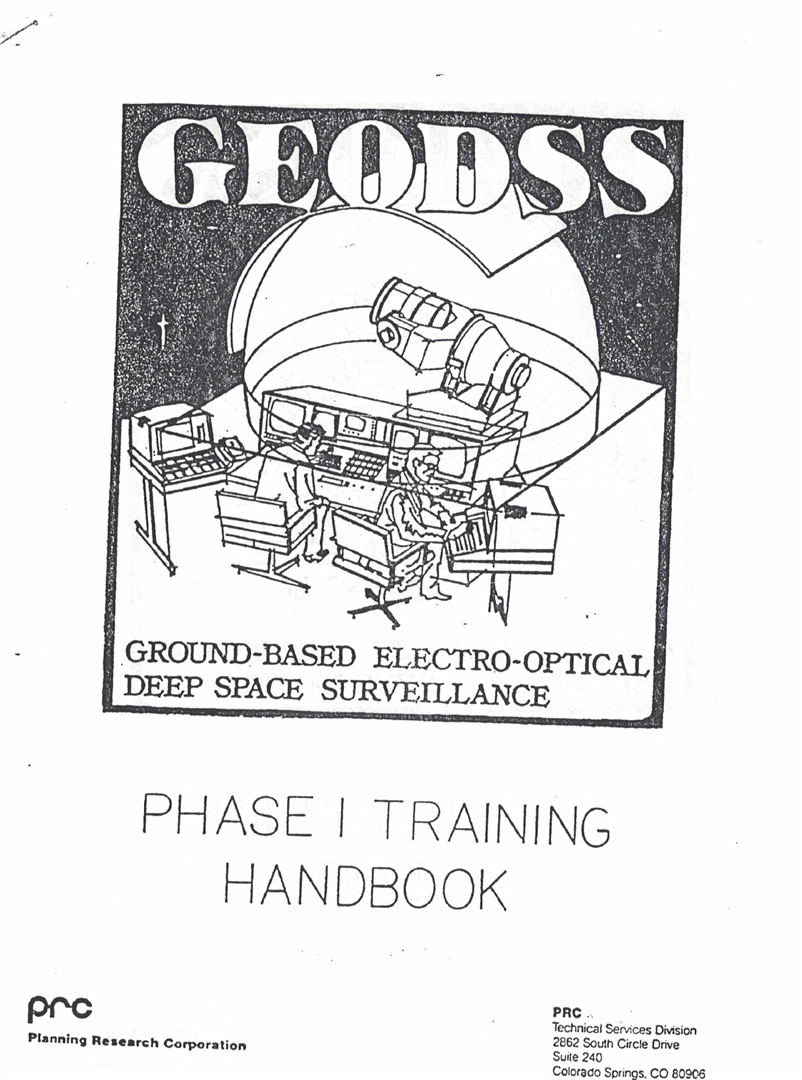 Neither the “Ground Based Electro-Optical Deep Space Surveillance System, Phase 1 Training Handbook” or the AFSPC 3rd Space Support Wing (3SSW), GEODSS “Fact Sheet” describes anything specifically related to “our” kind of UFOs. GEODSS is designed to initially detect and subsequently track orbiting, manmade space objects, or, objects that resemble missiles which threaten the United States and her allies. When a true unknown object is seen, it is “tagged” as a “UO”, and urgent assessments regarding its vital movement parameters. If it can’t be matched to a known object that has recently moved or been lost, it is labelled, as I have discussed at length, a “UCT”. UCT’s are considered as a top priority within NORAD and STRATCOM, and are evaluated accordingly. This process is vital for the defence of the United States. Of course, there is every possibility that a UFO – something that totally fails to match anything like an orbiting body or an incoming missile payload – could be detected and tracked by multiple GEODSS sites, as well as the other sites that make up the SSN. In Part 9 of this series, I will continue discussing the hitherto unseen efforts by UFO researchers in years gone by, as well as introduce some related topics which will finally lead into the work that is being currently achieved by myself, and colleague David Charmichael, today. Copied from: UFOs - Documenting The Evidence - Part 8 By Paul Dean |
|
| UFOs - Documenting The Evidence Don't Just Believe Me, But Do Look At The Evidence. By Paul Dean. Contact: pj_dean@hotmail.com Sunday, 10 July 2016 NORAD And The UFO Smokescreen Part 9 In Part 6, Part 7 and Part 8 of my
“NORAD and the UFO Smokescreen” series, I discussed the possibility that
the North American Aerospace Defence Command (NORAD), as well as other
commands and their space components, may have detected and tracked UFO’s
outside Earth’s atmosphere. I discussed NORAD’s early efforts, starting
in the 1950’s, and brought us through to the 1990’s and 2000’s, where
the old US Space Command (SPACECOM), and then the US Strategic Command
(STRATCOM) partially took over space surveillance from NORAD. I have
introduced the core topic of “Uncorrelated Target” (UCT) detection and
tracking, and highlighted examples of declassified military doctrine
that relates to such events. I also presented the work of UFO
researchers in years gone by to obtain space object tracking data, and
will continue to do so in this entry in the series, plus raise some new
topics which are key to understanding NORAD’s role in space, and what it
means for UFO research. As I have stated before, I use the term “UFO”
to describe unknown and unidentifiable bodies which are above-and-beyond
natural and manmade objects.
“Unknown/Uncorrelated Event Report”, or, “UER” It is apparent, at least in the 1990’s, that “Uncorrelated Target” (UCT) was not the only term to describe an unidentified object in space. As we know, when the Space Surveillance Network (SSN) detects and tracks a new or uncatalogued object in space, it is labelled an “Unknown Observation” (UO). If routine attempts to identify the UO are unsuccessful, it is “tagged” as a UCT. In the mid-1990’s, there were rumours within the UFO community that SPACECOM and NORAD were designating the oddest space events with a special term called “Event Reports”. Either “Unknown” or “Uncorrelated”, any discussion of these “Event Reports” in official literature has so far been impossible to find, with the exception of two pieces of correspondence with UFO researchers. Veteran UFO researcher Walter Webb, while studying the 1995 American West Airlines Radar-Visual UFO case in New Mexico, asked a number of questions of NORAD in a November 27th letter. Nearly a month later, on the 19th of December, 1995, S. W. Johnson, of NORAD/USSPACECOM Directorate of Public Affairs, replied to Webb. Their letter, in part, stated: “NORAD uses the term “Unknown Track Report” (UTR) for events within our atmosphere and the United States Space Command (USSPACECOM) uses the term “Uncorrelated Events” for objects in space. UTR’s are considered sensitive and are not releasable to the public. Uncorrelated Event Reports (UERs) are classified SECRET until downgraded by proper authority. The term “UFO” has not been used by this headquarters since the “Blue Book” was permanently closed in 1974.” Note the passage of text which says, “…uses the term “Uncorrelated Events” for objects in space. UTR’s are considered sensitive and are not releasable…”. Also, the Public Affairs officer mistakenly states that Project Blue Book was closed in 1974. This is incorrect. 1969 saw the closure of the flawed USAF program of UFO report collation and investigation. Errors like this are not unheard of in FOI correspondence. Maybe the terms “Uncorrelated Events” and “UTR” was, in this case, a simple blunder? I have imaged Page 1 of the FOI reply to Webb below. However, four years later, the term was used again. On August the 27th, 1998, Robert Todd submitted an FOI request to SPACECOM for various records. In it, he asked for a search of NORAD/SPACECOM Command Directors Logs for: “...entries therein pertaining to Unidentified Flying Objects (UFOs), Fireballs, Meteors, Unknown Event Reports (UER), and Uncorrelated Targets (UCT)…” On the 22nd of Feburary, 1999, Todd was sent a reply from SPACECOM’s Colonel Rodney S. Lusey. The Command Directors Log entries that Robert Todd had asked for were totally denied. I have imaged Page 1 of the FOI reply to Todd below. Either way, Robert Todd had clearly asked for material related to “Unknown Event Reports”, so he must have known that the term was used by SPACECOM and/or NORAD in some way. Todd was the most prolific FOI requester in history for records related to UFO’s. His vast correspondence with government agencies is slowly becoming available to researchers, and, when added up, numbers in the thousands of pages. To sum up, during a four year period we see official correspondence involving both Walter Webb and Robert Todd that uses the terms “Uncorrelated Event Reports” and “Unknown Event Reports”. Both are abbreviated to “UER”. As I alluded to above, we cannot find anything in any SPACECOM or NORAD doctrine on these terms. So we do not know the validity of the information beyond what I have highlighted. It is also worth noting that in the above mentioned reply letter to Todd, Col. Rodney S. Lusey partially released a copy of a special SPACECOM regulation titled “USR 55-20, Warning Verification of Hostile Space Events”. Researcher David Charmichael and I recently secured a copy of this publication through the US Strategic Command (STRATCOM) in the hope it related to unknown objects in space. Promulgated on the 31st of January 1990, and classified SECRET, the first page states: “This regulation establishes procedures to provide timely and accurate status reporting, warning and verification of hostile space events to National Command Authorities (NCA), collateral agencies, space system owners and operators, and defense forces from Headquarters, US Space Command, Space Defense Operations Center (SPADOC).” This looked encouraging, but unfortunately our review of “USR 55-20, Warning Verification of Hostile Space Events” does not reveal anything specific about the detection or tracking of unknown objects in space. “Unidentified Satellite” or “USAT” In the 1980’s and 1990’s, some “Uncorrelated Targets” (UCT), after already being tagged as either “Critical” or “Significant”, were sometimes further labelled “Unidentified Satellites”. Abbreviated to “USAT”, the term appears in the obsolete SPACECOM regulation “US 55-12 Space Surveillance Network (SSN) Operations” dated 1st June, 1992. On Page 113, under point 17.7, a definition for “Unidentified Satellites” is given: “Unidentified Satellite (USAT). A USAT element set is an analyst element set generated by the SSC consisting of at least three tracks of UCT’s from three separate sensors (when possible) that cannot be associated to any space launch. This object would be published by SSC as an 87000 through 88999 analyst satellite.” This is saying that any UCT that appears, preferably, on three different SSN sensors, is labelled as a USAT. There is nothing about this which would point towards USAT’s being UFO’s. This term is unlikely used today, as I cannot find any mention of it in more recent doctrine. Obtaining detailed records regarding USAT’s would be useful, however. STRATCOM is currently unable to locate old SPACECOM records, as I have discussed, so it is unlikely we will get the chance. The relevant page of the above mentioned SPACECOM regulation is imaged below. “Fast Walkers” The UFO community have, for some time now, latched on to a curious term. That term is “Fast Walker”, and UFO enthusiasts have variously claimed that Fast Walkers are either alien spacecraft zooming around Earth, and, that they are detected in space by American reconnaissance satellites. Another claim is that the topic is very highly classified. Interestingly, there is actually some truth to these fantastic assertions. Firstly, “Fast Walker” is an official term. It wasn’t just made–up by enthusiastic UFO buffs. Secondly, it does indeed refer to objects in space whose identity may not, at least initially, be known. Thirdly, the topic is actually very highly classified. Almost no documentation has ever been released, and no public statements have ever been made. In fact, there appears to be a whole “Fast Walker Program”. Beyond those points, nothing I can verify supports the more outlandish claims that these detections are other-worldly spacecraft. The issue, however, worth discussing. The Defence Support Program (DSP) is a long-life, space-based network of satellites that use infrared detectors to sense the intense heat invariably associated with missile launches, nuclear detonations, and even the afterburners of combat jets. The Federation of American Scientists (FAS), says: “DSP satellites have been the space-borne segment of NORAD’s Tactical Warning and Attack Assessment System since 1970. The satellites feed warning data, via communications links, to NORAD and US Space Command early warning centers within Cheyenne Mountain. These centers immediately forward data to various agencies and areas of operations around the world. Members of the Air Force Space Command 50th Space Wing's 1st Space Operations Squadron provide command and control support for the satellite.” Sometimes a DSP satellite will detect and track an object in space, and this is where the term “Fast Walker” appears. Fast Walkers appear to be foreign satellites that briefly come into the field of view (FOV) of DSP satellites. Jeffery T. Richelson, in his indispensable 1999 book, “America’s Space Sentinels: The History Of The DSP And SBIRS Satellite Systems”, states, on Page 107: “Most Fast Walkers have been routine observations of foreign spacecraft. The infrared readings obtained by DSP, resulting from the reflection of sunlight off the spacecraft, provided analysts at the CIA, DIA and Air Force Foreign Technology Division (now the National Air Intelligence Center) with data on spacecraft signatures and movements. Such data allowed analysists to estimate where the satellite was going and its mission.” The reason the UFO community latched on to is due to the claims of UFO researcher Joe Stefula in the mid-1990’s. In 1996, for example, Stefula stated: “At 1126Z, 5 May, 1984, a DSP platform detected an object with heat in the 9,000 KW/SR range coming out of deep space and passing within 3 kilometers of the DSP. Its star tracking telescope first detected the object. The observation lasted nine minutes... …A detailed investigation failed to explain what caused the sensor reading, other than a real object of some type.” However, Jeffery T. Richelson reported that there was a more mundane explanation. In his above-mentioned book, he states: “The object that came perilously close to Flight 7 [DSP satellite] was not a UFO but a signals intelligence spacecraft, probably the VORTEX satellite launched on Jan. 31, 1984, from Cape Canaveral by the publicity-shy group of terrestrials who constituted the National Reconnaissance Office. The spacecraft in question, had failed to enter its proper geostationary orbit.” Obtaining records regarding Fast Walkers has been extremely hard. But there are a few examples. Air Force Space Command (AFSPC) regulation 55-55, dated 30th of December, 1992, and titled “Operations – Space Based Sensor (SBS) Large Processing Stations (LPS) And European Ground Station (EGS) Tactical Requirement Doctrine (TRD)” describes, on Page 38, a Fast Walker as a “detection of a space object in satellites FOV”. I have imaged the page below. There are two unclassified USAF theses, both written for the Air Force Institute of Technology (AFIT), that discuss Fast Walkers. Neither discusses UFO’s. The earliest one, published on June 20th, 1989, is titled “Orbit Determination of Sunlight Illuminated Objects Detected by Overhead Platforms”, and was written by Captain Richard P. Osedacz. He states in his introduction: “Due to the multitude of objects in the geostationary belt, overhead platforms are being saturated by reflected sunlight from orbiting objects passing through the ’sensors field of view. These objects, known as fastwalkers, are creating a suspicion that some uncatalogued objects may exist or are being cross-tagged within the data base. The North American Aerospace Defense Command (NORAD) tasked the Foreign Technology Division, Flight Performance Division (FTD/SQDF) to analyze these 15 to 30 minute data tracks and determine the element set, identifying the object.” I have imaged the relevant page below. The other thesis, published in March 2008, and written by US Army Captain Bradley R. Townsend, likewise discusses the detection and imaging of Fast Walkers. Titled “Space Based Satellite Tracking and Characterization Utilizing Non-Imaging Passive Sensors”, Cap. Bradley’s introduction states: “Satellite based sensors looking down at the Earth’s surface occasionally observe reflected light from an object passing through the image which is moving too fast relative to the background of the image to be located within the atmosphere. These objects are commonly called fastwalkers. This term refers to any orbital object seen passing through the field of view of an Earth observing sensor which is suspected of being in orbit.” To sum up, we do not know much about Fast Walkers or the associated “Fast Walker Program”. But what we do know, from the available, if limited, information, is that America’s DSP satellites sometimes detect bright sunlight which is reflected from satellites that rapidly pass by. We don’t even know if the program, or even the term “Fast Walker” is currently used. The UFO community still, however, claim that this issue is somehow part of a cover-up, by NORAD, to monitor UFO’s as they travel about. This is simply speculation, and has no basis in reality. It is possible, of course, that if UFO’s do exist in near-Earth space, then they could be detected by dedicated space assets and labelled a “Fast Walker”. What happens after that is unknown, except that more investigations would surely be embarked on. But, for now, the assertions of some UFO buffs cannot be substantiated at all. A Long Way To Go Having said that, it is still interesting to see the term “Unidentified Flying Object” or “UFO” appear in declassified NORAD doctrine or, similar doctrine published by the old SPACECOM, and its successor STRATCOM. These terms were supposed to rapidly fall out of favour with the USAF’s closure of Project Blue Book, in 1969. A SPACECOM publication, promulgated on 30 June, 1994 clearly references “UFO” as translating to “Unidentified Flying Object”. Titled “USSPACECOM Lexicon”, and coded “UPAM 13-1”, the document is a 160 page booklet of acronyms, and their definitions, which were used by SPACECOM in the 1990’s. Page 152 contains both the terms “UCT”, and, “UFO”. I have imaged the page below. 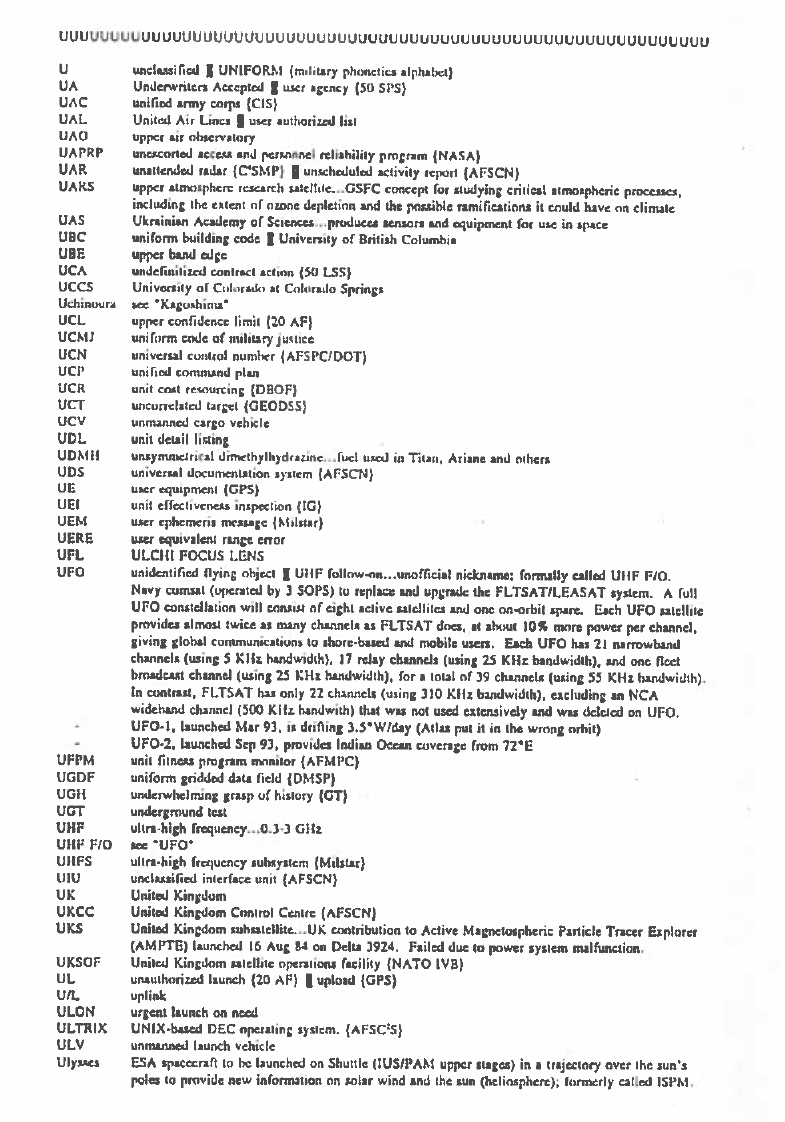 Note that the term “UCT” is listed, and its translation is, as we know, is “Uncorrelated Target”. Also, the definition has the term “GEODSS” in brackets behind it. This refers to the “Ground Based Electro-Optical Deep Space Surveillance System”. I have discussed previously how this network of special surveillance cameras is particularly adept at picking up unknown objects in space. On the same page, the term “UFO” is listed. While “UFO” has two definitions, the first one listed is “Unidentified Flying Object”. This means that someone, somewhere, in SPACECOM, and I dare say NORAD too, was using the fabled term. Seeing as UFO’s are not part of the US military’s official responsibility, one can only wonder why the term is listed in a once classified document. If researchers had more access to old NORAD and SPACECOM documents, many of these issues would be solvable. A good example of this frustrating roadblock has been our search for records created by the 1st Command and Control Squadron (1CACS). Only one record has ever been declassified and released. It is a three page “mission directive” titled “Air Force Space Command Mission Directive – Organization and Mission – Field”. Dated 1st of July, 1994, and coded “AFSPCMD 5-73010”, it describes the mission, organisation and responsibilities of 1CACS. The squadron was, until its reorganisation in 2001, organizationally subordinate to Air Force Space Command (AFSPC), but functionally supported the Cheyenne Mountain Complex (CMC), and hence, NORAD. They were responsible for tasking the Space Surveillance Network (SSN), and processing incoming space surveillance data. Vast records must have been created by 1CACS, but STRATCOM, who now are in administrative control of 1CACS records, cannot locate, other than the above mentioned document, a single record of this squadron. Page 1 of “AFSPCMD 5-73010” is imaged below. To date, the efforts of past researchers reveal little evidence that UFO’s are being detected and monitored in space by NORAD or the old SPACECOM. This doesn’t mean that it hasn’t happened. The topic would be highly classified. In my next entry into this series I will highlight current work being done by myself, and my colleague David Charmichael, to obtain more information on this intriguing matter. We have seen, I can happily say, that some records have been released to us after years of complex FOI work and appeal actions. Copied from: UFOs - Documenting The Evidence - Part 9 By Paul Dean |
|
| FAIR USE NOTICE: This page contains copyrighted material the use of which has not been specifically authorized by the copyright owner. Pegasus Research Consortium distributes this material without profit to those who have expressed a prior interest in receiving the included information for research and educational purposes. We believe this constitutes a fair use of any such copyrighted material as provided for in 17 U.S.C § 107. If you wish to use copyrighted material from this site for purposes of your own that go beyond fair use, you must obtain permission from the copyright owner. | |
|
|
